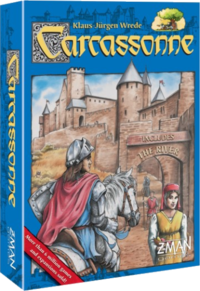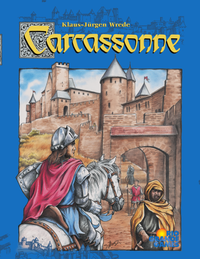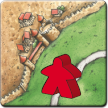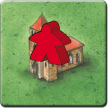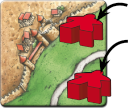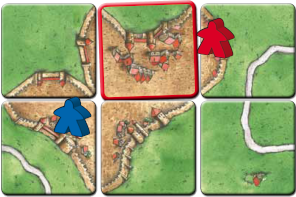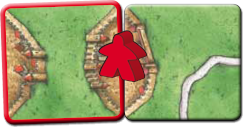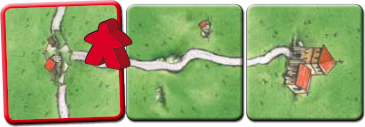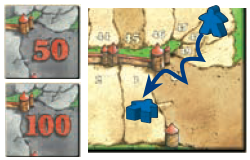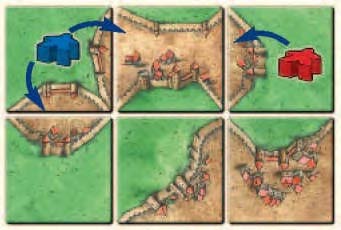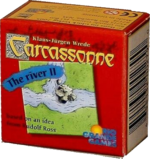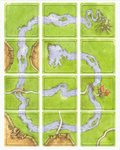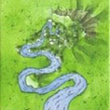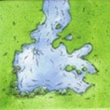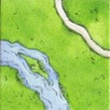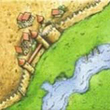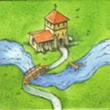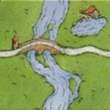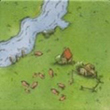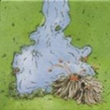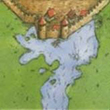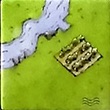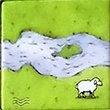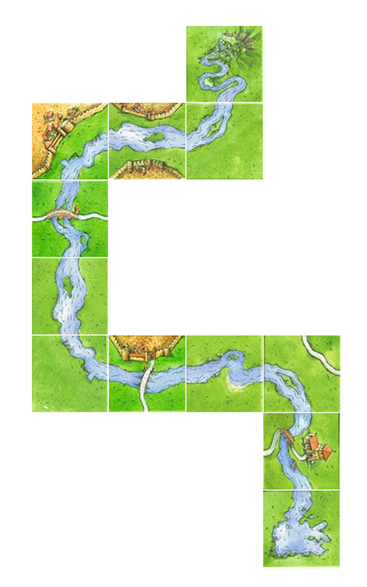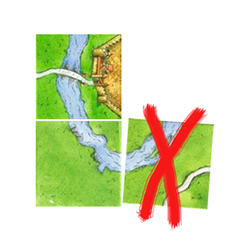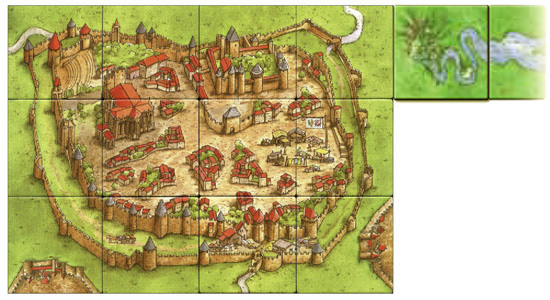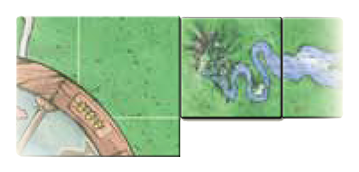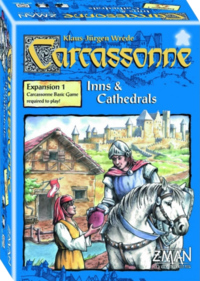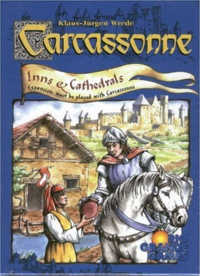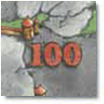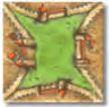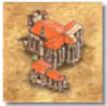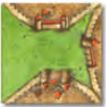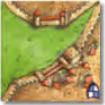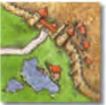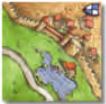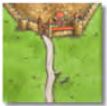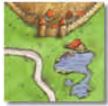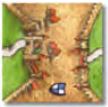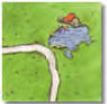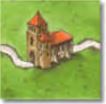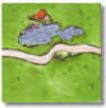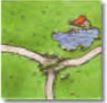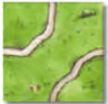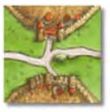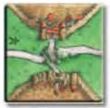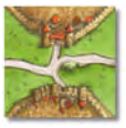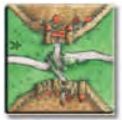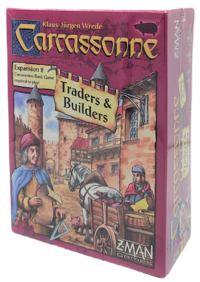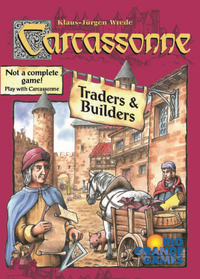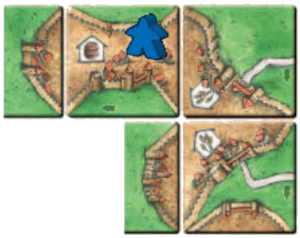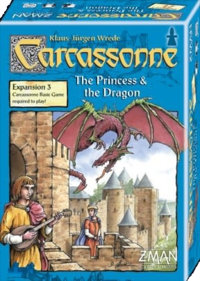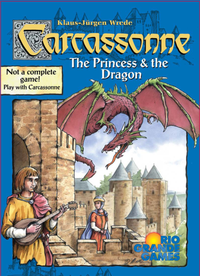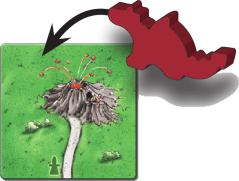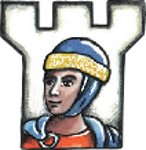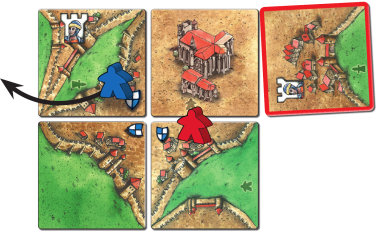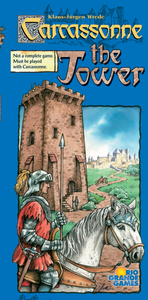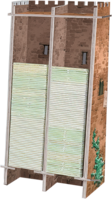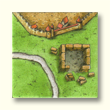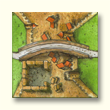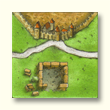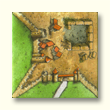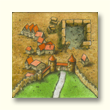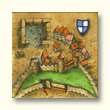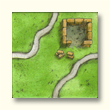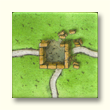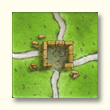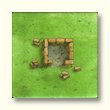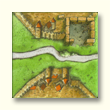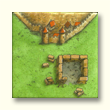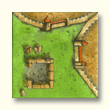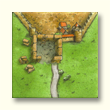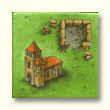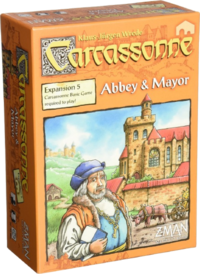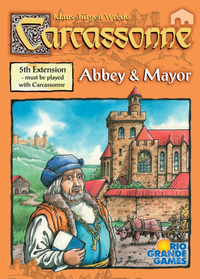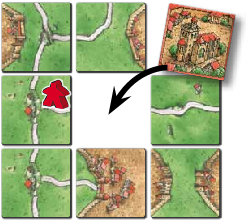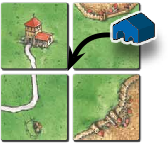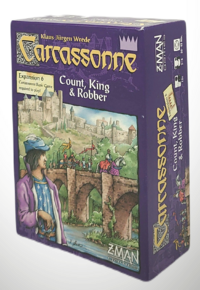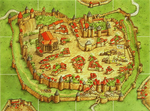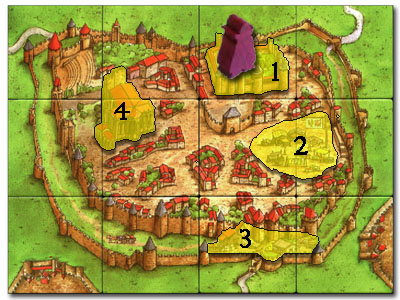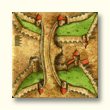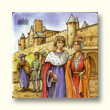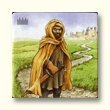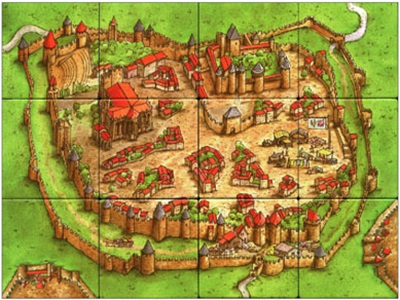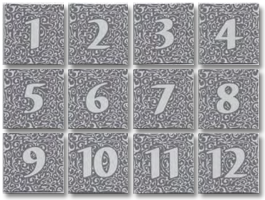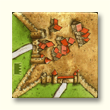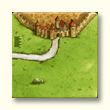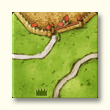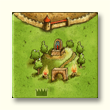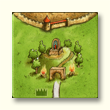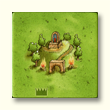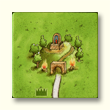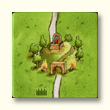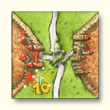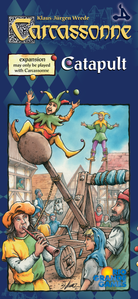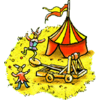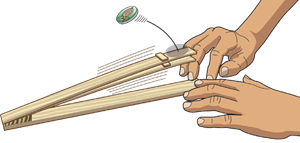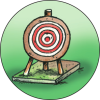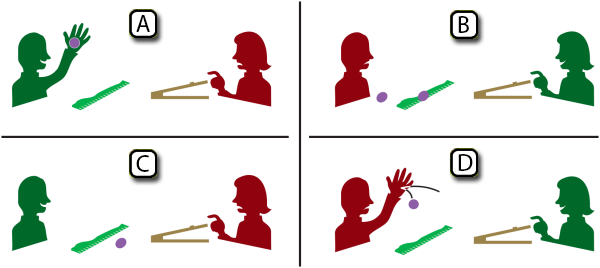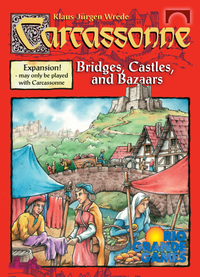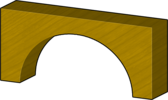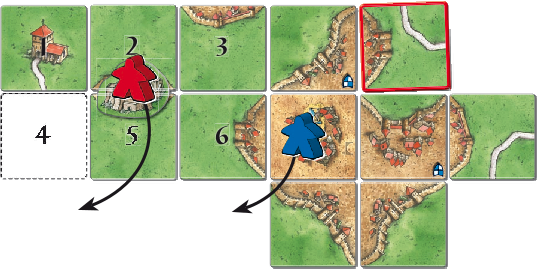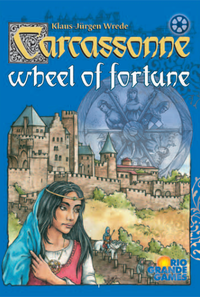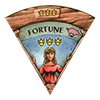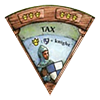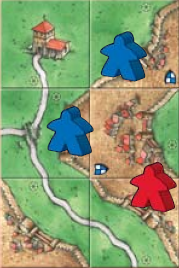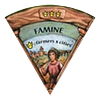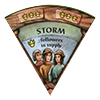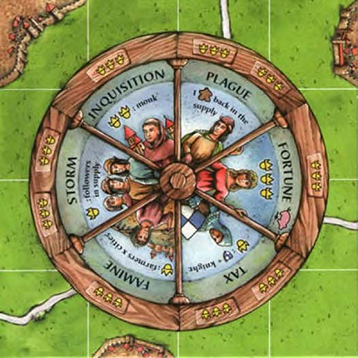Master Page C1
Some introduction, source of this document, authors, about, icons legend etc.
Lorem ipsum dolor sit amet, consectetur adipiscing elit. Aenean porta ante id ante eleifend, et scelerisque urna rutrum. Vivamus feugiat pellentesque diam vel porttitor. Praesent at dui et velit ullamcorper mattis et eget nunc. Fusce tincidunt a est sit amet porta. Fusce in ex in dui pretium consequat a non lorem. Vestibulum pellentesque pellentesque sem. Suspendisse pulvinar eros turpis, et pharetra lectus sagittis ut. Interdum et malesuada fames ac ante ipsum primis in faucibus.
Nulla ut finibus lectus. Aliquam dapibus ut elit at gravida. Etiam ornare tempor consequat. Fusce facilisis est quis dolor congue, nec blandit justo sollicitudin. Donec urna massa, lobortis maximus turpis id, ornare elementum eros. Curabitur lobortis, lectus quis auctor aliquam, orci elit lobortis felis, eu varius orci orci vel augue. Donec iaculis finibus enim et eleifend. Vivamus tristique enim id malesuada aliquam.
Base Game
 |
You are reading the rules for this tile design. |
 | Read the following rules if your tiles look like this. |  |
| If your tiles have a different design, then choose a game from Spin-offs. |  |
| Z-Man Games | Rio Grande Games |
General info and comments
Originally released by Hans im Glück in 2000
A clever tile-laying game for 2 to 5 players aged 8 and above by Klaus-Jürgen Wrede
The city of Carcassonne in southern France is famous for its unique Roman and Medieval fortifications. The players take their chances with their followers on the roads and in the cities, cloisters, farms around Carcassonne. The development of the land is in their hands, and the skillful deployment of the followers as thieves, knights, monks and farmers is the path to success.
Contents
- 72 land tiles (including one with a dark reverse) which depict road, city and field segments, as well as cloisters and crossings.
- 40 followers in five colors[1]:
Followers in five colors
![]() Question: Too few followers—are we playing wrong or are there really too few?
Question: Too few followers—are we playing wrong or are there really too few?
Each follower can be deployed as a knight, monk, thief or farmer. One follower of each color is used as a scoring marker.
- One scoreboard. This is used to track players' scores
- One rule booklet and one supplement.
Rules
Overview
The players place the land tiles turn by turn. This leads to the growth of roads, cities, cloisters and farms, to which the players may deploy their followers in order to earn points. As points can be won during the game as well as at the end, the winner will only emerge during the final scoring.
Preparation
The starting tile is placed in the middle of the table. The remaining tiles are mixed and placed face-down on the table in several stacks, so that each player can access them easily. Tiles can also be placed into a sack or game box and drawn randomly. The scoreboard should be placed at the edge of the table if possible.
Each player chooses a color and receives the eight followers, placing one on the ‘0’ field of the scoreboard as a scoring marker. The remaining seven followers stay with the player for the moment, as his or her supply.
The youngest player decides who starts the game.[2]
Playing the game
Play progresses in a clockwise fashion. The player whose turn it is carries out the following actions in the order given:
- The player must draw one new land tile and place it.
- The player may draw one follower from his or her supply and deploy it to the tile just placed.
- If any roads, cities, or cloisters are completed through the placement of the tile, they must be scored now.
Then it is the next player's turn.
1. Place a tile
As their first action, the player must draw a tile from one of the stacks. The tile is then shown to the other players (so they can ‘advise’ the player about where to place it) and placed on the table. The player must take care to observe the following points:
- At least one side of the new tile (with a red border in the examples below) must touch one or more tiles already in play. Corner-to-corner placement is not permitted.
- Any city, road, and field segments must continue segments already in play. A newly placed land tile must fit the adjacent terrain on all edges. During placement it is not enough to look for only one side that fits.
In the rare case that a tile cannot legally be placed anywhere, and all players agree, it is removed from the game, and the player draws another.
2. Deploy a follower
When the player has placed the tile, he or she may deploy a follower. In doing so the following points must be observed:
- Only one follower may be deployed each turn.
- The follower must come from the player's supply.
- The follower may only be deployed to the tile just placed.
- The player must decide which part of the tile the follower is deployed to as either:
- There must be no other follower (not even one belonging to the same player) on the road, city, or field segments connected to the tile just placed. It does not matter how far away the follower is. The following two examples may help to explain:
If a player runs out of followers during the course of play, he or she may only place tiles. But don't panic: you can also get followers back.
If any feature was completed through the placement of the tile, it must now be scored. If not, the player’s turn is over, and it is the turn of the next player on the left.
![]() Question: We have difficulty deciding when a placed tile represents a new city or belongs to one already being built.
Question: We have difficulty deciding when a placed tile represents a new city or belongs to one already being built.
![]() Question: On cloister tiles, are we allowed to deploy a follower on the surrounding field segment?
Question: On cloister tiles, are we allowed to deploy a follower on the surrounding field segment?
3. Score completed roads, cities or cloisters
A completed road
A road is completed when the road segments on both sides end in a crossing, [4] a city segment, or a cloister, or when the road forms a closed circle. There is no limit to the number of road segments which can lie between these endings.
A player who has a thief on this completed road scores as many points as the road is long, decided by counting the number of tiles.
Whenever points are scored, they are immediately recorded on the scoreboard (more on this in the section about the scoreboard).
![]() Question: Can a road end in nothing?
Question: Can a road end in nothing?
![]() Question: How are the road segments between T-junctions scored? Are the horizontal segments (on top of the T) also ends, or do these count as straight roads that have to be completed elsewhere?
Question: How are the road segments between T-junctions scored? Are the horizontal segments (on top of the T) also ends, or do these count as straight roads that have to be completed elsewhere?
A completed city
A city is completed when its segments are fully encompassed by a city wall and there are no gaps within the city.[5] There is no limit to how many segments a city may contain.
A player who has a knight in a completed city scores 2 points for every city segment. [6] Every pennant (banner / shield symbol) scores an extra 2 points. Note that a pennant only affects the city segment it is in, not the whole tile (if there is more than one segment on a single tile).
What happens if there are several followers on a completed road or in a completed city?
Through the wily placement of land tiles it is quite possible for several thieves to be on a road, or for several knights to occupy a city.
The points are then scored by the player with the most thieves or knights. In the case of a draw, all players involved score the full number of points.
A completed cloister (monastery)
A cloister is completed when it is surrounded by eight land tiles. The player who has a monk in the cloister immediately scores 9 points—1 point for every land tile.
Returning followers to their owners
After a road, city, or cloister has been completed and scored – and only then – any thieves, knights, or monks involved are returned to their owner. From the next turn onwards, the player can then use them again in whatever role he or she chooses.
It is possible to deploy a follower, score immediately, and have the follower returned, all in the same turn. In this case, you must use the following order: [7]
- Complete a road, city or cloister with the new tile.
- Deploy a thief, knight or monk.
- Score the completed road, city or cloister.
- Return the thief, knight or monk to your supply.
![]() Question: If a player draws a tile with two city segments and completes a small city, earning 4 points, can he or she then deploy a follower to a new city segment in the same turn?
Question: If a player draws a tile with two city segments and completes a small city, earning 4 points, can he or she then deploy a follower to a new city segment in the same turn?
Farms
Several connected field segments form a farm. Farms and field segments are not scored during the game. They serve only as places to deploy farmers; the owner of the farm only scores points at the end of the game. As such, farmers remain on the farm for the duration of the game and are never returned to their owner! [8] In order to make that clear, the farmers should be laid on their backs.
Farms are separated from each other by roads, cities and the edge of the playing field – this is important during the final scoring. [9] [10]
The scoreboard
Any points scored should be recorded on the scoreboard immediately. The board is a track of fifty fields that can be lapped many times. When the field "0" is reached or passed the player takes a point tile (from ![]() Inns & Cathedrals) and places it in plain view of all other players, with the number "50" face up. In this way it is clear to all that the player has already scored 50 points or more [11] If the player reaches or passes the field "0" again, they should turn the point tile over so that the number "100" is face up. It is quite possible that the player might lap the circuit a third time: then he or she should take another point tile and display it next to the first, the "50" face up.[12]
Inns & Cathedrals) and places it in plain view of all other players, with the number "50" face up. In this way it is clear to all that the player has already scored 50 points or more [11] If the player reaches or passes the field "0" again, they should turn the point tile over so that the number "100" is face up. It is quite possible that the player might lap the circuit a third time: then he or she should take another point tile and display it next to the first, the "50" face up.[12]
The End of the Game
The game ends at the end of the turn in which the last land tile is placed.[13] Any roads, cities, and cloisters completed in this round are scored as usual. This is followed by the final scoring.
Final Scoring
Scoring incomplete roads, cities and cloisters
The first things to be scored during the final scoring are the incomplete roads, cities and cloisters. For every incomplete road, city and cloister the owner scores 1 point for every tile. Pennants also now score only 1 point. As soon as the feature in question has been scored, the followers involved are removed.
![]() Question: Final scoring: segments of incomplete roads. 1 point per follower or 1 point per road segment? Cloister: 1 point for every neighboring tile (e.g. 5), or is an incomplete cloister worth only 1 point?
Question: Final scoring: segments of incomplete roads. 1 point per follower or 1 point per road segment? Cloister: 1 point for every neighboring tile (e.g. 5), or is an incomplete cloister worth only 1 point?
Scoring farms
Only the farmers and their farms are left, and these will be scored now. The owner of each farm should be established. If several players have farmers on a given farm, then the player with the most farmers is the owner. In the case of a draw, all the players with the most farmers are considered to be owners. The owner (or owners) of the farm score 3 points for every completed city which borders the farm, or lies within it. A bordering city is one that has a wall bordering the farm; a single point of contact at the corner of a tile is not sufficient. If a city borders more than one farm, the owner(s) of each farm score(s) 3 points for the city. [14] [15]
![]() The numbered boxes indicate the order in which the tiles were placed.
The numbered boxes indicate the order in which the tiles were placed.
Every farm scores the bordering cities in the same way. When this has been done, the game is over.
The player with the most points wins.[16]
![]() Question: It is unclear whether incomplete farms earn points during the final scoring.
Question: It is unclear whether incomplete farms earn points during the final scoring.
![]() Question: At the end of the game, do we score farms which are completely closed off by roads, but which don't have any adjacent cities? If so, how?
Question: At the end of the game, do we score farms which are completely closed off by roads, but which don't have any adjacent cities? If so, how?
Example of farmer scoring
Here is a more detailed example of how farmers and their farms are scored.
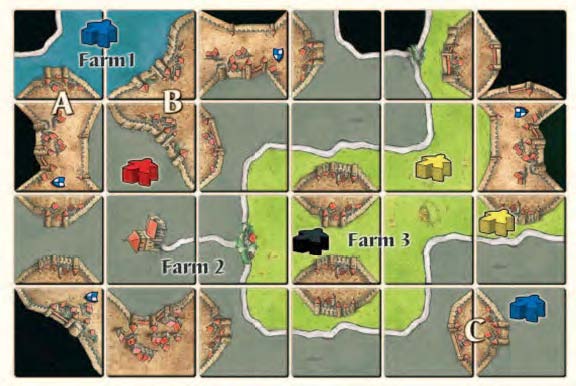
* Farm 1: BLUE owns farm 1. Two completed cities (A and B) border the farm. For each completed city BLUE scores 3 points (irrespective of their size), or a total of 6 points.
* Farm 2: RED and BLUE own farm 2. There are three completed cities (A, B and C) bordering or lying within this farm. RED and BLUE therefore score 9 points each.
Notice that cities A and B score points for BLUE on farm 1 as well as RED and BLUE on farm 2, since these cities border both farms. The city on the bottom left is incomplete, and so generates no points.
* Farm 3: YELLOW owns farm 3, since YELLOW has more farmers on it than BLACK. There are four completed cities bordering or lying within farm 3, so YELLOW scores 12 points.
Variants
There are a number of variants for the base game, which modify or redefine the rules of the game to achieve different effects. In the early years of the game, expansions were not so common and many fans started to explore alternative rules to exploit the game's potential. HiG noticed and posted many of these variants on their website for several years.
You can find more information about these variants here.
House Rules
- The players decide who starts the game by any method they choose—such as by rolling three followers. The first player to ‘roll’ a standing follower decides who plays first. (Thanks to Joff.)
- To determine the first player; each player draws a tile from the bag, the player that drew the tile with the most roads (0 to 4) plays first, if there is a tie for most roads, a draw-off takes place. This is repeated until someone wins. (Thanks to michael.)
- Take your next tile at the end of your turn, to give you time to think about placement and avoid analysis paralysis.
- Play with a three-tile hand. The abbey counts as part of your hand. Play your turn, including the builder, and then draw back up to three tiles. These tiles could be visible to all or hidden to the other players (Thanks to DavidP and youtch.)
- When playing with a bag for the tiles, the original starting tile may be put into the bag, and unplayable tiles can be put back into the bag rather than set to one side. (Thanks to dwhitworth.)
- Trees (bushes) on roads do not end the road—only houses do (when the road forks). This makes road building a lot more dynamic. (Thanks to Tobias.)
- When a tile is the only tile which can currently complete a structure, other players can offer to ‘buy’ it by offering points, trades counter, abbey, and so on. (Thanks to Deatheux.)
- If you place a tile that fills a hole in the playing field by touching something on all four adjacent sides, you get another turn. This helps motivate people to finish the board even if they do not get an advantage from the placement. (Does not apply to the abbey tile). (Thanks to viberunner.)
- Incomplete features at the end of the game do not score points at the end of the game. (Thanks to metoth.)
- The edge of the table limits the playing area. Thus, a player may not place a tile past the edge of the table or move the playing area to place a tile that would have been past the edge of the table. (Thanks to metoth for prompting this one, and to SkullOne for pointing out that this is an official rule from Hunters and Gatherers.)
- Table borders COMPLETE features as an abbey would. (Thanks to PreGy.)
- Use colored dice instead of meeples on the scoring track. Start out with the 6 showing on top. When the marker completes one lap, turn it to the number 1 to indicate it has completed one lap. This shows at a glance which player is on what lap and who's ahead. On the 100 space track it’s even easier to determine someone’s score at a glance. (Thanks to Carcking.)
Use of a Table
A number of questions have been asked about rules related to the play area itself, including what happens when the edge of the area is reached, or if a table has to be used for play. The following clarifications are from Georg Wild from HiG (5/2013):
- The edge of the table is the limit for the game if, as stated in the rules, a table is used.
- The rules state that the starting tile is placed in the middle of the table. If all of the tiles are shifted to allow more room, the starting tile would no longer be in the middle. So in principle, total shifting of the tiles is not allowed. Additionally, with a manual shift of all of the tiles, the tiles and figures on the field can slip, which could lead to incorrect positioning of tiles or figures.
- Addition of a second table is possible if one of an appropriate height is added to the first table. If a table is extended (as with an additional panel), make sure that the tiles and figures on the playing field do not slip.
- Playing on the floor: The rules technically do not allow this, because the rules state that the first tile is placed in the middle of the table. Playing on the floor is not forbidden, however, if use of a table is not feasible. If the floor is used, tiles must be placed so all tiles are visible to all players. Tiles cannot be placed under the sofa, cabinet/shelf, etc.
- It is important generally, that all the players in the round agree how to play:
- Table - Standard
- Table - with "total shifting" of tiles
- Table - with extension
- Floor
- Continue to play fairly and not intentionally unfair to other players.
Tile Distribution
Footnotes
For Icons explanation and licensing please visit Icons page.
Footnotes
- ↑
 This is not mentioned in the
This is not mentioned in the  Big Box 1,
Big Box 1,  Big Box 2,
Big Box 2,  Big Box 3,
Big Box 3,  Big Box 4 rules. The sixth player (gray) is listed here directly at the base game and not at
Big Box 4 rules. The sixth player (gray) is listed here directly at the base game and not at  Inns & Cathedrals. This makes the rules clearer. Additionally,
Inns & Cathedrals. This makes the rules clearer. Additionally,  Big Box 5 adds purple and pink followers for up to 8 players. Meeples in an additional colors can be acquired online.
Big Box 5 adds purple and pink followers for up to 8 players. Meeples in an additional colors can be acquired online.
- ↑
 This paragraph represents the current HiG rules. The RGG rules state that the players decide among themselves who will be the starting player, and the ZMG rules mention both options.
This paragraph represents the current HiG rules. The RGG rules state that the players decide among themselves who will be the starting player, and the ZMG rules mention both options.
- ↑
 If you complete an unoccupied feature, it is not mandatory for you to place a follower on it. If you place a follower and occupy the just completed feature, you will score points for it (and remove your follower right away). Otherwise, you will not receive points for the feature.
If you complete an unoccupied feature, it is not mandatory for you to place a follower on it. If you place a follower and occupy the just completed feature, you will score points for it (and remove your follower right away). Otherwise, you will not receive points for the feature.
- ↑
 In the game there are crossings and junctions. But since all crossings have the same effect—namely, to bring a road to an end—it was decided to sacrifice the distinction between crossings and junctions (or T-crossings, or T-roads...?) in order to not unnecessarily complicate matters.
In the game there are crossings and junctions. But since all crossings have the same effect—namely, to bring a road to an end—it was decided to sacrifice the distinction between crossings and junctions (or T-crossings, or T-roads...?) in order to not unnecessarily complicate matters.
- ↑
 The RGG edition states rather confusingly that “a city is complete when the city is completely surrounded by a city wall and there are no gaps in the wall.” Obviously, a city cannot be completely surrounded by a wall, and the wall have gaps at the same time. It is the city itself which cannot have gaps, as the HiG rules make clear.
The RGG edition states rather confusingly that “a city is complete when the city is completely surrounded by a city wall and there are no gaps in the wall.” Obviously, a city cannot be completely surrounded by a wall, and the wall have gaps at the same time. It is the city itself which cannot have gaps, as the HiG rules make clear.
- ↑
 Note that the so-called ‘small city’ rule is no longer used in any edition. This rule stated that a city of two segments—the smallest possible completed city— scored only 2 points, or 1 point per tile. Pennants in a small city also scored only 1 point each. However, small cities are now scored in the same way as every other city: that is, 2 points for every city segment, and 2 points per pennant.
Note that the so-called ‘small city’ rule is no longer used in any edition. This rule stated that a city of two segments—the smallest possible completed city— scored only 2 points, or 1 point per tile. Pennants in a small city also scored only 1 point each. However, small cities are now scored in the same way as every other city: that is, 2 points for every city segment, and 2 points per pennant.
- ↑
 Note in the box that features are considered to be complete as soon as the tile is placed, although follower placement and scoring only occur afterwards. This is important when playing with
Note in the box that features are considered to be complete as soon as the tile is placed, although follower placement and scoring only occur afterwards. This is important when playing with  Mini #1 - The Flying Machines.
Mini #1 - The Flying Machines.
- ↑
 Okay, “never” is a long time. In reality, some special mechanics in some expansions (
Okay, “never” is a long time. In reality, some special mechanics in some expansions ( The Festival tiles,
The Festival tiles,  The Princess & the Dragon, etc.) do allow return of farmers to their owners. (12/2014)
The Princess & the Dragon, etc.) do allow return of farmers to their owners. (12/2014)
- ↑
 In determining farm size, farms can be limited by all kinds of barriers, for example, roads, cities, or rivers which cannot be circumvented, or the edge of the playing field. It can certainly happen that a farm covers almost the entire playing field, and there will likely be farms that remain open for the entire game.
In determining farm size, farms can be limited by all kinds of barriers, for example, roads, cities, or rivers which cannot be circumvented, or the edge of the playing field. It can certainly happen that a farm covers almost the entire playing field, and there will likely be farms that remain open for the entire game.
- ↑
 River segments also separate farms. (08/2014)
River segments also separate farms. (08/2014)
- ↑
 The graphic here suggests that it might also be a good idea to lie the follower being used as a scoring marker flat on the scoreboard as the "50" is passed.
The graphic here suggests that it might also be a good idea to lie the follower being used as a scoring marker flat on the scoreboard as the "50" is passed.
- ↑
 This is the first real difference to previously published editions, now having its own section and a description of point tiles, which were previously considered to be a part of the
This is the first real difference to previously published editions, now having its own section and a description of point tiles, which were previously considered to be a part of the  Inns & Cathedrals.
Inns & Cathedrals.
- ↑
 Note that, according to the RGG
Note that, according to the RGG  Big Box 3 rules, the last land tile placed could be an Abbey tile. According to these most recent rules, “If one or more players have not yet placed their Abbey tiles when the last landscape tile is drawn and placed, they may now do so, if possible, in clockwise order starting from the left of the person who placed the last tile. Then, the game ends.” This is a reversal of a previous FAQ, which used the statement, “The game is over when the last face-down land tile has been played.” This older statement was to specifically prevent players from placing any abbey tiles which they may still have in their hand after the last ‘normal’ land tile (from the stack, the bag, or the dispenser) had been played.
Big Box 3 rules, the last land tile placed could be an Abbey tile. According to these most recent rules, “If one or more players have not yet placed their Abbey tiles when the last landscape tile is drawn and placed, they may now do so, if possible, in clockwise order starting from the left of the person who placed the last tile. Then, the game ends.” This is a reversal of a previous FAQ, which used the statement, “The game is over when the last face-down land tile has been played.” This older statement was to specifically prevent players from placing any abbey tiles which they may still have in their hand after the last ‘normal’ land tile (from the stack, the bag, or the dispenser) had been played.
- ↑
 This describes what is known as the "third edition" method of scoring farms, the method currently accepted by all publishers.
This describes what is known as the "third edition" method of scoring farms, the method currently accepted by all publishers.
- ↑
 Question: What are the differences to the rules of the first edition, when Carcassonne won Game of the Year? Answer: The scoring of farms was not from the perspective of the farms themselves, as it is now, but rather from the perspective of the cities. For every city, you had to check how many farmers of each color were adjacent to it, irrespective of from which side. The player with the majority of adjacent farmers supplying a city would earn four points for it. Each city would as such only be scored once, and therefore earned more points. According to the old rules, BLUE would be the only one to score points, since two of his or her farmers are supplying the cities, even though they are on different farms. YELLOW has only one farmer adjacent to the city and goes home without anything. According to the new rules, both farmers earn points; and following the most recent rule changes, BLUE even earns points twice.
Question: What are the differences to the rules of the first edition, when Carcassonne won Game of the Year? Answer: The scoring of farms was not from the perspective of the farms themselves, as it is now, but rather from the perspective of the cities. For every city, you had to check how many farmers of each color were adjacent to it, irrespective of from which side. The player with the majority of adjacent farmers supplying a city would earn four points for it. Each city would as such only be scored once, and therefore earned more points. According to the old rules, BLUE would be the only one to score points, since two of his or her farmers are supplying the cities, even though they are on different farms. YELLOW has only one farmer adjacent to the city and goes home without anything. According to the new rules, both farmers earn points; and following the most recent rule changes, BLUE even earns points twice.
- ↑
 The HiG rules do not have any instructions regarding what to do in case of a tie. The RGG rules state that tied players “rejoice in their shared victory.” The ZMG rules state, “In case of a tie, play another game to determine the winner!”
The HiG rules do not have any instructions regarding what to do in case of a tie. The RGG rules state that tied players “rejoice in their shared victory.” The ZMG rules state, “In case of a tie, play another game to determine the winner!”
- ↑

 Big Box 5 actually includes these 72 tiles with standard backs as well as a separate starter tile. Thus, there is effectively an extra tile with a city cap and a horizontal road (CRFR, see Consolidated Tile Reference) in the
Big Box 5 actually includes these 72 tiles with standard backs as well as a separate starter tile. Thus, there is effectively an extra tile with a city cap and a horizontal road (CRFR, see Consolidated Tile Reference) in the  Big Box 5 base set.
Big Box 5 base set.
River
Warning: Default sort key "River (1st edition)" overrides earlier default sort key "Base game (1st edition)".
 |
You are reading the rules for this tile design. |
 | Read the following rules if your tiles look like this. |  |
| If your tiles have a different design, then choose a game from Spin-offs. |  |
General info and comments
 Expansion symbol River II |
 Expansion symbol for 2014 River version |
There are two River Expansions:
- The River (commonly known as River I) was originally released by Hans im Glück in 2001. [1]
- The River II was originally released by Hans im Glück in 2005, and later bundled in the major expansion
 Count, King & Robber in 2008.
Count, King & Robber in 2008.
The ![]() Games Quarterly #11 expansion from 2006 includes 2 river tiles that can be combined with any river expansion. One of these tiles is a new river source with a road. It can replace the one included in other rivers and help create smaller farms around the river.
Games Quarterly #11 expansion from 2006 includes 2 river tiles that can be combined with any river expansion. One of these tiles is a new river source with a road. It can replace the one included in other rivers and help create smaller farms around the river.
In 2014, HiG's ![]() Big Box 5 included a version of River I (sometimes referred to as River III) with some minor additions that tied in with
Big Box 5 included a version of River I (sometimes referred to as River III) with some minor additions that tied in with ![]() Hills & Sheep.
Hills & Sheep.
Contents
- 12 new land tiles (The River I) - providing a linear river configuration.
- 12 new land tiles (The River II) - providing a forked river layout.
- 12 new land tiles (The River III) - providing the same layout as River I and some extra features.
- 2 new river tiles (Games Quarterly #11) - providing an alternative river source.
Common features found on river tiles: [2]
River II shows river segments as well as familiar features such as cities, cloisters, roads, and fields plus a river fork, an inn (tie-in with ![]() Inns & Cathedrals), a pig-herd (tie-in with
Inns & Cathedrals), a pig-herd (tie-in with ![]() Traders & Builders) and a volcano (tie-in with
Traders & Builders) and a volcano (tie-in with ![]() The Princess & the Dragon.)
The Princess & the Dragon.)
Particular features found in River II:
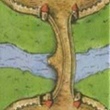
|
A bridge that does not split the fields and creates one single city [5] |
River III has the same layout of river and claimable features as River I, thus it is considered the same expansion. However, this version also adds features to mesh with the ![]() Hills & Sheep expansion – there are 2 tiles with a sheep and 2 tiles with a vineyard. Additionally, the backs of the river tiles in this version are the light gray of standard tiles rather than the dark gray of starting tiles, and there is a new expansion symbol on the front.
Hills & Sheep expansion – there are 2 tiles with a sheep and 2 tiles with a vineyard. Additionally, the backs of the river tiles in this version are the light gray of standard tiles rather than the dark gray of starting tiles, and there is a new expansion symbol on the front.
Particular features found in River III:
Games Quarterly #11 provides a new river source with a road ending at a small cottage. The road splits the farm surrounding the river source:
Rules
Preparation
The original starting tile is not used. [6] [7] [8]
Separate the spring tile and lake tile from the others. Place the spring tile in the middle of the table, and set the lake tile to the side for now. The other ten tiles are shuffled and placed face down into a stack. [9] [10]
If playing with River II, the fork tile should be set aside along with the source and lake tiles. The fork tile is placed first (after the source tile) by the first player.
Placing a tile
The players take turns placing tiles [11] [12] When the river is finished, the lake tile is placed, and the game continues with the remaining tiles.
If playing with River II, the first player places the fork. [13] [12] After this, each player on his or her turn places a tile either on left or right branches of the river. [14] The volcano tile is placed last. The player who places the volcano may not deploy a follower to this tile, but should place the dragon on the tile instead. [15] The player may therefore take another tile immediately, [16] thus beginning the normal game. The river tiles can be placed as the player wishes, except for two exceptions: no 180° turns are allowed, and the two river branches must not be connected.
Important: A U-turn with the river tiles is not possible. This means that a 180° turn is not allowed, as it may lead to difficulties in placing all the tiles.[17]
Deploying a follower
When a player places a river tile, he or she may deploy a follower using the normal rules for placing a follower. [18] No follower can be deployed to the river itself.
Scoring
River feature itself cannot be scored. All other features on river tiles are scored as usual. River segments separate farms.
Note on River II special features
If you don't possess the relevant expansions, the inn, volcano, pig-herd, vineyards and sheep tiles have no particular significance. [19]
The pig-herd tile earns the farmer who owns this farm an extra 1 point per city. If a player has the pig-herd and a pig (from the ![]() Traders & Builders expansion), he or she receives an additional 2 points per city. [20] [21] [22] [23] [24]
Traders & Builders expansion), he or she receives an additional 2 points per city. [20] [21] [22] [23] [24]
Other expansions
 The Count of Carcassonne
The Count of Carcassonne
The question of how to combine the various “starting” expansions of Carcassonne is a longstanding one, and HiG has changed its mind several times.
The original rules for ![]() The Count of Carcassonne included the following clarification: “If the river is being used, then the spring tile should be placed next, and in such a way that the river leads away from the city.” Yet the rules still said that it was probably better not to use the expansions together, and this was the only piece of advice to make it into the introductory paragraph of its rules in
The Count of Carcassonne included the following clarification: “If the river is being used, then the spring tile should be placed next, and in such a way that the river leads away from the city.” Yet the rules still said that it was probably better not to use the expansions together, and this was the only piece of advice to make it into the introductory paragraph of its rules in ![]() Count, King & Robber: “It is not recommended to combine
Count, King & Robber: “It is not recommended to combine ![]() The Count of Carcassonne and any River expansion(s), as situations may arise in which it is impossible to place tiles properly.”
The Count of Carcassonne and any River expansion(s), as situations may arise in which it is impossible to place tiles properly.”
The same rules by ZMG include the following paragraph: "The river spring must begin at one of the corners of the City of Carcassonne. The players should place the river tiles so that the river flows away from the City of Carcassonne so as to avoid placement problems. Again, combining The Count of Carcassonne and The River I or The River II is not recommended."
As indicated above, this is no longer the recommended approach. Instead, one should always remember the rule from the basic game: “In the rare case that a tile cannot be placed anywhere, it is removed from the game, and the player draws another.” If the river winds around the City of Carcassonne in such a way that you cannot place the next tile (river or otherwise), the tile should be placed to one side, and another drawn. An interesting corollary of this is that the river does not have to be finished: if it is impossible to do so, you do not have to place the final lake tile, and a permanent gap in the playing field might arise (which could, of course, subsequently be filled by an abbey from the ![]() Abbey & Mayor expansion.)
Abbey & Mayor expansion.)
This clearly has consequences beyond combining the two expansions mentioned. Though the rules still say that U-turns are not allowed, resolving such issues is now much more straightforward—no more need to defenestrate players who insist on making awkward tile placements. And it helps considerably in establishing what a game of Mega-Carcassonne should look like.
Of course, some people will object that this rule destroys the aesthetics of the playing field. They might be right, and they are free to adopt a house rule which is more comfortable to them. But for the rules lawyers among us, this rule is an important development.
 The Wheel of Fortune
The Wheel of Fortune
![]() River and
River and ![]() The Wheel of Fortune expansions may be used together. In this case, the Wheel of Fortune board is first placed in the middle of the table. Then, the river source is placed so that the river will flow away from the Wheel of Fortune board. Place the river tiles and lake (mouth) according to the normal River rules. Once the lake (river mouth) has been placed, play proceeds according to normal Carcassonne rules.
The Wheel of Fortune expansions may be used together. In this case, the Wheel of Fortune board is first placed in the middle of the table. Then, the river source is placed so that the river will flow away from the Wheel of Fortune board. Place the river tiles and lake (mouth) according to the normal River rules. Once the lake (river mouth) has been placed, play proceeds according to normal Carcassonne rules.
 Hills & Sheep with River III
Hills & Sheep with River III
The sheep depicted on the river tiles are used with the ![]() Hills & Sheep expansion. When a player performs a Gather the Flock action, the sheep depicted on the fields of these river tiles are to be counted and scored along with the Sheep tokens. These depicted sheep are permanent and may be scored multiple times during a game.
Hills & Sheep expansion. When a player performs a Gather the Flock action, the sheep depicted on the fields of these river tiles are to be counted and scored along with the Sheep tokens. These depicted sheep are permanent and may be scored multiple times during a game.
The vineyards depicted on the river tiles are used with the ![]() Hills & Sheep expansion and add to cloister scoring according to the normal vineyard rules.
Hills & Sheep expansion and add to cloister scoring according to the normal vineyard rules.
When playing without the ![]() Hills & Sheep expansion, the depicted sheep and vineyards have no function.
Hills & Sheep expansion, the depicted sheep and vineyards have no function.
House Rules
House Rules for River I/III
- Ban all river U-turns to prevent problems with subsequent placement.
- You are not permitted to lay down any meeples until the entire river is down. (Thanks to metoth)
- Once the river is complete, it may be moved to the center of the playing area. (Thanks to Joff)
- Instead of starting with the spring and setting aside the lake, put all of the river pieces into the bag. In this way the river can be any size and there is usually more then one option for placing a river tile. (Thanks to DavidP)
- Mix the original starting tile (without a river) in with the river tiles. If it is drawn then it acts like a 'bonus' tile that can be placed anywhere. (Thanks to RationalLemming)
- Lay the river in reverse order, from lake to spring. No real advantage, but might be more desirable, when playing the Count expansion, to have the lake near the City of Carcassonne for purely aesthetic reasons. (Thanks to Scott)
House Rules for River II
- Play the fork of the river first, and lay the spring last. The lakes are mixed in with the other river tiles. (Thanks to Joff)
- Rather than discarding the second fork (from The River II and
 Count, King & Robber,) mix it in with the other river tiles and place it normally when it is drawn. (Thanks to Scott)
Count, King & Robber,) mix it in with the other river tiles and place it normally when it is drawn. (Thanks to Scott) - Pig-herds do not score a bonus. (Thanks to Joff)
- Play both rivers backwards starting with the city/lake. This is more realistic because you then get two springs producing rivers that join and flow ‘down’ to a lake. Discard two lakes—the plain one from River I and the volcano. To set up, place the lake tile, put one spring tile aside as a final ending tile, and then split the balance of the river tiles into two stacks. The junction tile is shuffled into stack 1 and the other spring into stack 2. Then the stack 1 is placed on stack 2—so that the junction will be drawn sometime before the spring. If playing with
 The Count of Carcassonne, place the city/lake so that it completes one of the small cities around Carcassonne. (Thanks to dwhitworth)
The Count of Carcassonne, place the city/lake so that it completes one of the small cities around Carcassonne. (Thanks to dwhitworth) - Select only one lake tile and use two spring tiles. Lay the river in reverse order. The fork can be placed randomly, or at some predetermined point. The end result is two rivers flowing into one which then flows into a lake. (Thanks to Scott)
- Start from the fork, playing tiles on all three branches. Play the spring and lake tiles at the end, or mix two of the three with the rest of the river before play to have two of the three branches end randomly. (Thanks to Scott)
- Play with two forks and a straight river between them. The ends (two lakes, a spring and a volcano) then come out randomly. Makes for a big river, but with 300 or so tiles it works. (Thanks to revolushn)
Tile Distribution
River I (Original 2001 River version)
River II
River III (2014 River I version)
Games Quarterly #11
Footnotes
For Icons explanation and licensing please visit Icons page.
Footnotes
- ↑
 The idea was based on a design by game designer Rudolf Ross.
The idea was based on a design by game designer Rudolf Ross.
- ↑
 Officially, the field goes around the spring and the lake, creating a connected farm.
Officially, the field goes around the spring and the lake, creating a connected farm.
 This has been incorporated in the RGG edition of the
This has been incorporated in the RGG edition of the  Big Box 1, which includes The River (the HiG edition does not) and states that “The field space on the lake and spring tiles wraps around those features.”
Big Box 1, which includes The River (the HiG edition does not) and states that “The field space on the lake and spring tiles wraps around those features.”
- ↑
 In the ZMG rules, this is referred to as the river source. (12/2014)
In the ZMG rules, this is referred to as the river source. (12/2014)
- ↑
 In the ZMG rules, this is referred to as the river mouth, although in New Carcassonne this has gone back to being the lake. (12/2014)
In the ZMG rules, this is referred to as the river mouth, although in New Carcassonne this has gone back to being the lake. (12/2014)
- ↑
 The city bridge does not separate field segments. Only the river separates the field segments on this tile. Thus, there are 2 field segments on this tile. [This is logical, as similar city bridges in other expansions such as
The city bridge does not separate field segments. Only the river separates the field segments on this tile. Thus, there are 2 field segments on this tile. [This is logical, as similar city bridges in other expansions such as  Abbey & Mayor do not divide the city underneath. – Chris O.] (1/2013)
Abbey & Mayor do not divide the city underneath. – Chris O.] (1/2013)
- ↑
 This is an addition to the
This is an addition to the  Count, King & Robber edition of the rules.
Count, King & Robber edition of the rules.
- ↑
 Earlier versions of the rules stated: “The original starting tile can either be mixed into the stack of river tiles, or placed as soon as the river has been completed, and is treated like a normal tile.” (3/2015)
Earlier versions of the rules stated: “The original starting tile can either be mixed into the stack of river tiles, or placed as soon as the river has been completed, and is treated like a normal tile.” (3/2015)
- ↑
 The original start tile can be played as per the original rule in the previous footnote. Alternatively, if drawing from a bag where the tile backs cannot be seen, the start tile can be mixed in with the standard tiles. (3/2015)
The original start tile can be played as per the original rule in the previous footnote. Alternatively, if drawing from a bag where the tile backs cannot be seen, the start tile can be mixed in with the standard tiles. (3/2015)
- ↑
 In the New Edition, the players are instructed to place the lake tile at the bottom of this stack. (12/2014)
In the New Edition, the players are instructed to place the lake tile at the bottom of this stack. (12/2014)
- ↑
 When the two River sets are combined, discard one spring and one lake and make just one river (instead of making two rivers using the two springs).
When the two River sets are combined, discard one spring and one lake and make just one river (instead of making two rivers using the two springs).
- ↑
 The rules from
The rules from  Big Box 5 and the
Big Box 5 and the  New Edition rules explicitly state that players are to draw River tiles until none are left and that newly-placed tiles must continue the illustration of the river itself. (12/2014)
New Edition rules explicitly state that players are to draw River tiles until none are left and that newly-placed tiles must continue the illustration of the river itself. (12/2014)
- ↑ Jump up to: 12.0 12.1
 As noted in the “Deploy a follower” subsection, this player can place a follower if desired. (06/2014)
As noted in the “Deploy a follower” subsection, this player can place a follower if desired. (06/2014)
- ↑
 Question: If you combine
Question: If you combine  Count, King & Robber with The River II, you will now have two forks. Obviously one of those gets placed immediately, but should the other one be mixed in with the rest of the river tiles, or put to one side? Answer: In fact, that means using The River II twice. We didn’t plan that, and I think that it will lead to problems with placement. Whoever wants to do it should go ahead, but there are no rules for it. Sorry!
Count, King & Robber with The River II, you will now have two forks. Obviously one of those gets placed immediately, but should the other one be mixed in with the rest of the river tiles, or put to one side? Answer: In fact, that means using The River II twice. We didn’t plan that, and I think that it will lead to problems with placement. Whoever wants to do it should go ahead, but there are no rules for it. Sorry!
- ↑
 As noted in the “Deploy a follower” subsection, each player can, if desired, place a follower after he or she places a river tile. (06/2014)
As noted in the “Deploy a follower” subsection, each player can, if desired, place a follower after he or she places a river tile. (06/2014)
- ↑
 The RGG edition of
The RGG edition of  Big Box 2 does not mention that a player should place the dragon on the volcano tile, only that the player should place a second tile.
Big Box 2 does not mention that a player should place the dragon on the volcano tile, only that the player should place a second tile.
- ↑
 This is not standard procedure for placing a volcano tile, according to the rules for
This is not standard procedure for placing a volcano tile, according to the rules for  The Princess & the Dragon. Under those rules placing a volcano tile does not allow the player to draw a second tile; instead, he or she may only perform actions not connected with follower deployment.
The Princess & the Dragon. Under those rules placing a volcano tile does not allow the player to draw a second tile; instead, he or she may only perform actions not connected with follower deployment.
- ↑
 Question: With the U-turn rule when making rivers, does that mean no U-turn ever, or just no immediate U-turns because it will complicate the placement of subsequent river tiles? Answer: Only immediate U-turns are explicitly forbidden. Naturally, there can also be problems if a straight river tile lies between.
Question: With the U-turn rule when making rivers, does that mean no U-turn ever, or just no immediate U-turns because it will complicate the placement of subsequent river tiles? Answer: Only immediate U-turns are explicitly forbidden. Naturally, there can also be problems if a straight river tile lies between.
- ↑
 Note that river segments separate farms. (08/2014)
Note that river segments separate farms. (08/2014)
- ↑
 Still, there seems to be no reason why you couldn’t use the pig-herd without having the pig, since they are scored independently. In fact, the ZMG version of the rules leaves out “pig-herd tile” in this sentence, suggesting that they agree.
Still, there seems to be no reason why you couldn’t use the pig-herd without having the pig, since they are scored independently. In fact, the ZMG version of the rules leaves out “pig-herd tile” in this sentence, suggesting that they agree.
- ↑
 This sentence changed in HiG’s
This sentence changed in HiG’s  Big Box 2 to remove a previous ambiguity about whether the pig-herd tile could only be scored in addition to a pig. It is now clear that they can be scored independently or together.
Big Box 2 to remove a previous ambiguity about whether the pig-herd tile could only be scored in addition to a pig. It is now clear that they can be scored independently or together.
- ↑
 You do receive the bonus from the pig-herd tile even if you don't have a pig on the farm. The pig herd is a neutral pig, so to speak.
You do receive the bonus from the pig-herd tile even if you don't have a pig on the farm. The pig herd is a neutral pig, so to speak.
- ↑
 Question: Does the pig-herd tile still score an extra point when there is a barn on the farm (barn = 4 points, barn+pig-herd = 5 points per city)? Answer: The pig-herd tile only counts in connection with farmers, not the barn.
Question: Does the pig-herd tile still score an extra point when there is a barn on the farm (barn = 4 points, barn+pig-herd = 5 points per city)? Answer: The pig-herd tile only counts in connection with farmers, not the barn.
- ↑
 The pig-herd tile can still score an extra point per city when there is a barn on the farm.
The pig-herd tile can still score an extra point per city when there is a barn on the farm.
- ↑
 There are no official rules for using two pig-herd tiles, as there are no rules for using two copies of The River II, and the similar
There are no official rules for using two pig-herd tiles, as there are no rules for using two copies of The River II, and the similar  Games Quarterly #11 tile is not officially a pig-herd tile. However, if one farm has multiple pig-herd tiles, it seems that they should not stack; in other words, the bonus should only be awarded once, in keeping with other landscape bonuses such as inns and cathedrals.
Games Quarterly #11 tile is not officially a pig-herd tile. However, if one farm has multiple pig-herd tiles, it seems that they should not stack; in other words, the bonus should only be awarded once, in keeping with other landscape bonuses such as inns and cathedrals.
Inns and Cathedrals
Warning: Default sort key "Inns and Cathedrals (1st edition)" overrides earlier default sort key "River (1st edition)".
 |
You are reading the rules for this tile design. |
 | Read the following rules if your tiles look like this. |  |
| If your tiles have a different design, then choose a game from Spin-offs. |  |
General info and comments
Inns and Cathedrals was originally released by Hans im Glück in 2002. The tiles of the first German editions had no expansion symbol and had the name "Die Erweiterung" and not "Inns and Cathedrals".
This expansion is the first major expansion for Carcassonne and introduces a few new aspects to the game.
Contents
- 18 new Land tiles with a meeple symbol.
- 6 scoring tiles, double sided with 50 on one side and 100 on the other.
- 8 grey followers to use for a 6th player. [1]
- 6 big followers (one for each color)
There are some tiles with special characteristics:
 |
This tile has four unconnected city segments. |
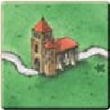 |
The cloister divides the road into two segments. |
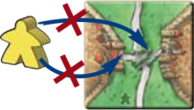
|
The crossing divides the road into two segments. The thieves may not be placed on the designated spots. |
Rules
Preparation
The 18 tiles should be mixed with the rest of the tiles.
Place a tile
The new land tiles are placed in the usual way. Take care with the tiles shown beneath. [2]
Deploy a follower
Instead of deploying a normal follower, a player may now decide to deploy his or her big follower. This counts as one follower and is deployed according to the usual rules. [3]
During scoring, however, the big follower counts as if the player had deployed two normal followers to the road, city, cloister, or farm in question.
A player with a big follower DOES NOT score twice as many points. The big follower is dealt with in exactly the same way as two normal followers; for two followers in a city, on a road, or on a farm, you only earn points once. The only function of the big follower is to obtain the majority more quickly. For example, in a cloister the big follower earns precisely the same number of points as a smaller follower.
Like any other follower, the big follower is returned to the player after scoring, and can be deployed again in the next turn. If the big follower is deployed as a farmer, it remains on the farm until the end of the game, just like other farmers.
![]() Question: [If captured by a tower,] is the ransom for the big follower doubled?
Question: [If captured by a tower,] is the ransom for the big follower doubled?
Answer: No: he may be big, but he's still only one person.
Score completed roads, cities or cloisters
A completed road : "Inns by a Lake"
There are 6 tiles featuring an inn by a lake. [4]
If a road which has one or more inns lining it is completed, then the thief scores 2 points for every road segment, according to the number of tiles. However, if such a road has not been completed at the end of the game, it scores no points during the final scoring. Note that an inn affects only the road segment that it is immediately adjacent to, not all segments on the tile.
A completed city : Cathedrals
There are 2 city tiles featuring a cathedral.
If a city which contains one or more cathedrals is completed, then the knight scores 3 points for every city segment, according to the number of tiles, and 3 points for every pennant. However, if such a city has not been completed at the end of the game, it scores no points during the final scoring.
![]() Question: Am I allowed to place cathedrals in other players' cities?
Question: Am I allowed to place cathedrals in other players' cities?
Answer: Yes, that is allowed, and is particularly useful towards the end of a game, when it can strip a large city of an opponent of points. The same goes for roads with inns.
Tile distribution
There is a difference between the original game and the ![]() Big Box 1 version, see footnote [2]
Big Box 1 version, see footnote [2]
| OR |
Footnotes
For Icons explanation and licensing please visit Icons page.
Footnotes
- ↑
 In the
In the  Big Box 1, the sixth set of followers is part of the basic game and is described there.
Big Box 1, the sixth set of followers is part of the basic game and is described there.
- ↑ Jump up to: 2.0 2.1
 In the case of the following tile, the
In the case of the following tile, the  Big Box 1 set (and more recent prints of Inns & Cathedrals) contains a more clearly drawn junction, as this comparison illustrates:
Big Box 1 set (and more recent prints of Inns & Cathedrals) contains a more clearly drawn junction, as this comparison illustrates:
 The original rules point out, as do the ones in the
The original rules point out, as do the ones in the  Big Box 1, that a thief may not be placed on the short roads leading from each city to the junction, but it is not at all clear on the original tile that the road which leads between the cities is broken by the junction. The new tile is obviously meant to remind us that all junctions are considered to be ends of roads, and you are advised to follow this rule even when playing with the original tile.
Big Box 1, that a thief may not be placed on the short roads leading from each city to the junction, but it is not at all clear on the original tile that the road which leads between the cities is broken by the junction. The new tile is obviously meant to remind us that all junctions are considered to be ends of roads, and you are advised to follow this rule even when playing with the original tile.
 In the
In the  Big Box 4 rules by ZMG, the arrows that are supposed to point to the paths that a thief cannot be placed on actually point to the valid road segments. (1/2014)
Big Box 4 rules by ZMG, the arrows that are supposed to point to the paths that a thief cannot be placed on actually point to the valid road segments. (1/2014)
- ↑
 These two sentences offer clarifications not contained in the previous rules: that a big follower is only one follower, although it counts as two during scoring; and it may only be deployed instead of a normal follower.
These two sentences offer clarifications not contained in the previous rules: that a big follower is only one follower, although it counts as two during scoring; and it may only be deployed instead of a normal follower.
- ↑
 It is worth pointing out that this description seems to exclude the spring tile from
It is worth pointing out that this description seems to exclude the spring tile from  Games Quarterly #11 which contains what looks like an inn, but does not feature a lake.
Games Quarterly #11 which contains what looks like an inn, but does not feature a lake.
Traders and Builders
Warning: Default sort key "Traders and Builders (1st edition)" overrides earlier default sort key "Inns and Cathedrals (1st edition)".
 |
You are reading the rules for this tile design. |
 | Read the following rules if your tiles look like this. |  |
| If your tiles have a different design, then choose a game from Spin-offs. |  |
Z-Man Games |
Rio Grande Games |
General info and comments
Traders and Builders was originally released by Hans im Glück in 2003.
This is the second major expansion for Carcassonne and introduces a few new aspects to the game. They introduced some new tiles that brought new things with them.
New features/things are:
- Trade Good Tokens
- Pigs
- Builders
A Carcassonne expansion is not really a Carcassonne expansion when there are no new tiles, so in the box you also find 24 tiles that represent cities, roads and cloisters in new shapes to help create a much more beautiful landscape. The tiles of the first German editions had no expansion symbol.
Contents
- 24 Land Tiles (9 Wine, 6 Grain, 5 Cloth, 4 w/o Goods)
- 20 Trade Good Tokens (9 Wine, 6 Grain, 5 Cloth) [1]
- 6 Builder Figures (1 x 6 Colors) [2]
- 6 Pig Figures (1 x 6 Colors) [2]
- 1 Cloth Bag [3]
- Rules Sheet
Rules
Preparation
The 24 tiles should be mixed with the rest of the tiles.
Place a tile
The new land tiles are placed in the usual way. Take care with the following tiles: [4]
The bridge is not a crossing. One road runs continuously from left to right, while the other runs from top to bottom. However, the field segments are separate. The tile has four separate field segments.
One road ends at a city, the other at a house. The tile has three separate field segments.
The cloister divides the road into three segments.
This tile has three separate city segments.
Deploy a follower
Instead of deploying a normal or big follower, a player may now decide to deploy their builder or pig. These are deployed according the following rules.
The builder
Deployment: The builder can only be deployed to the tile which has just been placed, and then only to a road or city which already includes one of the player's followers. As such, the player must first deploy a follower to a road or city as usual, place a tile which extends this road or city in a subsequent turn, and then deploy a builder to the tile.
- A builder can be deployed even if there are thieves, knights, or builders of other players on the road or city.
- It does not matter how many tiles there are between the builder and the thief or knight.
- A builder may be deployed to a road or to a city, as the player wishes.
- A builder may never be deployed to a farm.
Effect: Whenever the player places a tile that extends [5] [6] [7] the road or city which includes their builder, they may take a double turn. [8] [9] Here, after performing the usual steps of deployment and scoring, [10] the player draws another land tile, places it appropriately, and may then deploy another follower and carry out any necessary scoring. [11]
The player’s turn is then over.
Important notes regarding use of the builder and the double turn:
- There is no chain reaction. If the play continues the road or city which includes their builder, they may not draw a third tile.
- If the road or city is not completed during the course of either part of the double turn, the builder remains in play. The player may generate a double turn on each subsequent turn as well, as long as the road or city containing the builder remains incomplete. If it is completed, the builder and thief or knight are returned to the player after it has been scored.
- The player can deploy a follower to the second tile as well as to the first. If the road or city is completed by the placement of the first tile, then the player may deploy the newly-returned builder to the second tile.
- The builder is not counted when calculating the majority. [12]
- When a player’s last thief or knight is removed from a road or city with a builder, the player takes his builder, putting it in his supply. [13]
The pig
Deployment: The pig can only be deployed to the tile which has just been placed, and then only to a farm which already contains one of the player's farmers.
- There can already be farmers or pigs of other players on the farm.
Effect: The pig increases the value of cities for the farmers.
- During the final scoring, a player with his or her pig on a farm scores 4 rather than 3 points for every city on that farm. [14] This is true only when the owner of the pig has a majority on the farm (or is in a tie for the majority); if a player does not earn points for a city, the pig adds nothing. As before, only farmers determine ownership of a farm.
- The pig does not count when calculating the majority. [15]
- If the last farmer of the owner of the pig is removed from the farm with the pig, then the pig is also returned to the player. [16] Otherwise the pig remains on the farm to which it was deployed until the end of the game.
Scoring
A city with trade goods is completed
When a city containing one or more trade symbols is completed, the city is scored as usual. The player who completed the city receives one trade counter for each related trade symbol in the city - this player is, so to speak, the trader of the city. It is irrelevant whether this player had a knight in the city, or indeed whether there were any knights in the city at all. [17]
Final Scoring [18]
Trade Counters
The player who has collected the most wine counters scores 10 points. The same is true for the player with the most grain counters and the most cloth counters. As usual, in the case of a draw all players involved score the full 10 points.
Pigs on a farm
A player with his or her pig on a farm scores 4 rather than 3 points for every completed city.
The Double Turn
Things That Happen Only ONCE
- Bonus point from Fairy (
 Exp. 3 - The Princess & the Dragon)
Exp. 3 - The Princess & the Dragon) - Prisoner Buyback (3 points) (
 Exp. 4 - The Tower)
Exp. 4 - The Tower) - Tunnel token placement (
 The Tunnel)
The Tunnel) - Flight from Plague (
 The Plague)
The Plague) - Plague spread (
 The Plague)
The Plague)
Things That May or Must Happen TWICE
- Draw and place a landscape tile (required)
- Resolution of special symbols on tile (required)
- Follower, figure or token placement
- Scoring (if one or more features are completed)
- Prisoner exchange (can be more than twice) (
 Exp. 4 - The Tower)
Exp. 4 - The Tower) - Removal of a knight from a besieged city (
 Besiegers - Cathars - Siege)
Besiegers - Cathars - Siege)
House Rules
Players are allowed to keep drawing additional tiles as long as they extend their city/road where their builder is deployed. (Thanks to Diminuendo)
To bring the trade goods in line with the relative scoring of the King and Robber Baron (![]() Exp. 6 - Count, King & Robber), a player with a majority no longer scores 10 points. Instead, they receive a 10% bonus (or 10 points, whichever is higher) to their total score at the end of the game, after calculating farms and incomplete features, but before calculating any other scores such as those from the King and Robber Baron. Additionally, any player who does not win the majority may be awarded 2 points for every token they own. (Thanks to kissybooboo)
Exp. 6 - Count, King & Robber), a player with a majority no longer scores 10 points. Instead, they receive a 10% bonus (or 10 points, whichever is higher) to their total score at the end of the game, after calculating farms and incomplete features, but before calculating any other scores such as those from the King and Robber Baron. Additionally, any player who does not win the majority may be awarded 2 points for every token they own. (Thanks to kissybooboo)
Tile distribution
Footnotes
For Icons explanation and licensing please visit Icons page.
Footnotes
- ↑
 The bag is not included in the
The bag is not included in the  Big Box 1 set, and so is omitted from the list. The original explanation for the use of the bag is as follows: ‘For technical reasons, the tiles of Carcassonne (the basic game) and the expansion(s) may have slightly different colors. Should this be the case, the tiles may be drawn from the bag.’
Big Box 1 set, and so is omitted from the list. The original explanation for the use of the bag is as follows: ‘For technical reasons, the tiles of Carcassonne (the basic game) and the expansion(s) may have slightly different colors. Should this be the case, the tiles may be drawn from the bag.’
- ↑ Jump up to: 2.0 2.1
 The original rules say: ‘12 new followers in 6 colors (one builder and one pig for each player)’. In the
The original rules say: ‘12 new followers in 6 colors (one builder and one pig for each player)’. In the  Big Box 1 rules, the builder and pig are no longer considered to be followers, which has a large number of consequences for their use. The RGG edition of the
Big Box 1 rules, the builder and pig are no longer considered to be followers, which has a large number of consequences for their use. The RGG edition of the  Big Box 1 also changes this rule.
Big Box 1 also changes this rule.
- ↑
 Not all versions come with a cloth bag.
Not all versions come with a cloth bag.
- ↑
 Notice that on the second tile, the road ends in a house; not an inn (there is no lake).
Notice that on the second tile, the road ends in a house; not an inn (there is no lake).
- ↑
 This is a change from the original rules, which stated that the tile must “complete or extend” the feature. The abbey tile from
This is a change from the original rules, which stated that the tile must “complete or extend” the feature. The abbey tile from  Exp. 5 - Abbey & Mayor completes but does not extend a feature. The RGG edition of the
Exp. 5 - Abbey & Mayor completes but does not extend a feature. The RGG edition of the  Big Box 1 also changes this rule.
Big Box 1 also changes this rule.
- ↑
 If a player completes a feature with an Abbey tile and his or her builder is on the feature, the feature does not get “extended” by the Abbey (as the Abbey is a separate feature), so the player does not get another tile.
If a player completes a feature with an Abbey tile and his or her builder is on the feature, the feature does not get “extended” by the Abbey (as the Abbey is a separate feature), so the player does not get another tile.
- ↑
 Placing a bridge on a tile to extend a road is sufficient to trigger the builder’s double turn, as is placement of a tunnel marker if additional tile(s) become part of the road in question.
Placing a bridge on a tile to extend a road is sufficient to trigger the builder’s double turn, as is placement of a tunnel marker if additional tile(s) become part of the road in question.
- ↑
 The original rules say that “the builder makes the double turn possible.” Given the use of the word “may,” or that the player “is allowed” to take a double turn in the RGG rules, it seems that the double turn is optional (though there are likely few circumstances where one would choose not to take the double turn).
The original rules say that “the builder makes the double turn possible.” Given the use of the word “may,” or that the player “is allowed” to take a double turn in the RGG rules, it seems that the double turn is optional (though there are likely few circumstances where one would choose not to take the double turn).
- ↑
 As long as the builder was present in the city/road when the tile was placed to extend it, the second part of the builder turn can occur even if the builder is no longer present by the end of the first part of the turn (such as removal by completing the city, or removal by the dragon, or removal by
As long as the builder was present in the city/road when the tile was placed to extend it, the second part of the builder turn can occur even if the builder is no longer present by the end of the first part of the turn (such as removal by completing the city, or removal by the dragon, or removal by  The Festival). (3/2015; updated 12/2018)
The Festival). (3/2015; updated 12/2018)
- ↑
 Originally the rules stated that the second tile was drawn (and placed) “immediately”; the
Originally the rules stated that the second tile was drawn (and placed) “immediately”; the  Big Box 1 rules state that the tile is drawn “after the usual steps of deployment and scoring have been performed.” The first part of the player’s turn should be completed in its entirety before beginning the second part of the double turn by taking a second tile.
Big Box 1 rules state that the tile is drawn “after the usual steps of deployment and scoring have been performed.” The first part of the player’s turn should be completed in its entirety before beginning the second part of the double turn by taking a second tile.
- ↑
 Important note: The "double turn" is really a single turn with two parts. Both parts of the double-turn are identical, but actions that only occur once per turn (such as fairy bonus point and prisoner buy-back) still only happen once. See The Double Turn section/table for more details. (modified 6/2013)
Important note: The "double turn" is really a single turn with two parts. Both parts of the double-turn are identical, but actions that only occur once per turn (such as fairy bonus point and prisoner buy-back) still only happen once. See The Double Turn section/table for more details. (modified 6/2013)
- ↑
 As noted above, the builder is no longer considered to be a follower, so it does not count when calculating the majority.
As noted above, the builder is no longer considered to be a follower, so it does not count when calculating the majority.
- ↑
 In the RGG version of the
In the RGG version of the  Big Box 1, this rule is included in
Big Box 1, this rule is included in  Exp. 3 - The Princess & the Dragon section.
Exp. 3 - The Princess & the Dragon section.
- ↑
 According to third edition rules for scoring farms.
According to third edition rules for scoring farms.
- ↑
 The pig is no longer a follower, so it does not count when calculating the majority.
The pig is no longer a follower, so it does not count when calculating the majority.
- ↑
 This is a consequence of the rule that builders and pigs are not followers, and it also applies when the last thief or knight is removed from a road or city which includes the builder. Under the old rules, the builder or pig remained in play, and the builder continued to generate double-turns. Under the current rules, the builder and pig are dependent on followers for deployment, and cannot remain in play without them.
This is a consequence of the rule that builders and pigs are not followers, and it also applies when the last thief or knight is removed from a road or city which includes the builder. Under the old rules, the builder or pig remained in play, and the builder continued to generate double-turns. Under the current rules, the builder and pig are dependent on followers for deployment, and cannot remain in play without them.
- ↑
 Question: If cities with trade goods are completed by placement of an abbey tile (
Question: If cities with trade goods are completed by placement of an abbey tile ( Exp. 5 - Abbey & Mayor) , are the goods tokens awarded as usual to the player placing the abbey tile? Answer: Yes, as the player completed the city.
Exp. 5 - Abbey & Mayor) , are the goods tokens awarded as usual to the player placing the abbey tile? Answer: Yes, as the player completed the city.
- ↑
 The example of pig scoring has been corrected - the
The example of pig scoring has been corrected - the  Big Box 1 version originally had the red follower standing.
Big Box 1 version originally had the red follower standing.
The Princess and The Dragon
Warning: Default sort key "The Princess and The Dragon (1st edition)" overrides earlier default sort key "Traders and Builders (1st edition)".
 |
You are reading the rules for this tile design. |
 | Read the following rules if your tiles look like this. |
| If your tiles have a different design, then choose a game from Spin-offs. |  |
Z-Man Games |
Rio Grande Games |
General info and comments

The Princess & the Dragon (P&D) was originally released by Hans im Glück in 2005. The tiles of the first German editions had no expansion symbol.
This is the third major expansion for Carcassonne and introduces a few new aspects to the game. This expansion introduces you to the world of fantasy, the land of fairy tales and where knights fight big dragons.
New features/things are:
- The dragon
- The fairy
- The princess
- A magic portal
Contents
- 30 new and tiles, including 6 volcanos, 12 dragon tiles, 6 magic portals and 6 princess tiles
- 1 dragon
- 1 fairy
New land tiles
The new Land tiles are played like those in the base game.
Rules
Preparation
The 30 tiles should be mixed with the rest of the tiles.
The fairy and the dragon should be placed at the side of the table, and will be brought into play once the game is under way.
Placing a tile
The new land tiles are placed in the usual way. All the new tiles contain a symbol (a volcano, a dragon, a princess or a magic portal) which can have an effect on the next stage, Deploy a Follower. Full details of these tiles are described below.
Deploying a follower
Followers can be placed on regular tile features as per the normal rules, with specific rules for the tile features introduced in this expansion detailed below.
The fairy
The fairy begins the game at the edge of the playing field.
When a player does not deploy a follower [2] on his or her turn, the player may now decide to move the neutral fairy next to [3] one of his or her followers. [4] If the fairy is already on a tile, it may be moved to another.
The fairy has three effects:
- Protection from the Dragon: The dragon cannot enter a tile with the fairy on it. Thus, any figure on this tile is protected from the dragon.
- 1 Point at the beginning of a turn: At the start of a player’s turn, if the fairy is next to one of the player’s followers, he or she scores 1 point immediately. [5] If a player uses his builder to generate a double turn, this bonus is still only scored once. [6]
- 3 Points at scoring: If the fairy is standing next to a follower in a feature (city, road, cloister, or farm) that is being scored, the owner of that follower receives 3 points, independent of how much (if anything) the player otherwise receives from the scoring. [7]
- Note that the scoring of the 3 bonus points is independent of the normal points scored for the completed feature. Thus, a follower in that feature and on the fairy tile will score 3 points even if that player does not have the majority for the purposes of scoring the feature. The follower is then returned to the player, while the fairy remains where it is.
- If a player completes a city and does not deploy a follower, he or she can move the fairy to a follower in the city and earn the three bonus points. The deployment of a follower —and so the movement of the fairy— occurs before any scoring.
The volcano
A player who draws and places a volcano tile must immediately move the dragon to this tile from its current location - this may be at the side of the table, or on an already placed tile. The player may not deploy a follower (or any other figure, except the dragon) [8] to the tile, but may —according to the usual rules— move the fairy. [9] [10] At no point may followers occupy the same tile as the dragon.
The dragon
A player who places a dragon tile may deploy a follower or move the fairy as usual. [11] Then (before scoring) the game is interrupted [12] —the dragon is on the move!
Beginning with the player whose turn it is, each player must move the dragon exactly one tile horizontally or vertically. The dragon always moves six tiles, irrespective of the number of players, except in the case of a dead end. It may not move onto a tile twice, and the tile occupied by the fairy is also off limits. The dragon is not allowed to move back to the tile from which it started.
Whenever the dragon enters a tile occupied by any player’s figure or neutral figure, they are all returned to the relevant player or to the side of the board as described below.
2015 FAQ: Meal plan for Dragons [13]
The dragon eats followers. So far so good. But with all the special characters from expansions, it is sometimes difficult to understand what else is on the menu of the dragon. The rules were often at odds with common sense. Therefore, we, along with Klaus Jürgen Wrede, have decided to make the diet as intuitive as possible.
The new motto is: The dragon eats everything of flesh and blood. However, the dragon still fears the fairy. Followers in a castle or the City of Carcassonne are also protected.
- Dragon meal plan (dragon can eat): follower, follower on a tower, big follower, wagon (has a tasty crew), mayor, phantom, abbot, shepherd, sheep token, builder, pig, mage, witch.[14] [15] [16] [17]
- Dragon diet plan (dragon cannot eat): barn, [18] tower piece, fairy, bridge, castle, ferry, gold, tunnel token, plague token, little building token, catapult token, landscape tile. [19]
- Protection from dragons (figures in the following locations are safe from the dragon): land tile with fairy, inside the City of Carcassonne, [20] in a castle,[21] [22] inside the Wheel of Fortune, inside the school.
When the dragon has finished moving, play continues as usual.
Dead ends: If the dragon moves to a tile from which it cannot continue to move according to the rules above, then its movement phase is ended prematurely.
Note: Until a volcano tile has been placed, the dragon remains on the edge of the playing field, and is not moved. If a dragon tile is drawn, it is placed to one side and the player may draw another tile. As soon as the dragon is in play, any dragon tiles which have been laid to one side are mixed into the supply and the game continues as before.
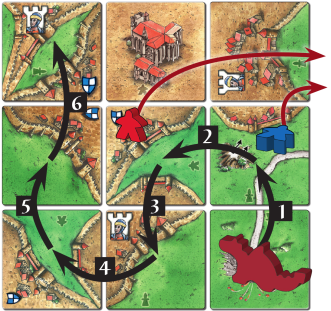
* Player A moves the dragon up.
* Player B moves the dragon left.
* Player C moves the dragon down.
* Player D moves the dragon left—it cannot move right.
* Then it is player A’s turn again, and the dragon moves up a tile.
* Then player B moves the dragon up once more, and the movement of the dragon is over.
* The BLUE and RED followers are returned to the supplies of their owners.
![]() Question: When a city, cloister, or road is completed by placing a dragon tile, is it scored before the movement of the dragon?
Question: When a city, cloister, or road is completed by placing a dragon tile, is it scored before the movement of the dragon?
The magic portal
If a player places a magic portal tile, on this turn he or she may deploy a follower to that tile or to a tile already in play. The portal is never really considered completed, as it is simply a doorway. (2/2013)
The usual rules must be followed —for example, the follower may not be deployed to an already occupied or completed feature.[23] Note that if placement of the portal tile causes completion of a feature, such as a cloister, you cannot deploy a follower to that feature using the magic portal, as it is considered completed before the move wood phase. (7/2014) [24]
![]() Question: If you place a magic portal tile, could you use it to send a follower as a farmer to a closed farm (that is, a farm completely surrounded by roads, cities, etc.)?
Question: If you place a magic portal tile, could you use it to send a follower as a farmer to a closed farm (that is, a farm completely surrounded by roads, cities, etc.)?
Answer: Since farms are never completed, you can use other mechanics to place a follower in a farm (magic portals, crop circles...). (1/2021)
The princess
If a player draws a tile with a princess, it may be placed according to the usual rules. If the player uses the tile to extend a city which is already occupied by one or more knights, the player may[25] remove one knight[26] [27] [28] (including his own) [29] from the city and return it to its owner. If the player does not remove a follower, he may deploy a follower as normal.[30]
- If there are knights of several players in the city, the player placing the tile may freely choose which knight is to be removed.
- If a knight is removed from the city, the player may not deploy or move any other figure (see below for more details.)
Scoring
When you complete one or more areas (e.g. a monastery, a road etc.) by placing a Princess and Dragon tile, you score them according to the normal rules.
Final scoring
There is no additional scoring at the end of the game with the Princess and Dragon tiles.
Additional clarifications
- The fairy does not provide any protection from the princess tile.
![]() Question: If the fairy is next to a knight (a follower placed in a city), does it provide any protection against the princess tile?
Question: If the fairy is next to a knight (a follower placed in a city), does it provide any protection against the princess tile?
Answer: The fairy offers no protection from the princess tile.
- A follower removed by a princess tile will not be entitled to score any points for the city it occupied or the fairy bonus.
![]() Question: If a princess tile completes a city with one follower previously placed in it with the fairy, does the player receive the 3-point fairy bonus for the completed city?
Question: If a princess tile completes a city with one follower previously placed in it with the fairy, does the player receive the 3-point fairy bonus for the completed city?
Answer: No, you would need a follower in the city to score it, or to get the fairy scoring bonus.
- The fairy may be moved if a player does not remove a follower with a princess tile and no follower is placed on it.
![]() Question: If the player placing the princess tile doesn't decide to place follower on the tile, is this player allowed to move the fairy next to one of their follower? Or does removing an opponent's follower with the princess tile constitute an action that nullifies their ability to move the fairy?
Question: If the player placing the princess tile doesn't decide to place follower on the tile, is this player allowed to move the fairy next to one of their follower? Or does removing an opponent's follower with the princess tile constitute an action that nullifies their ability to move the fairy?
Answer: When placing a princess tile, the fairy can be moved if no knight is removed and no follower is placed on the tile.
- The fairy may be moved when placing a volcano tile but it is not mandatory.
![]() Question: When placing a volcano, can the fairy be moved even if no follower placement is allowed by definition? Does that de-facto mean the fairy now must be moved by the current player if not already protecting one of their followers?
Question: When placing a volcano, can the fairy be moved even if no follower placement is allowed by definition? Does that de-facto mean the fairy now must be moved by the current player if not already protecting one of their followers?
Answer: When placing a volcano tile, the fairy is allowed to move but it is an optional action.
Other Expansions
This section contains additional information about the interactions with other Carcassonne expansions.
The fairy
- The fairy may only be assigned to followers:
- The fairy may not be assigned to special figures:
- If a player moves the fairy, the player also may not place any of following figures (12/2013, updated 1/2019, updated 5/2023):
- Normal follower (
 Base Game)
Base Game) - Big follower (
 Exp. 1 - Inns & Cathedrals)
Exp. 1 - Inns & Cathedrals) - Pig (
 Exp. 2 - Traders & Builders)
Exp. 2 - Traders & Builders) - Builder (
 Exp. 2 - Traders & Builders)
Exp. 2 - Traders & Builders) - Mayor (
 Exp. 5 - Abbey & Mayor)
Exp. 5 - Abbey & Mayor) - Barn (
 Exp. 5 - Abbey & Mayor)
Exp. 5 - Abbey & Mayor) - Wagon (
 Exp. 5 - Abbey & Mayor)
Exp. 5 - Abbey & Mayor) - Shepherd (
 Exp. 9 - Hills & Sheep)
Exp. 9 - Hills & Sheep) - Ringmaster (
 Exp. 10 - Under the Big Top)
Exp. 10 - Under the Big Top) - Guard follower (
 Exp. 11 - Ghosts, Castles & Cemeteries)
Exp. 11 - Ghosts, Castles & Cemeteries) - Abbot (Base Game -
 The Abbot)
The Abbot)
- Normal follower (
- If a player moves the fairy, the player also may place the following figure:
- Phantom (
 The Phantom) - according to additional clarifications. (12/2014)
The Phantom) - according to additional clarifications. (12/2014)
- Phantom (
 Exp. 2 - Traders & Builders:
Exp. 2 - Traders & Builders:
- If a player scored the fairy's 1 point bonus at the beginning of their turn, they may not score it again at the beginning of a double turn via the builder. (12/2013)
- Because builders and pigs are not followers, it is not possible to move the fairy next to either of them, as the fairy can only stand next to a follower.
 Exp. 4 - The Tower:
Exp. 4 - The Tower:
- The fairy can be moved to a tile where the only follower on the tile is on a tower.
- The fairy does not protect a follower from capture by a tower. (12/2013)
 Exp. 6 - Count, King & Robber: If the fairy is next to a follower on the losing feature when resolving a challenge, it does not provide the bonus 3 points to that follower, as the feature is incomplete.
Exp. 6 - Count, King & Robber: If the fairy is next to a follower on the losing feature when resolving a challenge, it does not provide the bonus 3 points to that follower, as the feature is incomplete.
![]() Question: If the fairy is on the same tile as the losing heretic or monk in a challenge, does the player still score the bonus 3 points?
Question: If the fairy is on the same tile as the losing heretic or monk in a challenge, does the player still score the bonus 3 points?
Answer: When a challenge is resolved (that is, when someone has won), both followers are returned to the player, so no one stands next to the fairy. [At the point that a challenge is resolved and one participant “scores” zero, the building that participant is in will be incomplete. Therefore, strictly speaking, that participant does not actually take part in “scoring”—say, in the way that a player without the majority in a city does—and so does not score the bonus points—ed.]
 Exp. 10 - Under the Big Top:
Exp. 10 - Under the Big Top:
- You may assign the fairy to an acrobat, in which case it counts for all acrobats in the pyramid (regardless of color). If the fairy is still there at the beginning of your turn, you score 1 point for each of your followers in the pyramid - This case relaxes the restriction that only one follower can receive points from the fairy.
- The 3-point fairy scoring bonus is not applicable to acrobats in a pyramid. [31]
 The Abbot: The 3-point fairy scoring bonus is not applicable to an abbot when removed.
The Abbot: The 3-point fairy scoring bonus is not applicable to an abbot when removed.
 Mini #1 - The Flying Machines: Only one follower can be "next to" (or connected to) the fairy. Thus, only one follower will receive points from the fairy. Even if another follower is placed in the same feature on the same tile (as with the Flying Machines), this would not be considered "next to" the fairy. Landing a follower on an acrobat pyramid would be the exception to this rule.
Mini #1 - The Flying Machines: Only one follower can be "next to" (or connected to) the fairy. Thus, only one follower will receive points from the fairy. Even if another follower is placed in the same feature on the same tile (as with the Flying Machines), this would not be considered "next to" the fairy. Landing a follower on an acrobat pyramid would be the exception to this rule.
 Crop Circles: Only one follower can be "next to" (or connected to) the fairy. Thus, only one follower will receive points from the fairy. Even if another follower is placed in the same feature on the same tile (as with the Crop Circles), this would not be considered "next to" the fairy.
Crop Circles: Only one follower can be "next to" (or connected to) the fairy. Thus, only one follower will receive points from the fairy. Even if another follower is placed in the same feature on the same tile (as with the Crop Circles), this would not be considered "next to" the fairy.
 The Festival: If a Festival is used to remove a follower, the fairy cannot be moved, as an action was still taken in the Move Wood or Deploy a Figure phase. (5/2014)
The Festival: If a Festival is used to remove a follower, the fairy cannot be moved, as an action was still taken in the Move Wood or Deploy a Figure phase. (5/2014)
The volcano
- When a tile with a volcano is placed, the player may deploy:
- A tower piece (
 Exp. 4 - The Tower)
Exp. 4 - The Tower) - Barn, since that is not fully on the tile (
 Exp. 5 - Abbey & Mayor)
Exp. 5 - Abbey & Mayor) - A bridge, as necessary (
 Exp. 8 - Bridges, Castles & Bazaars)
Exp. 8 - Bridges, Castles & Bazaars) - An acrobat on an adjacent acrobat space or pyramid (
 Exp. 10 - Under the Big Top)
Exp. 10 - Under the Big Top) - A follower to the (
 The Wheel of Fortune)
The Wheel of Fortune) - Little Buildings, since they are not figures (
 Little Buildings)
Little Buildings) - The fairy (or move, it)
- A tower piece (
- When a tile with a volcano is placed, the player may not deploy the following figures to the tile:
- Normal follower (
 Base Game)
Base Game) - Big follower (
 Exp. 1 - Inns & Cathedrals)
Exp. 1 - Inns & Cathedrals) - Pig (
 Exp. 2 - Traders & Builders)
Exp. 2 - Traders & Builders) - Builder (
 Exp. 2 - Traders & Builders)
Exp. 2 - Traders & Builders) - Mayor (
 Exp. 5 - Abbey & Mayor)
Exp. 5 - Abbey & Mayor) - Wagon (
 Exp. 5 - Abbey & Mayor)
Exp. 5 - Abbey & Mayor) - Shepherd (
 Exp. 9 - Hills & Sheep)
Exp. 9 - Hills & Sheep) - Ringmaster (
 Exp. 10 - Under the Big Top)
Exp. 10 - Under the Big Top) - Guard follower (
 Exp. 11 - Ghosts, Castles & Cemeteries)
Exp. 11 - Ghosts, Castles & Cemeteries) - Abbot (Base Game -
 The Abbot)
The Abbot) - Phantom (
 The Phantom)
The Phantom)
- Normal follower (
The dragon
- The dragon eats all followers on a tile:
- Normal follower (
 Base Game)
Base Game) - Big follower (
 Exp. 1 - Inns & Cathedrals)
Exp. 1 - Inns & Cathedrals) - Pig (
 Exp. 2 - Traders & Builders)
Exp. 2 - Traders & Builders) - Builder (
 Exp. 2 - Traders & Builders)
Exp. 2 - Traders & Builders) - Follower on a tower (
 Exp. 4 - The Tower)
Exp. 4 - The Tower) - Mayor (
 Exp. 5 - Abbey & Mayor)
Exp. 5 - Abbey & Mayor) - Barn (
 Exp. 5 - Abbey & Mayor)
Exp. 5 - Abbey & Mayor) - Wagon (
 Exp. 5 - Abbey & Mayor)
Exp. 5 - Abbey & Mayor) - Shepherd, and the sheep next to it (
 Exp. 9 - Hills & Sheep)
Exp. 9 - Hills & Sheep) - Ringmaster (
 Exp. 10 - Under the Big Top)
Exp. 10 - Under the Big Top) - Guard follower (
 Exp. 11 - Ghosts, Castles & Cemeteries)
Exp. 11 - Ghosts, Castles & Cemeteries) - Abbot (Base Game -
 The Abbot)
The Abbot) - Phantom (
 The Phantom) -as per the additional clarifications (3/2015)
The Phantom) -as per the additional clarifications (3/2015)
- Normal follower (
- The dragon eats the following neutral figures on a tile:
- Ghost (
 Exp. 11 - Ghosts, Castles & Cemeteries) -along with the follower it is assigned to.
Exp. 11 - Ghosts, Castles & Cemeteries) -along with the follower it is assigned to. - Mage (
 Mini #5 - Mage & Witch)
Mini #5 - Mage & Witch) - Witch (
 Mini #5 - Mage & Witch)
Mini #5 - Mage & Witch) - Gingerbread Man (Winter Edition -
 The Gingerbread Man) -as per the iOS version (12/2014)
The Gingerbread Man) -as per the iOS version (12/2014)
- Ghost (
- The dragon cannot eat the following neutral figures across two tiles:
- Teacher (
 The School) -as per the additional clarifications (see below) (4/2015)
The School) -as per the additional clarifications (see below) (4/2015)
- Teacher (
 Exp. 2 - Traders & Builders:
Exp. 2 - Traders & Builders:
- If the dragon eats a player's last knight in a city where the player's builder is present, the builder is automatically returned to the player's supply. (The reason: builders are not followers.)
- If the dragon eats a player's last thief [32] on a road where the player's builder is present, the builder is automatically returned to the player's supply.
- If the dragon eats a player's last farmer in a farm where the player's pig is present, the pig is automatically returned to the player's supply. (The reason: pigs are not followers.)
 Exp. 4 - The Tower: Placing a tower piece happens before moving the dragon.
Exp. 4 - The Tower: Placing a tower piece happens before moving the dragon.
![]() Question: If you place a dragon tile and add a piece to a tower, what happens first: follower capture by the tower, or dragon movement?
Question: If you place a dragon tile and add a piece to a tower, what happens first: follower capture by the tower, or dragon movement?
Answer: Prisoners are taken first; placing a tower piece is an alternative to deploying a follower, so this occurs before dragon movement.
 Exp. 6 - Count, King & Robber:
Exp. 6 - Count, King & Robber:
- The dragon cannot move into the City of Carcassonne.
- Note that the dragon can still move onto tiles that include the City of Carcassonne, treating the landscape areas as normal tiles, but it must stay outside the City itself. Thus only figures outside the City are eaten, and those inside (including the Count) are safe. (12/2013)
 Exp. 8 - Bridges, Castles & Bazaars: The dragon cannot eat followers placed in castles. A castle is between two tiles, and the dragon visits up to 6 tiles when moving, affecting the tiles themselves but not the spaces between tiles.
Exp. 8 - Bridges, Castles & Bazaars: The dragon cannot eat followers placed in castles. A castle is between two tiles, and the dragon visits up to 6 tiles when moving, affecting the tiles themselves but not the spaces between tiles.
 Exp. 9 - Hills & Sheep: If a tile with a dragon icon is placed and extends the field with the active player’s shepherd, the player can perform the shepherd action (expand or herd the flock) before the dragon moves. (3/2015)
Exp. 9 - Hills & Sheep: If a tile with a dragon icon is placed and extends the field with the active player’s shepherd, the player can perform the shepherd action (expand or herd the flock) before the dragon moves. (3/2015)
 Exp. 11 - Ghosts, Castles & Cemeteries: If the dragon eats a follower, any ghosts assigned to the follower will also be removed and returned to the ghost supply.
Exp. 11 - Ghosts, Castles & Cemeteries: If the dragon eats a follower, any ghosts assigned to the follower will also be removed and returned to the ghost supply.
 The Wheel of Fortune:
The Wheel of Fortune:
- The dragon may not enter the Wheel of Fortune.
- The dragon can fly around the outside of the Wheel of Fortune, treating the landscape areas as normal tiles and eating any followers on those tiles. Followers on the Wheel of Fortune itself are unaffected. This represents a notable change from previous FAQs. (10/2012)
 Castles in Germany: German castles do not protect followers within, or on any feature on the tile. (10/2015)
Castles in Germany: German castles do not protect followers within, or on any feature on the tile. (10/2015)
 The Markets of Leipzig: The dragon may not enter the city of Leipzig, due to its similarity to the city of Carcassonne (see
The Markets of Leipzig: The dragon may not enter the city of Leipzig, due to its similarity to the city of Carcassonne (see  Exp. 6 - Count, King & Robber) but this is not officially confirmed.
Exp. 6 - Count, King & Robber) but this is not officially confirmed.
 The School: The dragon is allowed on the school tiles but cannot eat the neutral teacher figure placed on the school, since it spans across two tiles. (4/2015)
The School: The dragon is allowed on the school tiles but cannot eat the neutral teacher figure placed on the school, since it spans across two tiles. (4/2015)
The magic portal
- A magic portal may be used to place any follower on a legal feature for that follower (updated 3/2015):
- Normal follower (
 Base Game)
Base Game) - Big follower (
 Exp. 1 - Inns & Cathedrals)
Exp. 1 - Inns & Cathedrals) - Mayor (
 Exp. 5 - Abbey & Mayor)
Exp. 5 - Abbey & Mayor) - Wagon (
 Exp. 5 - Abbey & Mayor)
Exp. 5 - Abbey & Mayor) - Ringmaster (
 Exp. 10 - Under the Big Top)
Exp. 10 - Under the Big Top) - Guard follower (
 Exp. 11 - Ghosts, Castles & Cemeteries)
Exp. 11 - Ghosts, Castles & Cemeteries) - Abbot (Base Game -
 The Abbot)
The Abbot) - Phantom (
 The Phantom)
The Phantom)
- However, because the magic portal counts as a feature, a wooden follower and the Phantom cannot BOTH use the magic portal on a turn – the first follower placed on the magic portal claims the magic portal, and no follower (including the Phantom) can be placed on a claimed feature. (1/2013)
- Normal follower (
- A magic portal may not be used to place these figures, as they are not followers (updated 3/2015):
 Exp. 6 - Count, King & Robber:
Exp. 6 - Count, King & Robber:
- Followers can use the magic portal to be deployed on features outside the City of Carcassonne. (1/2013)
- Followers cannot use the magic portal to be deployed to the City of Carcassonne, as they are not occupied using regular placement rules. (confirmed 5/2013)
 Exp. 10 - Under the Big Top: You can use a magic portal to place one of your normal followers or your phantom on an acrobat space/pyramid.
Exp. 10 - Under the Big Top: You can use a magic portal to place one of your normal followers or your phantom on an acrobat space/pyramid.
 The Wheel of Fortune:
The Wheel of Fortune:
- Followers can use the magic portal to be deployed on features outside the Wheel of Fortune. (1/2013)
- Followers cannot use the magic portal to be deployed to the Wheel of Fortune, as they are not occupied using regular placement rules. (confirmed 5/2013)
 Mini #1 - The Flying Machines:
Mini #1 - The Flying Machines:
- A follower a magic portal cannot land on a flying machine.
- A flier cannot land on a magic portal. (2/2013)
 The School:
The School:
- Followers can use the magic portal to be deployed on features outside on the school tiles (outside the school itself). (1/2013)
- Followers cannot use the magic portal to be deployed to the school itself, as they are not occupied using regular placement rules. (confirmed 5/2013)
 The Markets of Leipzig:
The Markets of Leipzig:
- Followers can use the magic portal to be deployed on features outside the City of Leipzig. (1/2019)
- Followers cannot use the magic portal to be deployed to the City of Leipzig, as they are not occupied using regular placement rules. (1/2019)
The princess
- If a player uses the princess to remove a knight from a city, the player also may not place:
- Normal follower (
 Base Game)
Base Game) - Big follower (
 Exp. 1 - Inns & Cathedrals)
Exp. 1 - Inns & Cathedrals) - Pig (
 Exp. 2 - Traders & Builders)
Exp. 2 - Traders & Builders) - Builder (
 Exp. 2 - Traders & Builders)
Exp. 2 - Traders & Builders) - Mayor (
 Exp. 5 - Abbey & Mayor)
Exp. 5 - Abbey & Mayor) - Barn (
 Exp. 5 - Abbey & Mayor)
Exp. 5 - Abbey & Mayor) - Wagon (
 Exp. 5 - Abbey & Mayor)
Exp. 5 - Abbey & Mayor) - Shepherd, and the sheep next to it (
 Exp. 9 - Hills & Sheep)
Exp. 9 - Hills & Sheep) - Ringmaster (
 Exp. 10 - Under the Big Top)
Exp. 10 - Under the Big Top) - Guard follower (
 Exp. 11 - Ghosts, Castles & Cemeteries)
Exp. 11 - Ghosts, Castles & Cemeteries) - Abbot (Base Game -
 The Abbot)
The Abbot) - Phantom (
 The Phantom) - See note below
The Phantom) - See note below - The fairy
- Normal follower (
 Exp. 2 - Traders & Builders:
Exp. 2 - Traders & Builders:
- If the princess removes a player's last knight in a city where the player's builder is present, the builder is automatically returned to the player's supply.
- Builders cannot be directly removed by a princess, as builders are not followers.
 Exp. 4 - The Tower: The princess cannot seduce a follower on a tower located in a city.
Exp. 4 - The Tower: The princess cannot seduce a follower on a tower located in a city.
![]() Question: If the dragon can eat a follower on a tower, can the follower also be seduced by a princess?
Question: If the dragon can eat a follower on a tower, can the follower also be seduced by a princess?
Answer: No. The tower is not a part of the city: they are two separate areas.
 The Phantom: The placement of a princess tile with removal of a knight from the city cannot be used as a first “follower move” and be followed by placement of the Phantom (e.g. into the now-vacated city). As per the rules for the princess, "if a knight is removed from the city, the player may not deploy or move any other figure." [This combo would be too powerful in allowing city stealing. –ed.]
The Phantom: The placement of a princess tile with removal of a knight from the city cannot be used as a first “follower move” and be followed by placement of the Phantom (e.g. into the now-vacated city). As per the rules for the princess, "if a knight is removed from the city, the player may not deploy or move any other figure." [This combo would be too powerful in allowing city stealing. –ed.]
 The Tunnel: If using the tunnel tokens from The Tunnel, then the road shown on the tile with a tunnel is indeed broken, and the segments may never actually meet.
The Tunnel: If using the tunnel tokens from The Tunnel, then the road shown on the tile with a tunnel is indeed broken, and the segments may never actually meet.
House Rules
- Replace dragon tiles into the bag and redraw right away if there is no dragon in play yet. (Thanks to dwhitworth)
- Players are allowed to claim a fairy point until the bag is handed to the next player, but then it’s tough if they forget! (Thanks to dwhitworth)
- Abandon the 1-point bonus for the fairy altogether, instead awarding 5 points for a protected follower completing a feature. (Thanks to viberunner)
- The fairy does not prevent the dragon from moving to a tile, but it still prevents the dragon from eating any figures on that tile. (Thanks to jrizos)
Tile distribution
Note: A different version of the tile marked with a "*" was included in ![]() Carcassonne by Coding Monkeys implementation, as seen here:
Carcassonne by Coding Monkeys implementation, as seen here:
Footnotes
For Icons explanation and licensing please visit Icons page.
Footnotes
- ↑
 If using
If using  The Tunnel, the road shown on this tile may be affected (See Other Expansions for more details).
The Tunnel, the road shown on this tile may be affected (See Other Expansions for more details).
- ↑
 The RGG edition of the
The RGG edition of the  Big Box 1 states only that “whenever a player places no follower on his turn, he may, instead, place the fairy.” However, it still seems reasonable to conclude that fairy placement is an alternative to placing a pig, builder, tower piece, or other figure, even if they are not explicitly mentioned.
Big Box 1 states only that “whenever a player places no follower on his turn, he may, instead, place the fairy.” However, it still seems reasonable to conclude that fairy placement is an alternative to placing a pig, builder, tower piece, or other figure, even if they are not explicitly mentioned.
- ↑
 The bolded text (“next to”) represents the current HiG rules, and the fairy rules have been reiterated in further clarifications. However, the RGG and ZMG rules instead state that the fairy is simply placed on the tile that has one of the player’s followers. This lack of specificity in the RGG and ZMG rules would be an important consideration in the 2nd and 3rd effects of the fairy discussed below. (updated 5/2013)
The bolded text (“next to”) represents the current HiG rules, and the fairy rules have been reiterated in further clarifications. However, the RGG and ZMG rules instead state that the fairy is simply placed on the tile that has one of the player’s followers. This lack of specificity in the RGG and ZMG rules would be an important consideration in the 2nd and 3rd effects of the fairy discussed below. (updated 5/2013)
- ↑
 It seems that a player with no followers on the board cannot move the fairy, even if he or she did not deploy a figure that turn, as there is not a legal tile to which the fairy can be moved.
It seems that a player with no followers on the board cannot move the fairy, even if he or she did not deploy a figure that turn, as there is not a legal tile to which the fairy can be moved.
- ↑
 In the RGG and ZMG versions of the rules, a follower on the same tile as the fairy will generate the 1-point bonus (again, because in these rules the fairy is not specifically placed beside a single follower). Thus, by these rules, it would be conceivable that multiple players could benefit from fairy placement if there were multiple followers on (different features of) the same tile. (updated 5/2013)
In the RGG and ZMG versions of the rules, a follower on the same tile as the fairy will generate the 1-point bonus (again, because in these rules the fairy is not specifically placed beside a single follower). Thus, by these rules, it would be conceivable that multiple players could benefit from fairy placement if there were multiple followers on (different features of) the same tile. (updated 5/2013)
- ↑
 This sentence stems from an FAQ and is now included in the RGG
This sentence stems from an FAQ and is now included in the RGG  Big Box 3 rules.
Big Box 3 rules.
- ↑
 The RGG version of the rules states that the follower simply must stand on the tile with the fairy to be eligible for the 3 point bonus, again because specificity in fairy placement is not required.
Interestingly, the ZMG version emphasizes that the fairy and follower must “stand together” to receive the points, even though placement of the fairy in the ZMG version is only to the tile generally. (updated 5/2013)
The RGG version of the rules states that the follower simply must stand on the tile with the fairy to be eligible for the 3 point bonus, again because specificity in fairy placement is not required.
Interestingly, the ZMG version emphasizes that the fairy and follower must “stand together” to receive the points, even though placement of the fairy in the ZMG version is only to the tile generally. (updated 5/2013)
- ↑
 The clarification regarding all figures is a change in
The clarification regarding all figures is a change in  Big Box 2 and
Big Box 2 and  Big Box 3. Previously, builders and pigs could also be deployed when a volcano tile was placed.
Big Box 3. Previously, builders and pigs could also be deployed when a volcano tile was placed.
- ↑
 This is a notable change in the rules, especially in respect of a previously available FAQ which clearly stated that the fairy could only be moved when the player relinquished the deployment of a follower —and since no follower could be deployed when a volcano tile is placed, the fairy could not be moved either. That ruling has obviously been overturned, since the rules now state that the fairy may be moved when a volcano tile is placed. Indeed, the rules now say that a player may move the fairy whenever he or she does not place a follower. Thus, the player no longer has to "choose" not to deploy a follower— in any case when a follower is not or cannot be deployed, the fairy may be moved. This is in fact consistent with another FAQ, which stated that the fairy may still be moved if the player has run out of followers.
This is a notable change in the rules, especially in respect of a previously available FAQ which clearly stated that the fairy could only be moved when the player relinquished the deployment of a follower —and since no follower could be deployed when a volcano tile is placed, the fairy could not be moved either. That ruling has obviously been overturned, since the rules now state that the fairy may be moved when a volcano tile is placed. Indeed, the rules now say that a player may move the fairy whenever he or she does not place a follower. Thus, the player no longer has to "choose" not to deploy a follower— in any case when a follower is not or cannot be deployed, the fairy may be moved. This is in fact consistent with another FAQ, which stated that the fairy may still be moved if the player has run out of followers.
- ↑
 When playing with other expansions, you will be able to perform other actions not related with meeple placement as well. So you may not deploy meeples or some special figures (pig, builder, shepherd) to the volcano tile but you may carry out other actions:
When playing with other expansions, you will be able to perform other actions not related with meeple placement as well. So you may not deploy meeples or some special figures (pig, builder, shepherd) to the volcano tile but you may carry out other actions:
- Fairy action (
 Exp. 3 - The Princess & the Dragon): move the fairy (as indicated in the rules).
Exp. 3 - The Princess & the Dragon): move the fairy (as indicated in the rules).
- Tower actions (
 Exp. 4 - The Tower): deploy a tower floor, place a follower on top of a tower.
Exp. 4 - The Tower): deploy a tower floor, place a follower on top of a tower.
- Barn actions (
 Exp. 5 - Abbey & Mayor): place your barn on one of the corners of the volcano tile.
Exp. 5 - Abbey & Mayor): place your barn on one of the corners of the volcano tile.
- Shepherd actions (
 Exp. 9 - Hills & Sheep): expand the flock, herd the flock into the stable.
Exp. 9 - Hills & Sheep): expand the flock, herd the flock into the stable.
- Acrobat actions (
 Exp. 10 - Under the Big Top): deploy an acrobat, score an acrobat pyramid.
Exp. 10 - Under the Big Top): deploy an acrobat, score an acrobat pyramid.
- Wheel of Fortune actions (
 The Wheel of Fortune): place a follower on the Wheel of Fortune.
The Wheel of Fortune): place a follower on the Wheel of Fortune.
- Abbot actions (
 The Abbot): remove your abbot and score its points.
The Abbot): remove your abbot and score its points.
- Ferry actions (
 Mini #3 - The Ferries): move ferries on roads extended by the volcano tile.
Mini #3 - The Ferries): move ferries on roads extended by the volcano tile.
- Little building actions (
 Little Buildings): place a little building on the tile just played.
Little Buildings): place a little building on the tile just played.
- Russian promos actions (
 Russian Promos): retrieve 1 follower trapped by Vodyanoy or Solovei Razboynik, move thieves to the Solovei Razboynik tile.
Russian Promos): retrieve 1 follower trapped by Vodyanoy or Solovei Razboynik, move thieves to the Solovei Razboynik tile.
- Follower protection actions (
 The Peasant Revolts): protect 1 follower already placed from peasant revolts.
The Peasant Revolts): protect 1 follower already placed from peasant revolts.
- Fairy action (
- ↑
 This is a clarification, in accordance with the FAQ. The original rules made no mention of the fairy. The dragon tile may be placed, no follower deployed, and the fairy moved to protect a follower, before the dragon actually moves.
This is a clarification, in accordance with the FAQ. The original rules made no mention of the fairy. The dragon tile may be placed, no follower deployed, and the fairy moved to protect a follower, before the dragon actually moves.
- ↑
 The RGG edition contradicts the sequence described in the HiG edition and the FAQ: "If placement of the tile completes a feature, it is scored as normal. Then, the game is briefly interrupted while the Dragon moves." So, according to the RGG edition of the
The RGG edition contradicts the sequence described in the HiG edition and the FAQ: "If placement of the tile completes a feature, it is scored as normal. Then, the game is briefly interrupted while the Dragon moves." So, according to the RGG edition of the  Big Box 1, dragon movement occurs after scoring; according to HiG it occurs before scoring. The ZMG edition follows the HiG rule and specifically adds that the interruption is "before scoring." (5/2013)
Big Box 1, dragon movement occurs after scoring; according to HiG it occurs before scoring. The ZMG edition follows the HiG rule and specifically adds that the interruption is "before scoring." (5/2013)
This discrepancy is present in the text of this section for all the RGG Big Boxes containing The Princess and The Dragon ( Big Box 1-3). However the Turn sequence table at the end of the manual shows the dragon movement before scoring, the same as the HiG edition. Thus, it seems a persistent editing error in the manuals. (1/2019)
Big Box 1-3). However the Turn sequence table at the end of the manual shows the dragon movement before scoring, the same as the HiG edition. Thus, it seems a persistent editing error in the manuals. (1/2019)
- ↑
 The Dragon Meal Plan FAQ document by HiG is not currently available at its original location:
The Dragon Meal Plan FAQ document by HiG is not currently available at its original location:
- http://www.hans-im-glueck.de/fileadmin/data_archive/Regeln/Carc_3Erw_Drache_FAQ.pdf
- ↑
 In rules prior to March 2015, neutral figures, including the mage, the witch, and the teacher could not be eaten by the dragon. (3/2015, updated 1/2019)
In rules prior to March 2015, neutral figures, including the mage, the witch, and the teacher could not be eaten by the dragon. (3/2015, updated 1/2019)
- ↑
 The dragon is allowed on the school tiles but cannot eat the neutral teacher figure, as it is placed on the school, a feature spanning across two tiles. (4/2015)
The dragon is allowed on the school tiles but cannot eat the neutral teacher figure, as it is placed on the school, a feature spanning across two tiles. (4/2015)
- ↑
 The Gingerbread Man (when playing the iOS version) can also be eaten by the dragon. (12/2014)
The Gingerbread Man (when playing the iOS version) can also be eaten by the dragon. (12/2014)
- ↑
 Ringmasters can also be eaten by the dragon. (1/2019)
Ringmasters can also be eaten by the dragon. (1/2019)
- ↑
 The barn cannot be eaten by the dragon, as is clarified in
The barn cannot be eaten by the dragon, as is clarified in  Exp. 5 - Abbey & Mayor. Remember, the barn stands at the intersection of 4 tiles, while the dragon only affects figures discretely on a single tile.
Exp. 5 - Abbey & Mayor. Remember, the barn stands at the intersection of 4 tiles, while the dragon only affects figures discretely on a single tile.
- ↑
 This means that the dragon does not affect any printed elements on a tile, since it cannot eat the tile itself. So inns, cathedrals, printed sheep or any other feature on a tile would be undisturbed by the presence of the dragon. Therefore, all scorings would be conducted as usual even if any of these elements is on a tile with the dragon.
This means that the dragon does not affect any printed elements on a tile, since it cannot eat the tile itself. So inns, cathedrals, printed sheep or any other feature on a tile would be undisturbed by the presence of the dragon. Therefore, all scorings would be conducted as usual even if any of these elements is on a tile with the dragon.
- ↑
 The dragon should not enter the city of Leipzig either (
The dragon should not enter the city of Leipzig either ( The Markets of Leipzig), due to its similarity to the City of Carcassonne (see
The Markets of Leipzig), due to its similarity to the City of Carcassonne (see  Exp. 6 - Count, King & Robber) but this is not officially confirmed. (1/2019)
Exp. 6 - Count, King & Robber) but this is not officially confirmed. (1/2019)
- ↑
 Followers in castles (
Followers in castles ( Exp. 8 - Bridges, Castles & Bazaars) are safe from the dragon because they are not on a single tile. This clarification was first added to the
Exp. 8 - Bridges, Castles & Bazaars) are safe from the dragon because they are not on a single tile. This clarification was first added to the  Big Box 3 version of the rules. (modified 12/2013)
Big Box 3 version of the rules. (modified 12/2013)
- ↑
 German castles (
German castles ( Castles in Germany) do not protect followers within, or on any feature on the tile. (10/2015)
Castles in Germany) do not protect followers within, or on any feature on the tile. (10/2015)
- ↑
 The original rules stated that a follower could not be deployed to a feature which had not yet been scored — leaving the possibility that a follower could use a magic portal to reach a feature which had been completed, but not scored. This was corrected in an FAQ, and now in these rules. The magic portal may not be used to reach a completed feature, whether it was scored or not.
The original rules stated that a follower could not be deployed to a feature which had not yet been scored — leaving the possibility that a follower could use a magic portal to reach a feature which had been completed, but not scored. This was corrected in an FAQ, and now in these rules. The magic portal may not be used to reach a completed feature, whether it was scored or not.
- ↑
 This means that a follower using the magic portal can only be placed on an unoccupied incomplete feature on any tile of the playing area. Therefore, the destination feature has to be claimable. As a consequence, the follower cannot land on another magic portal.
This means that a follower using the magic portal can only be placed on an unoccupied incomplete feature on any tile of the playing area. Therefore, the destination feature has to be claimable. As a consequence, the follower cannot land on another magic portal.
- ↑
 This is a change to the original rules, which stated that the princess must remove a knight, unless there was no knight in the city at all. The change, first seen in
This is a change to the original rules, which stated that the princess must remove a knight, unless there was no knight in the city at all. The change, first seen in  Big Box 2, brings the procedure in line with that of the tower: both may remove a follower if the player wishes. The RGG and ZMG editions of the rules maintain the rule that princesses must remove a follower. (updated 12/2013)
Big Box 2, brings the procedure in line with that of the tower: both may remove a follower if the player wishes. The RGG and ZMG editions of the rules maintain the rule that princesses must remove a follower. (updated 12/2013)
- ↑
 Any follower in a city is a knight. This includes normal followers, big followers, mayors, and wagons. (01/2015)
Any follower in a city is a knight. This includes normal followers, big followers, mayors, and wagons. (01/2015)
- ↑
 A clarification indicating that either a big or normal follower could be removed is specifically included in the
A clarification indicating that either a big or normal follower could be removed is specifically included in the  Big Box 1-3 rules. This constitutes a slight rule change from the original rules – according to an early FAQ, the big follower could only be removed from a city when there were no other knights. A big follower can now be removed from the city just like any other. (updated 01/2015)
Big Box 1-3 rules. This constitutes a slight rule change from the original rules – according to an early FAQ, the big follower could only be removed from a city when there were no other knights. A big follower can now be removed from the city just like any other. (updated 01/2015)
- ↑
 Specific comments that the mayor and wagon can be removed by the princess are found in Big Box 2 and 3, but not in the rules from the stand-alone expansion. (updated 01/2015)
Specific comments that the mayor and wagon can be removed by the princess are found in Big Box 2 and 3, but not in the rules from the stand-alone expansion. (updated 01/2015)
- ↑
 This clarification in parentheses was first added to the 2010 version of the rules. (12/2013)
This clarification in parentheses was first added to the 2010 version of the rules. (12/2013)
- ↑
 This sentence was added when the requirement of removing a knight became an option. It replaced the sentence: “If [the player] places the tile so that it adds to an empty city, or only starts a new city, he may place a follower (or other figure) in the normal way.” The RGG and ZMG editions keep various wordings of the old sentence. (12/2013)
This sentence was added when the requirement of removing a knight became an option. It replaced the sentence: “If [the player] places the tile so that it adds to an empty city, or only starts a new city, he may place a follower (or other figure) in the normal way.” The RGG and ZMG editions keep various wordings of the old sentence. (12/2013)
- ↑
 This restriction is not included explicitly in the rules (only the 1-point fairy bonus is mentioned) but it comes from the interpretation of the rules:
This restriction is not included explicitly in the rules (only the 1-point fairy bonus is mentioned) but it comes from the interpretation of the rules:
- During the game, acrobats are scored in the "Move Wood" phase and players receive the 3-point fairy bonus when scoring completed features in the scoring phase. Since both actions take place in different phases, acrobats cannot receive this fairy bonus during the game.
- After the game, acrobats should not get the 3-point scoring bonus when scored for the sake of consistency. An acrobat pyramid is not a tile-based feature but a follower-based scoring, so no feature is scored either at the end of the game in this case and no fairy bonus should be applied. (4/2020; updated 7/2020)
- During the game, acrobats are scored in the "Move Wood" phase and players receive the 3-point fairy bonus when scoring completed features in the scoring phase. Since both actions take place in different phases, acrobats cannot receive this fairy bonus during the game.
- ↑
 A thief is any follower placed on a road. (The reason: builders are not followers.)
A thief is any follower placed on a road. (The reason: builders are not followers.)
The Tower
Warning: Default sort key "The Tower (1st edition)" overrides earlier default sort key "The Princess and The Dragon (1st edition)".
 |
You are reading the rules for this tile design. |
 | Read the following rules if your tiles look like this. |
| If your tiles have a different design, then choose a game from Spin-offs. |  |
Z-Man Games |
Rio Grande Games |
General info and comments

The Tower was originally released by Hans im Glück in 2006. The tiles of the first German editions had no expansion symbol.
This is the fourth major expansion for Carcassonne and introduces a new aspect to the game. With this expansion you can build high towers from which you can capture opposing players' followers, and hold them for ransom or wait for a one-for-one exchange.
New features/things are:
- Towers
A Carcassonne expansion is not really a Carcassonne expansion when there are no new tiles, so in the box you also find 18 tiles that represent city segments, road segments and cloisters in new configurations plus the addition of tower foundations which will help create much more than a beautiful landscape.
Contents
- 18 new land tiles
- 30 tower pieces (in one neutral color)
- 1 tower as tile dispenser [1]
Rules
Preparation
The 18 tiles should be mixed with the rest of the tiles.
Each player receives a number of tower pieces, according to the total number of players.
| Number of players | Tower floors |
|---|---|
| 2 players | |
| 3 players | |
| 4 players | |
| 5 players | |
| 6 players |
Placing a tile
The new land tiles are placed in the usual way. Apart from the tower foundations, there are no new elements on the tiles.
| You can see the new feature on the right middle of the tile - the foundation of an old tower. | |
| Notice that in the tile shown, the road over the bridge divides both farms. |
Deploying a follower
Instead of moving the fairy or deploying a follower, builder, or pig, a player may now decide to place one of his or her tower pieces on any tile with a tower foundation which is already in play, or on a tower which is already under construction; [2] or to finish the construction of a tower by deploying a follower to the top of it. [3]
Place a tower piece and take a prisoner
Whenever a player places a tower piece, he or she may take one follower prisoner. [4] [5] [6] [7] [8] Builders and pigs cannot be taken prisoner. [9] Which followers can be captured depends on the height of the tower on which the tower piece was just placed. If the tower has one storey, the player has a choice of five tiles from which a follower can be taken prisoner: the tower tile itself, as well as the tiles which connect to it horizontally and vertically.
If the tower is built to the second storey, then the player has nine opportunities for taking a prisoner.
With every piece placed on the tower, its range increases by four tiles. [10] It is possible to take prisoners over ‘holes’ in the tile placement, as well as over other towers of any height. [11] There is no limit to how high a tower may be built.
When the player takes a follower of another player prisoner, then the capturing player should place the prisoner clearly in front of themselves. If the player takes one of his or her own followers prisoner, it should be returned to the supply. Should the last thief, knight, or farmer of a player be removed from a road, city, or farm which includes the player's builder or pig, then the builder or pig is also removed and returned to the player. [12]
Deploy a follower to a tower
If a follower is deployed to the top of a tower, [13] [14] [15] [16] [17] the construction of the tower is finished and it may not be built any further. [18] The follower remains on top of the tower until the end of the game and is not removed or returned to the player unless eaten by the dragon [19] [20] [21] or captured by another tower. [22] [23] [24] [25] This action may be useful when a player wishes to protect a more valuable follower from capture.
Prisoners
Whenever two players have captured one of each other's followers, they are immediately exchanged and are so returned to their owners. No negotiation is necessary or allowed. The exchange is automatic! [26] If one of the players has several prisoners belonging to the other player, the owner may decide which prisoner should be returned. [27]
Furthermore, during their turn a player may decide to pay the ransom [28] and buy back one prisoner from one opponent. [29] In this case, the player should move their scoring marker on the scoreboard back three spaces, and the marker of the opponent forward three spaces. If the player does not have 3 points, the player may not pay the ransom to reclaim their follower. [30] Once returned, a follower may be used immediately.
House Rules
- Towers cannot capture over empty tiles. (Thanks to viberunner)
- A captured meeple cannot be returned by payment of a ransom (the “Eye for an Eye” rule). (Thanks to keyofnight)
- A single-storey tower can only capture a follower on its own tile. Each additional storey adds an additional tile of range in each direction – the rate of increasing range is the same as the normal rules, but the starting point is less powerful (the “No Surprises” rule). (Thanks to keyofnight)
- A tower can also capture followers on tiles diagonal to the tower tile. The distance to the capture tile is considered to be the smallest number of horizontal and vertical moves needed to get there, so a diagonal adjacent to the tower tile is considered to be 2 tiles away. (Thanks to Yi Niu)
Tile distribution
Footnotes
For Icons explanation and licensing please visit Icons page.
Footnotes
- ↑
 Taking the tower apart is not recommended. The tiles can be drawn from the top as well as from the bottom. We recommend that the tiles are drawn from the top, since the fewer tiles there are in the tower, the greater the danger that the other tiles will fall out when they are drawn from the bottom.
Taking the tower apart is not recommended. The tiles can be drawn from the top as well as from the bottom. We recommend that the tiles are drawn from the top, since the fewer tiles there are in the tower, the greater the danger that the other tiles will fall out when they are drawn from the bottom.
- ↑
 A bridge that would potentially span a tower foundation does not prevent the growth of that tower, and that a tower that was already present does not prevent bridge placement. If the two structures would interfere with each other, the tower pieces can be moved so that they are no longer on the tower foundation symbol. Both structures can then be placed without conflict. (11/2013)
A bridge that would potentially span a tower foundation does not prevent the growth of that tower, and that a tower that was already present does not prevent bridge placement. If the two structures would interfere with each other, the tower pieces can be moved so that they are no longer on the tower foundation symbol. Both structures can then be placed without conflict. (11/2013)
- ↑
 A follower cannot be placed on a tower foundation to prevent a tower being built. Only tower blocks can be placed on tower foundations. The tower can only be blocked when it already exists.
A follower cannot be placed on a tower foundation to prevent a tower being built. Only tower blocks can be placed on tower foundations. The tower can only be blocked when it already exists.
- ↑
 The original rules did not mention big followers, but several FAQs stated that they are treated in exactly the same way as normal followers, as the new rules now describe.
The original rules did not mention big followers, but several FAQs stated that they are treated in exactly the same way as normal followers, as the new rules now describe.
- ↑
 There is a slight change in the rules here. The original rules stated that it was possible to take “one follower of an opponent prisoner,” while the new rules only say that it is possible to take “one follower prisoner.” It is now quite possible for a player to choose to “capture” his or her own followers, contradicting an earlier FAQ. The RGG edition of the
There is a slight change in the rules here. The original rules stated that it was possible to take “one follower of an opponent prisoner,” while the new rules only say that it is possible to take “one follower prisoner.” It is now quite possible for a player to choose to “capture” his or her own followers, contradicting an earlier FAQ. The RGG edition of the  Big Box 1 also changes this rule.
Big Box 1 also changes this rule.
- ↑
 Question: If you place a dragon tile and add a piece to a tower, what happens first: follower capture by the tower, or dragon movement? Answer: Prisoners are taken first; placing a tower piece
is an alternative to deploying a follower, so occurs before dragon movement.
Question: If you place a dragon tile and add a piece to a tower, what happens first: follower capture by the tower, or dragon movement? Answer: Prisoners are taken first; placing a tower piece
is an alternative to deploying a follower, so occurs before dragon movement.
- ↑
 Followers in castles are safe from towers, the dragon, and the plague.
Followers in castles are safe from towers, the dragon, and the plague.
- ↑
 If a tower captures a follower with ghosts, these ghosts will return to the general supply.
If a tower captures a follower with ghosts, these ghosts will return to the general supply.
- ↑
 A previous FAQ stated that builders and pigs could indeed be taken prisoner, since they were followers at that time; however, under the current rules they are no longer considered to be followers, and thus they cannot be taken prisoner.
A previous FAQ stated that builders and pigs could indeed be taken prisoner, since they were followers at that time; however, under the current rules they are no longer considered to be followers, and thus they cannot be taken prisoner.
- ↑
 In other words, the range of tiles in each direction away from the tower (not counting the tower tile itself) is equal to the number of tower pieces in the tower.
In other words, the range of tiles in each direction away from the tower (not counting the tower tile itself) is equal to the number of tower pieces in the tower.
- ↑
 Question: Can a shorter tower capture the follower from a taller tower, or does the tower need to be equal or greater in height? Answer: The height of the tower only determines the range of the ‘attack’ and has no other function.
Question: Can a shorter tower capture the follower from a taller tower, or does the tower need to be equal or greater in height? Answer: The height of the tower only determines the range of the ‘attack’ and has no other function.
- ↑
 This is because builders and pigs are no longer considered to be followers, and they cannot remain in play independently.
This is because builders and pigs are no longer considered to be followers, and they cannot remain in play independently.
- ↑
 Strangely enough, this constitutes a marginal rule change, since under the old rules, builders and pigs were considered followers, and could as such be deployed to the top of towers—and this was confirmed in an FAQ!
Strangely enough, this constitutes a marginal rule change, since under the old rules, builders and pigs were considered followers, and could as such be deployed to the top of towers—and this was confirmed in an FAQ!
- ↑
 Question: Can the mayor, the wagon, or the barn be placed on top of a tower? Answer: No, the deployment of these figures is limited to the features described in the rules.
Question: Can the mayor, the wagon, or the barn be placed on top of a tower? Answer: No, the deployment of these figures is limited to the features described in the rules.
- ↑
 The Abbot cannot be placed on a tower either, as clarified in the rules for the New Edition from 2016. On the other hand, the Ringmaster can be placed on a tower.
The Abbot cannot be placed on a tower either, as clarified in the rules for the New Edition from 2016. On the other hand, the Ringmaster can be placed on a tower.
- ↑
 Guard followers can be placed on top of a tower, since they represent a normal follower with a torch that does not hinder its placement.
Guard followers can be placed on top of a tower, since they represent a normal follower with a torch that does not hinder its placement.
- ↑
 Tower foundations and towers built on top are separate features from roads, cities and farms. Towers are not part of any of the features they stand on or "touch" (they are not part of a city or farm touching them), so there is no interaction between them:
Tower foundations and towers built on top are separate features from roads, cities and farms. Towers are not part of any of the features they stand on or "touch" (they are not part of a city or farm touching them), so there is no interaction between them:
- A follower placed on a tower does not affect majority of the features touching the tower (roads, cities or farms), and therefore the follower does not participate in their scoring.
- A follower placed on a tower is not affected by actions involving the features touching the tower, such as, a princess symbol.
- ↑
 This is only true as long as the follower remains on the tower – it is the follower’s presence on the tower that halts tower growth, not the act of placement. If the follower is removed by the dragon or another tower, tower pieces can once again be added to the now-vacated tower. (11/2013)
This is only true as long as the follower remains on the tower – it is the follower’s presence on the tower that halts tower growth, not the act of placement. If the follower is removed by the dragon or another tower, tower pieces can once again be added to the now-vacated tower. (11/2013)
- ↑
 The fairy can be moved to a tile when the only follower on the tile is on a tower.
The fairy can be moved to a tile when the only follower on the tile is on a tower.
 This means the fairy can be assigned to a follower on top of a tower. The fairy would stand by the tower.
This means the fairy can be assigned to a follower on top of a tower. The fairy would stand by the tower.
- ↑
 The dragon eats all followers on a tile, even if one is in a tower.
The dragon eats all followers on a tile, even if one is in a tower.
- ↑
 A ghost can be added to a follower placed on a tower, provided it is not a guard follower. The ghost would stand by the tower.
A ghost can be added to a follower placed on a tower, provided it is not a guard follower. The ghost would stand by the tower.
- ↑
 As far as the German rules are concerned, this is merely a clarification previously stated in the FAQ. However, with respect to the original English rules by Rio Grande Games, this is a significant rule change. The original German rules made no mention of whether a follower on a tower could be captured or not—and an FAQ confirmed that they could. However, the initial RGG translation explicitly stated that they could not. With the release of the
As far as the German rules are concerned, this is merely a clarification previously stated in the FAQ. However, with respect to the original English rules by Rio Grande Games, this is a significant rule change. The original German rules made no mention of whether a follower on a tower could be captured or not—and an FAQ confirmed that they could. However, the initial RGG translation explicitly stated that they could not. With the release of the  Big Box 1, however, RGG themselves corrected that, bringing the two sets of rules in line once more. To add additional confusion, though, the newest ZMG rules now state that followers on towers cannot be captured. Sheesh! (updated 3/2014)
Big Box 1, however, RGG themselves corrected that, bringing the two sets of rules in line once more. To add additional confusion, though, the newest ZMG rules now state that followers on towers cannot be captured. Sheesh! (updated 3/2014)
- ↑
 A follower on a tower cannot be seduced by a princess, as the tower is not a part of the city; they are two separate areas.
A follower on a tower cannot be seduced by a princess, as the tower is not a part of the city; they are two separate areas.
- ↑
 Removal of the follower on the tower by other mechanics, such as the use of a Festival tile, is also possible. (12/2014)
Removal of the follower on the tower by other mechanics, such as the use of a Festival tile, is also possible. (12/2014)
- ↑
 By adding a third ghost to a follower on top of a tower, the follower will return to its owner and the ghosts to the general supply as usual. The tower will become open at this point.
By adding a third ghost to a follower on top of a tower, the follower will return to its owner and the ghosts to the general supply as usual. The tower will become open at this point.
- ↑
 The two sentences regarding negotiation and the automatic nature of the trade represent a clarification found in the RGG edition of the
The two sentences regarding negotiation and the automatic nature of the trade represent a clarification found in the RGG edition of the  Big Box 1.
Big Box 1.
- ↑
 This is also a new clarification not contained in the original rules.
This is also a new clarification not contained in the original rules.
- ↑
 The ransom for the big follower is not doubled. He may be big, but he's still only one person.
The ransom for the big follower is not doubled. He may be big, but he's still only one person.
- ↑
 Question: How often does prisoner buy-back occur in a “double turn” (e.g. just once, like fairy scoring, or twice, as part of a repeated step)? Answer: It happens once per turn. The double-turn is [truly] only a single turn.
Question: How often does prisoner buy-back occur in a “double turn” (e.g. just once, like fairy scoring, or twice, as part of a repeated step)? Answer: It happens once per turn. The double-turn is [truly] only a single turn.
- ↑
 This limitation is not present in the initial German rules of the expansion or in the German
This limitation is not present in the initial German rules of the expansion or in the German  Big Box 1, but it is available in the rules by RGG and other publishers later in 2006. Other publishers such as ZMG also included this sentence in later years.
Big Box 1, but it is available in the rules by RGG and other publishers later in 2006. Other publishers such as ZMG also included this sentence in later years.
Abbey and the Mayor
Warning: Default sort key "Abbey and the Mayor (1st edition)" overrides earlier default sort key "The Tower (1st edition)".
 |
You are reading the rules for this tile design. |
 | Read the following rules if your tiles look like this. |
| If your tiles have a different design, then choose a game from Spin-offs. |  |
Z-Man Games |
Rio Grande Games |
General info and comments

Abbey & Mayor (Major Expansion #5) was originally released by Hans im Glück in 2007
Contents
- 12 new land tiles
- 6 abbey tiles
- 6 barns
- 6 wagons
- 6 mayors
Comments on some features present in the tiles of this expansion:
Rules
Preparation
At the beginning of the game, every player receives one abbey tile and one mayor, one barn, and one wagon of the player's chosen colour, and places these in his or her supply.[1] With the exception of the following changes, the basic rules for Carcassonne remain unchanged.
Place a tile
The new land tiles are placed in the usual way. [2] [3] [4]
The Abbey
Preparation
Each player should, at the start of the game, have one Abbey tile in front of them.
Place A Tile
Instead of drawing and placing a land tile, a player may instead choose to place his or her abbey tile. [5] The abbey may be placed anywhere that precisely one land tile fits: that is, it can only be placed in a 'hole' in which all four sides are already bordered by land tiles. [6] [7] If there is no such 'hole' available, the abbey cannot be placed. It does not matter what incomplete features appear on the four tile surrounding the "hole".
If one or more players have not placed their Abbey when the last landscape tile is drawn and placed, they may still do so, in clockwise order starting from the left of the person who placed the last tile, as long as it is in accordance with the rules. The game is then over. [8] [9]
Deploy a follower
The player may deploy a follower to the abbey as a monk. [10] [11] [12]
When a player has placed an abbey (and possibly deployed a follower), all four of the adjoining tiles are closed on those sides. [13] [14] [15] All completed roads, cities and cloisters are then scored as usual. [16] [17]
Scoring
Monks in abbeys are scored in the same way as in cloisters.
Final Scoring
Monks in incomplete abbeys are scored in the same way as in incomplete cloisters at the end of the game.
The Mayor

|
Preparation
Each player should start the game with a Mayor of their chosen colour.
Place A Tile
There are no tiles specific to The Mayor, although it should be noted, that city tiles with pennants are of importance to The Mayor follower.
Deploy a follower
The mayor may be deployed instead of a follower. It may only be deployed to a city in which there is currently no knight; [18] [19] [20] [21] [22] the usual rules for deploying followers still apply. [23] [24]
The strength of the mayor, when determining the majority in a completed city, is the same as the number of pennants in the city, or 0 if none.
Scoring
When scoring a completed city, the following is true:
- a normal follower has a strength of one.
- the big follower from
 Inns & Cathedrals has a strength of two.
Inns & Cathedrals has a strength of two.
The strength of the mayor is the same as the number of pennants in the city. [25] If the city has no pennants, then the mayor has a strength of zero and scores no points for the city. [26] [27] [28] The score of the city is not changed by the mayor. After scoring, the mayor is returned to the player's supply.
The Wagon
Preparation
Each player should start the game with a Wagon of their chosen colour.
Place A Tile
There are no tiles specific to The Wagon.
Deploy a follower
The wagon may be deployed instead of a normal follower. It may be deployed to a road, city, or cloister in which there is no other figure. [29] [30] [23] [24] The wagon may never be deployed to a field segment.
If a feature occupied by a wagon is scored, the wagon counts as a normal follower.
Scoring
If a feature occupied by a wagon is scored, the wagon counts as a normal follower. After scoring, the player may return the wagon to his or her supply, or may move the wagon to a directly adjacent road, city, or cloister. [31] [32] [33] [34] [35]
The feature into which the wagon is moved [36] must be incomplete and unoccupied. [37] If none of the neighboring features are incomplete and unoccupied, the player must return the wagon to the supply. [38] If several wagons are involved in scoring, then each player decides whether to retrieve or move his or her wagon, beginning with the player whose turn it is and continuing clockwise.
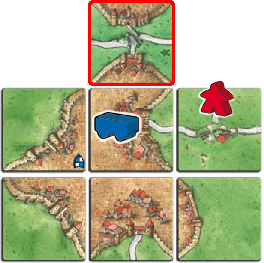
Additional examples
If a wagon is placed in a city completed and scored, the wagon can only move to a road, if this road (uncompleted and unoccupied) is directly adjacent to this city (connected to the city walls through a gate). Since a farm is also an feature, there must be no farm between the road and the city. It does not matter where the wagon is placed within the completed and scored feature (e.g. city) before it moves. Features sharing a surface like an adjacent abbey or a cloister within a city can also be considered as a valid destination for the wagon.
Moving the dragon depends entirely on feature adjacency, not on the initial position of the wagon within the feature completed and scored. Likewise, the wagon can move to any tile of the adjacent feature (the number of tiles the wagon moves is irrelevant).
The following examples illustrate the movement of the wagon in various scenarios.
Example 1. Moving from a completed city
After the city is completed and scored, the wagon moves to an adjacent feature which has to be incomplete and unoccupied.
The city is completed by the surrounding walls and the abbey. The city is adjacent to the several farms, an incomplete road, a short road, and an incomplete abbey. Additionally, there is also an incomplete cloister within the city.
The wagon can move move to:
- The incomplete road (any of its tiles)
- The incomplete abbey
- The incomplete cloister within the city
The wagon cannot move to:
- Any farm adjacent to the city
- Any road not connected to the city through a gate
- The short road connected to the city or any roads connected to it at the junction
- The incomplete road connected to the abbey, since it is not connected directly to the city
- The cloister with the completed road connected to the abbey
- The incomplete city connected through short roads and a junction
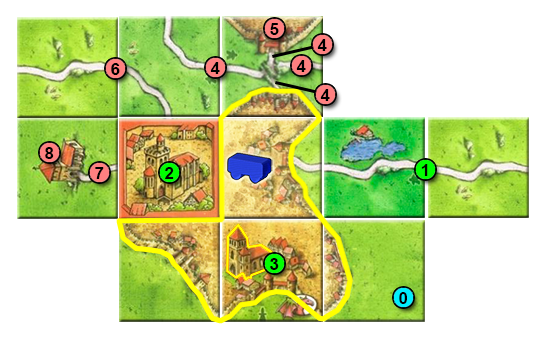
- 0 Tile just placed.
- 1 The wagon can move to this road.
- 2 The wagon can move to this abbey.
- 3 The wagon can move to the cloister within the city.
- 4 The wagon cannot move to the short road ending at the completed city or to any road connected to it through the junction.
- 5 The wagon cannot connect to this city because it is connected through short roads and a junction to the completed city.
- 6 The wagon cannot move to this uncompleted road because it is connected to the abbey, not to the completed city.
- 7 The wagon cannot move to this road because it is completed and connected to the abbey, not to the completed city.
- 8 The wagon cannot move to this cloister because it is directly connected to the completed city; it is connected to a completed road leading to the abbey.
Example 2. Moving from a completed city
After the city is completed and scored, the wagon moves to an adjacent feature which has to be incomplete and unoccupied.
The city is completed by the surrounding walls. The city is adjacent to the several farms and 3 roads. Two roads are completed, so the wagon can only move to the incomplete road at the top.
The tile where the wagon is placed in the city does not affect the possible options. The result is always the same: an adjacent uncompleted unoccupied feature to the city.
Likewise, if the wagon is moved to the incomplete road, it can be placed on any of its tiles.
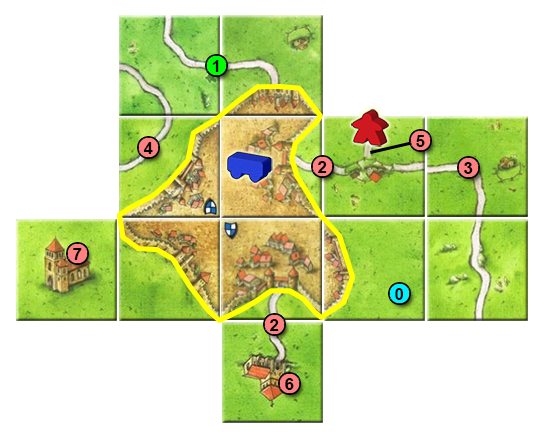
- 0 Tile just placed.
- 1 The wagon can move to this road. It can be placed on any of its tiles.
- 2 These roads are connected to the city but they are completed.
- 3 This road does not border directly at the city wall because it starts at the junction.
- 4 This road does not border directly at the city wall because there is a farm between this road and the completed city.
- 5 This road does not border directly at the city wall because it starts at the junction and it is occupied.
- 6 This cloister is not directly adjacent to the completed city because there is a completed road between the cloister and the completed city.
- 7 This cloister is not directly adjacent to the completed city because it is surrounded by a farm.
Example 3. Moving from a completed road
After the road is completed and scored, the wagon moves to an adjacent feature which has to be incomplete and unoccupied.
The wagon can move to an adjacent feature on any of the road's ends. The number of tiles the wagon moves is irrelevant. It is only important that the feature is directly adjacent to the completed road.
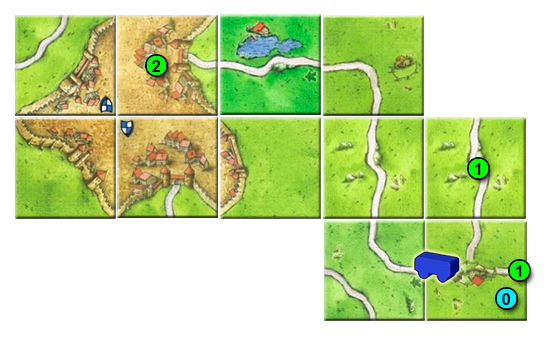
- 0 Tile just placed.
- 1 The wagon can move to any tile of these directly adjacent roads, because they are uncompleted and unoccupied.
- 2 The wagon can move to any of the tiles in the city because it is directly adjacent to the completed road (the city closes its left end), and it is uncompleted and unoccupied.
The Barn
Preparation
Each player should start the game with a Barn of their chosen colour.
Place A Tile
There are no tiles specific to The Barn.
Deploy a follower
The barn may be placed instead of a follower. It may only be placed on the point of intersection of four land tiles, one of which has just been placed by the player. The four land tiles must only consist of fields at this intersection point. [39] [24] [40] [41] [42]
The barn may also be placed on a farm on which there are already farmers, although not one on which there is already another barn. [43]
The barn will remain where it is until the end of the game. [44]
A barn cannot be removed by the dragon (from ![]() Exp. 3 - The Princess & the Dragon), nor taken prisoner by a tower (from
Exp. 3 - The Princess & the Dragon), nor taken prisoner by a tower (from ![]() Exp. 4 - The Tower).
Exp. 4 - The Tower).
Scoring
Scoring when placing the barn
Any farmers already on the farm are scored immediately, in the same way as at the end of the game. [45] [46]
That is, the player or players with the majority of farmers score the usual 3 points for every completed city. [47]
It makes no difference whether the owner of the barn is involved in scoring
or not. [48] When playing with ![]() Exp. 2 - Traders & Builders, a player with a pig scores 4 points per city instead of 3 when scoring points for a farm. Then the players return the farmers (and pigs, if used) to their supply. The barn, however, remains. [49]
Exp. 2 - Traders & Builders, a player with a pig scores 4 points per city instead of 3 when scoring points for a farm. Then the players return the farmers (and pigs, if used) to their supply. The barn, however, remains. [49]
Summary for use with other expansions:
If farmer majority –
- 3 points per completed city adjacent to farm
- 4 points per castle adjacent to farm
- +1 point per castle or completed city with pig (then return pig to owner’s supply)
- +1 point per castle or completed city with pig herd tile
Scoring when a farm is connected
No farmer may be deployed to a farm with a barn. [50] If the placement of a tile results in a farm with farmers being connected to a farm with a barn, the farmers are scored immediately. [45] [51] However, the player with the majority of farmers scores only 1 point for every completed city (with a pig: 2 points instead of 1). [52] These farmers (and pigs, if used) are then also returned to their owners after scoring.
Summary for use with other expansions:
If farmer majority –
- 1 point per completed city adjacent to farm
- 2 points per castle adjacent to farm
- +1 point per castle or completed city with pig
- +1 point per castle or completed city with pig herd tile
Final Scoring
At the end of the game, the owner of a barn scores 4 points for every completed city adjacent to the farm [53]
and 5 points for every castle adjacent to the farm. If several barns lie on a single farm through the placement of connecting tiles, each player receives the full score. The pig-herd tile (from ![]() River II) does not generate any additional points for the barn. [54] [55]
River II) does not generate any additional points for the barn. [54] [55]
House Rules
- Wagons are only allowed to be used in cloisters (and shrines) if the tile also contains a road. This means that the wagon cannot be used in an abbey. (Thanks to dwhitworth)
- The wagon can move to the next complete, or uncontested and incomplete, feature. This lets it roll across the board to uncontested features. (Thanks to viberunner)
- The mayor cannot be captured by the tower. (Thanks to viberunner)
- The wagon cannot be eaten by the dragon or captured by the tower. (Thanks to viberunner)
- The wagon can be used in ‘non-roaded’ features. It can move from the abbey to a touching city or road (one move, one turn) but it cannot do so from a cloister that touches only a farm. (Thanks to viberunner)
- The mayor is laid flat in the same way as farmers so that you can tell at a glance which cities contain mayors. (Thanks to Joff)
Tile distribution
Footnotes
For Icons explanation and licensing please visit Icons page.
Footnotes
- ↑
 Official status: The mayor and wagon are followers, subject to the usual rules of deployment and affecting the majority. The barn is a special figure, not a follower.
Official status: The mayor and wagon are followers, subject to the usual rules of deployment and affecting the majority. The barn is a special figure, not a follower.
- ↑
 In the case of the tile with the well and three roads, all of the roads have to be completed before scoring.
In the case of the tile with the well and three roads, all of the roads have to be completed before scoring.
- ↑
 With the three-way tile in Abbey & Mayor, the length of the road (e.g. for the purposes of the Robber Baron) is the total number of tiles in the road, not simply the longest distance between two ends. The road has three ends which have to be closed, but the result is that it’s likely to be bigger.
With the three-way tile in Abbey & Mayor, the length of the road (e.g. for the purposes of the Robber Baron) is the total number of tiles in the road, not simply the longest distance between two ends. The road has three ends which have to be closed, but the result is that it’s likely to be bigger.
- ↑
 In the examples for this expansion, the road with a tunnel does indeed count as being “broken” if one is using
In the examples for this expansion, the road with a tunnel does indeed count as being “broken” if one is using  The Tunnel expansion, in which case the tile contains two as yet unconnected tunnel openings.
The Tunnel expansion, in which case the tile contains two as yet unconnected tunnel openings.
- ↑
 If a player has an abbey left, draws the very last tile, and plays it to a feature where he or she has a builder, the abbey may be played on the second part of the double-turn (i.e. before the final round of abbey placement).
If a player has an abbey left, draws the very last tile, and plays it to a feature where he or she has a builder, the abbey may be played on the second part of the double-turn (i.e. before the final round of abbey placement).
- ↑
 The RGG edition clarifies this sentence by adding "(not the diagonals)".
The RGG edition clarifies this sentence by adding "(not the diagonals)".
- ↑
 The rules that restrict the placement of cloisters next to already placed shrines also restrict the placement of abbeys.
The rules that restrict the placement of cloisters next to already placed shrines also restrict the placement of abbeys.
- ↑
 This paragraph was added in HiG’s and RGG’s
This paragraph was added in HiG’s and RGG’s  Big Box 2, and actually contradicts an earlier FAQ (which stated that the abbey tiles couldn’t be placed once the last landscape tile was drawn).
Big Box 2, and actually contradicts an earlier FAQ (which stated that the abbey tiles couldn’t be placed once the last landscape tile was drawn).
- ↑
 When an abbey is played in this manner, a follower may be deployed to the abbey as usual. If the abbey is completely surrounded and thus immediately finished, the abbey is scored as in a normal turn. Then final scoring occurs. (5/2013)
When an abbey is played in this manner, a follower may be deployed to the abbey as usual. If the abbey is completely surrounded and thus immediately finished, the abbey is scored as in a normal turn. Then final scoring occurs. (5/2013)
- ↑
 The RGG edition has a slight change here, in that the final sentence of this section is moved here.
The RGG edition has a slight change here, in that the final sentence of this section is moved here.
- ↑
 When an abbey tile is placed, a follower cannot be deployed next to the abbey (as a knight, for example), as the abbey covers the whole tile. The surroundings are not a city. Thus, a follower on this tile is a monk.
When an abbey tile is placed, a follower cannot be deployed next to the abbey (as a knight, for example), as the abbey covers the whole tile. The surroundings are not a city. Thus, a follower on this tile is a monk.
- ↑
 A shrine can challenge an abbey, and vice versa, because the abbey is also a cloister.
A shrine can challenge an abbey, and vice versa, because the abbey is also a cloister.
- ↑
 If a player completes a feature with an abbey tile and his or her builder is on the feature, the feature does not get “extended” by the abbey (as the abbey is a separate feature), so the player does not get another tile.
If a player completes a feature with an abbey tile and his or her builder is on the feature, the feature does not get “extended” by the abbey (as the abbey is a separate feature), so the player does not get another tile.
- ↑
 Question: If cities with trade goods are completed by placement of an abbey tile, are the goods tokens awarded as usual to the player placing the abbey tile? Answer: Yes, as the player completed the city.
Question: If cities with trade goods are completed by placement of an abbey tile, are the goods tokens awarded as usual to the player placing the abbey tile? Answer: Yes, as the player completed the city.
- ↑
 The abbey also creates the boundary of a farm.
The abbey also creates the boundary of a farm.
- ↑
 A knight in a besieged city can escape via an abbey as well as a cloister, as the abbey has all the characteristics of a cloister.
A knight in a besieged city can escape via an abbey as well as a cloister, as the abbey has all the characteristics of a cloister.
- ↑
 Mayors and wagons can also escape a besieged city via cloisters and abbeys (although it would be quite amusing if the mayor stayed, like a captain going down with the ship).
Mayors and wagons can also escape a besieged city via cloisters and abbeys (although it would be quite amusing if the mayor stayed, like a captain going down with the ship).
- ↑
 Any follower, including the mayor, that is placed in a city is considered to be a knight.
Any follower, including the mayor, that is placed in a city is considered to be a knight.
- ↑
 The RGG edition of
The RGG edition of  Big Box 2 says instead “no knight or follower”. Some versions of the rules state “no knight or mayor,” but this is redundant, as the mayor is a knight (as is any other follower in a city). (updated 1/2015)
Big Box 2 says instead “no knight or follower”. Some versions of the rules state “no knight or mayor,” but this is redundant, as the mayor is a knight (as is any other follower in a city). (updated 1/2015)
- ↑
 The mayor cannot be placed into a city that already contains a wagon. Both are followers (according to the definition in the rules), so the city is already occupied by the wagon.
The mayor cannot be placed into a city that already contains a wagon. Both are followers (according to the definition in the rules), so the city is already occupied by the wagon.
- ↑
 The mayor can be a flier. However, the mayor can only land on an unfinished city. If an unfinished city is not available on the tile where the mayor lands, the mayor returns to the player’s supply. (2/2013)
The mayor can be a flier. However, the mayor can only land on an unfinished city. If an unfinished city is not available on the tile where the mayor lands, the mayor returns to the player’s supply. (2/2013)
- ↑
 The mayor can go through the magic portal. However, the mayor can only be placed in an unfinished and unclaimed city. (2/2013)
The mayor can go through the magic portal. However, the mayor can only be placed in an unfinished and unclaimed city. (2/2013)
- ↑ Jump up to: 23.0 23.1
 The mayor and the wagon can be eaten by the dragon, captured by the tower, and seduced by a princess. The mayor and the wagon can be placed in the appropriate quarter of Carcassonne. The mayor and the wagon can use a magic portal.
The mayor and the wagon can be eaten by the dragon, captured by the tower, and seduced by a princess. The mayor and the wagon can be placed in the appropriate quarter of Carcassonne. The mayor and the wagon can use a magic portal.
- ↑ Jump up to: 24.0 24.1 24.2
 Question: Can the mayor, the wagon, or the barn be placed on top of a tower? Answer: No, the deployment of these figures is limited to the features described in the rules.
Question: Can the mayor, the wagon, or the barn be placed on top of a tower? Answer: No, the deployment of these figures is limited to the features described in the rules.
- ↑
 The RGG edition inserts the following clarification: “For example, if the city has 3 pennants, the mayor counts as 3 followers.”
The RGG edition inserts the following clarification: “For example, if the city has 3 pennants, the mayor counts as 3 followers.”
- ↑
 The qualification about scoring no points is new in HiG’s
The qualification about scoring no points is new in HiG’s  Big Box 2, and confirms an earlier FAQ.
Big Box 2, and confirms an earlier FAQ.
- ↑
 Question: Blue has a mayor in a city with no pennants. Does the city count as occupied? And if so, when the city is scored, will Blue score points? Answer: The city is occupied. The mayor has no “strength,” so he counts as if there is no follower, and scores no points.
Question: Blue has a mayor in a city with no pennants. Does the city count as occupied? And if so, when the city is scored, will Blue score points? Answer: The city is occupied. The mayor has no “strength,” so he counts as if there is no follower, and scores no points.
- ↑
 A mayor could end up in a castle, and the castle would be considered to be occupied. However, because castles have no pennants (similar to the above footnote), the player would receive no points when the castle was completed, as the strength of the followers in the castle would be 0.
A mayor could end up in a castle, and the castle would be considered to be occupied. However, because castles have no pennants (similar to the above footnote), the player would receive no points when the castle was completed, as the strength of the followers in the castle would be 0.
- ↑
 Instead of "no other figure," this should read "no other follower".
Instead of "no other figure," this should read "no other follower".
- ↑
 The RGG edition changes “figure” to “no other wagon or follower.” This avoids confusion about the term “follower” but adds a distinction between “follower” and “wagon” which is not valid.
The RGG edition changes “figure” to “no other wagon or follower.” This avoids confusion about the term “follower” but adds a distinction between “follower” and “wagon” which is not valid.
- ↑
 Question: What is the definition of [connected/adjacent/neighboring] for the Wagon? If two city walls are touching (maybe even only at a point), can I drive my Wagon from one to another? Answer: “Connected” means roads which lead to crossings and roads which head directly “into” a city or a cloister. Two cities never connect to each other (in the current land tiles). City walls that touch at a point (such as at the corner of tiles) are not considered connected, so the wagon cannot travel from one to the other. Thus, the wagon has to use the roads to move. [Additionally, a road that touches a city at a point but not at a gate in the wall is not connected to the city. Also, a road running through a city via a tunnel is not connected to the city. – Chris O.] (confirmed 5/2013)
Question: What is the definition of [connected/adjacent/neighboring] for the Wagon? If two city walls are touching (maybe even only at a point), can I drive my Wagon from one to another? Answer: “Connected” means roads which lead to crossings and roads which head directly “into” a city or a cloister. Two cities never connect to each other (in the current land tiles). City walls that touch at a point (such as at the corner of tiles) are not considered connected, so the wagon cannot travel from one to the other. Thus, the wagon has to use the roads to move. [Additionally, a road that touches a city at a point but not at a gate in the wall is not connected to the city. Also, a road running through a city via a tunnel is not connected to the city. – Chris O.] (confirmed 5/2013)
- ↑
 The wagon cannot move directly from one city to the other on the tile shown above. There is a crossing between the two cities, and crossings belong to roads. Thus, for the wagon to move through the crossing, it would have had to have started on a road. The cities are not directly connected from wall to wall. The wagon cannot move to one of the “small roads”, either, as the rules clearly state that followers cannot be placed there. (8/2013)
The wagon cannot move directly from one city to the other on the tile shown above. There is a crossing between the two cities, and crossings belong to roads. Thus, for the wagon to move through the crossing, it would have had to have started on a road. The cities are not directly connected from wall to wall. The wagon cannot move to one of the “small roads”, either, as the rules clearly state that followers cannot be placed there. (8/2013)
- ↑
 The wagon cannot drive through any feature to get to another feature. Features are any aspect of the tile that can be claimed by a follower or that triggers a function, including cloisters, bazaars, crop circles, fairs, etc. [Note: this represents a reversal of a previous clarification. Previously, unclaimable structures such as fairs were not considered features and could be driven through to a road on the other side.] (5/2013)
The wagon cannot drive through any feature to get to another feature. Features are any aspect of the tile that can be claimed by a follower or that triggers a function, including cloisters, bazaars, crop circles, fairs, etc. [Note: this represents a reversal of a previous clarification. Previously, unclaimable structures such as fairs were not considered features and could be driven through to a road on the other side.] (5/2013)
 This means that the wagon cannot drive through any special thing on a tile, including the School.
This means that the wagon cannot drive through any special thing on a tile, including the School.
- ↑
 A wagon can be placed on an abbey. Additionally, the wagon can drive onto a directly connected city or road after scoring (and the other way round, from city/road to abbey), as long as the target feature has not yet been completed. (confirmed 5/2013)
A wagon can be placed on an abbey. Additionally, the wagon can drive onto a directly connected city or road after scoring (and the other way round, from city/road to abbey), as long as the target feature has not yet been completed. (confirmed 5/2013)
- ↑
 The wagon can be moved from a city to a cloister that is within that city (or vice versa), as roads are not required for a “connection,” just a shared wall/edge/surface. (confirmed 5/2013)
The wagon can be moved from a city to a cloister that is within that city (or vice versa), as roads are not required for a “connection,” just a shared wall/edge/surface. (confirmed 5/2013)
- ↑
 When moving a wagon to a new feature, the player can choose which tile to set it on. For example, if moving the wagon from a city to a road which so far consists of five tiles, the wagon can be placed on any of those tiles, not just the first tile that it gets to. For scoring this doesn't matter, but if a dragon or the plague happens to come by, the exact placement will make a big difference.
When moving a wagon to a new feature, the player can choose which tile to set it on. For example, if moving the wagon from a city to a road which so far consists of five tiles, the wagon can be placed on any of those tiles, not just the first tile that it gets to. For scoring this doesn't matter, but if a dragon or the plague happens to come by, the exact placement will make a big difference.
- ↑
 The RGG version adds the following clarification: "A wagon always counts as though it were a follower during scoring."
The RGG version adds the following clarification: "A wagon always counts as though it were a follower during scoring."
- ↑
 Question: Can you deploy a wagon to a city, score it, and then move the wagon to another feature, all in one turn? Or can you only move the wagon instead of deploying a normal follower? Answer: The wagon can be deployed instead of a normal follower. If the city is immediately completed, then it’s scored (wagon or “normal” follower). After scoring, the wagon can be moved. All of that is possible in a single turn. [Wagon movement is not in place of deployment.]
Question: Can you deploy a wagon to a city, score it, and then move the wagon to another feature, all in one turn? Or can you only move the wagon instead of deploying a normal follower? Answer: The wagon can be deployed instead of a normal follower. If the city is immediately completed, then it’s scored (wagon or “normal” follower). After scoring, the wagon can be moved. All of that is possible in a single turn. [Wagon movement is not in place of deployment.]
- ↑
 The barn cannot be placed in the City of Carcassonne. The barn cannot use a magic portal.
The barn cannot be placed in the City of Carcassonne. The barn cannot use a magic portal.
- ↑
 The barn can be placed on a tile with a volcano.
The barn can be placed on a tile with a volcano.
- ↑
 The fairy cannot be placed next to the barn, as the barn is not a follower.
The fairy cannot be placed next to the barn, as the barn is not a follower.
- ↑
 The barn cannot be placed at an intersection with mist banks, since they separate fields.
The barn cannot be placed at an intersection with mist banks, since they separate fields.
- ↑
 The RGG edition omits this last sentence about other barns.
The RGG edition omits this last sentence about other barns.
- ↑
 The barn can, however, be removed by a Festival tile. (12/2014)
The barn can, however, be removed by a Festival tile. (12/2014)
- ↑ Jump up to: 45.0 45.1
 The word “immediately” here means that farmers are scored then removed during the normal scoring phase of this turn (as opposed to staying on the farm until the end of the game). The placement of a barn does not stop play for a separate scoring phase for the farmers. Thus, the normal “move wood” portion of the turn occurs before the farmers are scored. (10/2012)
The word “immediately” here means that farmers are scored then removed during the normal scoring phase of this turn (as opposed to staying on the farm until the end of the game). The placement of a barn does not stop play for a separate scoring phase for the farmers. Thus, the normal “move wood” portion of the turn occurs before the farmers are scored. (10/2012)
- ↑
 Placing of a barn, and the subsequent scoring of the farm, does count as an opportunity to remove a follower from Carcassonne. Now that farms can be scored at times other than at the end of the game, followers from the market can be moved to farms earlier in the game. That occurs immediately after the placement of the barn, and before the farmers are scored. [Joining of a farm containing a follower to a farm with a barn would logically be another opportunity – Chris O.]
Placing of a barn, and the subsequent scoring of the farm, does count as an opportunity to remove a follower from Carcassonne. Now that farms can be scored at times other than at the end of the game, followers from the market can be moved to farms earlier in the game. That occurs immediately after the placement of the barn, and before the farmers are scored. [Joining of a farm containing a follower to a farm with a barn would logically be another opportunity – Chris O.]
- ↑
 A besieged city does still score double points if it lies on a farm with a barn.
A besieged city does still score double points if it lies on a farm with a barn.
- ↑
 Question: If I place a barn on a farm on which another player has farmers, causing him/her to score while I score nothing, can I move a follower to Carcassonne? (While there is no immediate score to me now, the barn is certain to score at the end of the game). Answer: Yes, that’s allowed. Only immediately scored points matter.
Question: If I place a barn on a farm on which another player has farmers, causing him/her to score while I score nothing, can I move a follower to Carcassonne? (While there is no immediate score to me now, the barn is certain to score at the end of the game). Answer: Yes, that’s allowed. Only immediately scored points matter.
- ↑
 The RGG edition added this last sentence.
The RGG edition added this last sentence.
- ↑
 The RGG version further clarifies this as follows: "There may only be one barn on each farm. Of course, connecting two farms, each with a barn, is quite legal."
The RGG version further clarifies this as follows: "There may only be one barn on each farm. Of course, connecting two farms, each with a barn, is quite legal."
- ↑
 Because this joining of farms is a scoring situation, a follower can be moved from Carcassonne to the farm with a barn. The farmer will be scored immediately, and so scores only 1 point per city and is (importantly) not on the farm during the final scoring proper.
Because this joining of farms is a scoring situation, a follower can be moved from Carcassonne to the farm with a barn. The farmer will be scored immediately, and so scores only 1 point per city and is (importantly) not on the farm during the final scoring proper.
- ↑
 Question: May the pig be placed on a farm that was just connected to a farm with a barn, i.e. on the newly placed tile (immediately before scoring)? Answer: Yes, the pig may be placed in already occupied features [and, as above, the normal “move wood” phase still happens].
Question: May the pig be placed on a farm that was just connected to a farm with a barn, i.e. on the newly placed tile (immediately before scoring)? Answer: Yes, the pig may be placed in already occupied features [and, as above, the normal “move wood” phase still happens].
- ↑
 The RGG edition adds "regardless of their distance from the barn". This is probably to help introduce players to 3rd edition scoring.
The RGG edition adds "regardless of their distance from the barn". This is probably to help introduce players to 3rd edition scoring.
- ↑
 The last sentence is new to the
The last sentence is new to the  Big Box 2 and confirms an earlier FAQ. The statement is not in
Big Box 2 and confirms an earlier FAQ. The statement is not in  Big Box 3, presumably because
Big Box 3, presumably because  River II is not included in this collection.
River II is not included in this collection.
- ↑
 The pig-herd tile can score an extra point per city when there is a barn on the farm.
The pig-herd tile can score an extra point per city when there is a barn on the farm.
Count, King and Robber
Warning: Default sort key "Count, King and Robber (1st edition)" overrides earlier default sort key "Abbey and the Mayor (1st edition)".
 |
You are reading the rules for this tile design. |  |
 | Read the following rules if your tiles look like this. |  |
| If your tiles have a different design, then choose a game from Spin-offs. |  |
General info and comments
Count, King & Robber was the sixth major expansion for Carcassonne and was originally released by Hans im Glück in 2007.
This expansion represents a collection of (parts of) several smaller expansions which had been independently released at different times (2003-2005). The information for these smaller expansions is included here as a part of this large expansion, rather than individually with their own page. This is the most reasonable way to obtain each of the small expansions, although the individual small expansions may become available, from time-to-time, on the second-hand market. Because each part truly functions independently (and the publisher even recommends against playing with River II and Count of Carcassonne at the same time), each is described separately, and each tile distribution will be at the end of the respective subsection rather than at the end of the entire section. Only Heretics and Shrines was never published before and was introduced with this extension.
Small Expansions included:
In 2015 the CundCo web store began to sell a single 4x3 tile replacement for the 12 Count tiles. However, this version features one additional city segment at the top not included in the original design.
Contents
- 12 new city tiles
- 5 new land tiles with shrines
- 5 new land tiles
- 12 new land tiles providing a forked river layout
- 1 King tile
- 1 Robber Baron tile
- 1 Count
The Count of Carcassonne
Preparation
At the beginning of the game, the twelve city tiles are placed on the table so that they form a single city. This city [1] - Carcassonne itself - serves as the starting point for the game. [2] [3] [4] As such, the normal starting tile is not used. [5] [6]
There are four quarters in the city:
- the castle
- the market
- the blacksmith
- the cathedral
The wooden count figure should be placed on the castle quarter of Carcassonne, and then the game begins as usual.
Placing a tile
There are no land tiles associated with this specific expansion. Draw and place land tiles from the base game and other expansions being used according to the normal rules. Tiles may be placed against the City of Carcassonne starting block to build the landscape as normal.
Deploying a follower
If you place a tile to extend a landscape feature on The City of Carcassonne (road, city or field), you may place a follower on it according to the normal rules.
Scoring
If you place a tile which completes a feature on The City of Carcassonne (road, city), it is scored according to the normal rules.
However, when using The Count of Carcassonne expansion, additional actions occur if, by placing a tile, a feature is scored anywhere on the playing area by another player, or players, but not by the player placing the tile that triggers it. This is described below.
Deploying followers to and from Carcassonne
Whenever a player places a tile that causes at least one player to score points, [7] [8] but the player placing the tile does not, this player may deploy one follower from his or her supply to a city quarter of his or her choice. [9] [10] [11] [12] If several features are completed, the player must not score points in any of them in order to take advantage of this opportunity.
A player may only deploy one follower to Carcassonne each turn. [13] This placement is in addition to any follower he may place as part of his normal turn, but he may only place one follower in Carcassonne per tile placed, regardless of how many scoring opportunities this placement causes. [14]
However, if a player has a double turn—because of the builder—a follower may be deployed to Carcassonne in both parts of the turn. [15]
Big followers may also be deployed to Carcassonne; as usual, they count as two followers as far as the calculation of the majority in a feature is concerned. [16] If using ![]() Abbey & Mayor, the mayor may also be deployed to the castle quarter, and the wagon to the castle, blacksmith, or cathedral quarters. [17]
Abbey & Mayor, the mayor may also be deployed to the castle quarter, and the wagon to the castle, blacksmith, or cathedral quarters. [17]
If a feature is completed [18] [19] during the subsequent course of play, then before scoring takes place, [20] all players may redeploy their followers from the appropriate city quarter to the feature being scored (with the exception of those followers in the same city quarter as the Count). In this way, followers may thus be deployed to already occupied features.
The followers may be redeployed according to these rules:
- from the castle quarter (1), a follower may be moved to a city [21]
- from the blacksmith's quarter (3), a follower may be moved to a road
- from the cathedral quarter (4), a follower may be moved to a cloister [22] [23] [24]
- from the market quarter (2), a follower may be moved to a farm [25]
Followers in the market quarter may only be redeployed at the end of the game. [26] [27]
How does that work in practice?
The player to the left of the one who placed the tile causing the scoring begins, followed in turn by the other players, with the redeployment round moving once around the table. [28] Thus, the player who placed the tile may redeploy his or her followers last. Each player may choose to redeploy all, any, or none of his or her followers from the appropriate city quarter to the feature being scored. Scoring then continues as usual. [29]
Any follower which is not redeployed remains in Carcassonne. Followers in Carcassonne may only be redeployed in the manner described above. They may not be returned to the player in any other way (such as returning to the players’ play areas). The dragon may not move onto any of the 12 tiles of the City, and so cannot “eat” the Count, nor any of the followers deployed there. [30] [31] [32] [33]
| The Count of Carcassonne |
The Count
When a player deploys a follower to Carcassonne, he or she may also move the Count to one of the City quarters. From the quarter in which the Count is currently residing, no followers may be redeployed. [34] For example, if a city is being scored, and the Count is residing in the castle, no one may redeploy a follower from the castle to a city.
The followers in this quarter remain in the Count's entourage—and therefore blocked until the Count is moved to another quarter. The Count should always clearly stand in one of the quarters, and never leaves Carcassonne.
Official Variants
Even the aristocracy are subject to certain rules, and cannot simply do whatever they may want. The following variants take this into account and constrain the freedom of the Count. Using these variants will lend the mini-expansion even more tactical possibilities. In both variants, the Count may no longer be freely moved, but rather:
- whenever a new follower is deployed to the city of Carcassonne, the Count is moved clockwise to the next city quarter, or
- the Count is moved to whichever city quarter the new follower is deployed to.
House Rules
Place the river first, then fit the city of Carcassonne next to it so that the most tiles are touched. Most likely this will seem to make the river flow around the city.
King and Robber Baron
Preparation
The 5 new land tiles should be mixed with the rest of the tiles. This expansion has been developed for the Carcassonne basic game and can be used with any or all of the other expansions.
The King and The Robber Baron tiles should be set aside at the side of the playing area, as they will be used later.
Placing a tile
When you draw one of the King or Robber land tiles, place it according to the normal rules.
During the course of play they may nevertheless become connected, and then count as only one segment.
Deploying a follower
When you place one of the King and Robber land tiles, you may place a meeple on it according to the normal rules.
Scoring
When you complete one or more features (e.g. a monastery, a road etc.) by placing a King and Robber land tile, it is scored according to the normal rules.
A completed city
As soon as a player completes the first city (in the game), he or she should take the King tile.
If, during the course of play, another player completes a larger city [35] — which means he or she places the final tile of this city — then he or she receives the King. [36]
A completed road
The Robber Baron functions in the same way as the King.
As soon as a player completes the first road, he or she should take the Robber Baron tile. If, during the course of play, another player completes a longer road he or she receives the Robber Baron tile.
End Scoring
At the end of the game, the player in possession of the King scores 1 point for every completed city. [37] [38] [39]
At the end of the game, the player in possession of the Robber Baron scores 1 point for every completed road. [40] [41]
River II
River II was originally released by Hans im Glück in 2005, and later bundled in the major expansion ![]() Count, King & Robber.
Count, King & Robber.
Details of River II have been incorporated on the main ![]() River page.
River page.
Heretics and Shrines
Preparation
The new land tiles should be mixed in with the other tiles. This expansion has been developed for the Carcassonne basic game.
Placing a tile
Shrines are placed and scored in the same way as a cloister. [42] However, a shrine may not be placed in such a way that it adjoins several cloisters. [43] Similarly, a cloister may not be placed so that it neighbors several shrines. [44] [45] [46]
Deploying a follower
A follower deployed to a shrine is called a heretic. If a player places a shrine directly (horizontally, vertically, or diagonally) next to the cloister [47] of another player [48] and deploys a heretic to it, a challenge is laid down to the monk. [49] The same is true when a monk is deployed to a cloister directly next to a heretic. [50] Challenging your own monk or heretic is also possible. [51] [52] [53]
When a player places a shrine tile, he or she may, as usual, choose to deploy a follower to the farm, road, or city segment of the tile, instead of to the shrine itself. [54]
Scoring
When you complete one or more features (e.g. a monastery, a road etc.) by placing a Shrine land tile, it is scored according to the normal rules.
The challenge
The challenge is about who can finish his or her building first. [55] [56]
The player who finishes his or her feature first scores 9 points, [57] while the other player scores nothing. [58] [59] [60] [61] Both followers are then returned to their owners. [62] [63]
Final Scoring
If a challenge has not been resolved by the end of the game, both players receive the usual points awarded for incomplete cloisters.
House Rules
- To raise the stakes of a challenge between shrines and cloisters, and to make it more worthwhile to risk the chance of getting no points, the winning challenger receives the points for both structures while the loser still receives nothing. If promoting more aggressive play, the challenger could be the only one playing for the reward. (Thanks to youtch and others; thanks to RationalLemming, and to avt104981 for pointing out that this can’t result in 18 points)
Tile Distribution
The Count of Carcassonne
Back side of tiles:
King and Robber Baron
River II
Heretics and Shrines
Footnotes
For Icons explanation and licensing please visit Icons page.
Footnotes
- ↑
 The city of Carcassonne does count when scoring farms at the end of the game and also counts when scoring points for the King tile. (11/2013)
The city of Carcassonne does count when scoring farms at the end of the game and also counts when scoring points for the King tile. (11/2013)
- ↑
 Followers can be deployed on features on City of Carcassonne tiles outside the City of Carcassonne itself, for example through use of a magic portal or as a flier. (1/2013)
Followers can be deployed on features on City of Carcassonne tiles outside the City of Carcassonne itself, for example through use of a magic portal or as a flier. (1/2013)
- ↑
 The dragon can fly around the outside of Carcassonne, treating the landscape areas as normal tiles and eating any figures on those tiles. Followers and the Count inside Carcassonne are unaffected. This represents a notable change from previous FAQs. (10/2012)
The dragon can fly around the outside of Carcassonne, treating the landscape areas as normal tiles and eating any figures on those tiles. Followers and the Count inside Carcassonne are unaffected. This represents a notable change from previous FAQs. (10/2012)
- ↑
 Given new interpretations regarding placement of the dragon and followers on features outside the City of Carcassonne, it seems that the plague should also be allowed on the outside portion of these tiles. However, this is unofficial. (1/2013)
Given new interpretations regarding placement of the dragon and followers on features outside the City of Carcassonne, it seems that the plague should also be allowed on the outside portion of these tiles. However, this is unofficial. (1/2013)
- ↑
 The latest rules for The River II state that “if you decide to use The Count of Carcassonne and The River II as starting tiles for a game, it is possible that one will not be able to use all of the river tiles if they are placed too close to the City of Carcassonne. River tiles which cannot be placed should be removed from the game, in accordance with the basic rules. Even if the river cannot be placed in its entirety, the game should proceed in the usual way.” See the Comments in The River II for more information.
The latest rules for The River II state that “if you decide to use The Count of Carcassonne and The River II as starting tiles for a game, it is possible that one will not be able to use all of the river tiles if they are placed too close to the City of Carcassonne. River tiles which cannot be placed should be removed from the game, in accordance with the basic rules. Even if the river cannot be placed in its entirety, the game should proceed in the usual way.” See the Comments in The River II for more information.
- ↑
 The original rules added the following sentence clarification: “If the river is being used, then the spring tile should be placed next, and in such a way that the river leads away from the city.” Compare this with the introductory paragraph of the rules for Count, King and Robber: “It is not recommended to combine The Count of Carcassonne and The River II, as situations may arise in which it is impossible to place tiles properly.” In other words, the official position has changed over the years.
The original rules added the following sentence clarification: “If the river is being used, then the spring tile should be placed next, and in such a way that the river leads away from the city.” Compare this with the introductory paragraph of the rules for Count, King and Robber: “It is not recommended to combine The Count of Carcassonne and The River II, as situations may arise in which it is impossible to place tiles properly.” In other words, the official position has changed over the years.
- ↑
 The original version of the rules specifically mention completion of a road, city, or cloister as necessary to trigger the placement of a follower in Carcassonne. However, the RGG version of the rules and the
The original version of the rules specifically mention completion of a road, city, or cloister as necessary to trigger the placement of a follower in Carcassonne. However, the RGG version of the rules and the  Big Box 2 rules change the rule to that given here.
Big Box 2 rules change the rule to that given here.
- ↑
 It is clear from the wording that only scoring caused by placement of a tile can trigger placement of a follower in Carcassonne. Thus, scoring from non-landscape-tile related events (such as from dispatches (
It is clear from the wording that only scoring caused by placement of a tile can trigger placement of a follower in Carcassonne. Thus, scoring from non-landscape-tile related events (such as from dispatches ( The Messages) or paying a ransom for the Tower (
The Messages) or paying a ransom for the Tower ( The Tower) would not trigger follower placement. Interestingly, though, another FAQ answer (below and on the
The Tower) would not trigger follower placement. Interestingly, though, another FAQ answer (below and on the  Abbey & Mayor page) indicates that placement of a barn does trigger the ability to place a follower in Carcassonne.
Abbey & Mayor page) indicates that placement of a barn does trigger the ability to place a follower in Carcassonne.
- ↑
 The mayor, the wagon, and the abbot can be placed in the appropriate quarter of Carcassonne. The barn cannot be placed in the city of Carcassonne. (updated 3/2015)
The mayor, the wagon, and the abbot can be placed in the appropriate quarter of Carcassonne. The barn cannot be placed in the city of Carcassonne. (updated 3/2015)
- ↑
 Question: If I place a barn on a farm on which another player has farmers, causing him/her to score while I score nothing, can I move a follower to Carcassonne? (While there is no immediate score to me now, the barn is certain to score at the end of the game). Answer: Yes, that’s allowed. Only immediately scored points matter. A similar question arises with regard to trade goods, which may lead to points at the end of the game.
Question: If I place a barn on a farm on which another player has farmers, causing him/her to score while I score nothing, can I move a follower to Carcassonne? (While there is no immediate score to me now, the barn is certain to score at the end of the game). Answer: Yes, that’s allowed. Only immediately scored points matter. A similar question arises with regard to trade goods, which may lead to points at the end of the game.
- ↑
 Question: Say I have a heretic engaged in a challenge with a monk, and I place the tile which completes the monk's cloister, so that the monk scores 9 points and I score 0. Can I still move a follower to Carcassonne in this case? Answer: Yes, triggered scoring, received no points: conditions fulfilled.
Question: Say I have a heretic engaged in a challenge with a monk, and I place the tile which completes the monk's cloister, so that the monk scores 9 points and I score 0. Can I still move a follower to Carcassonne in this case? Answer: Yes, triggered scoring, received no points: conditions fulfilled.
- ↑
 A follower cannot be deployed to Carcassonne via a magic portal. The magic portal only allows followers to be deployed to tiles that can be legally occupied according to the usual rules, as if the player had just placed the tile in question. Carcassonne is occupied according to different rules.
A follower cannot be deployed to Carcassonne via a magic portal. The magic portal only allows followers to be deployed to tiles that can be legally occupied according to the usual rules, as if the player had just placed the tile in question. Carcassonne is occupied according to different rules.
- ↑
 A player who completes a road, city, or cloister, but without profit, cannot deploy a follower to Carcassonne and redeploy another before the area is scored. Scoring takes place first, and then, should the occasion arise, a follower may be deployed to Carcassonne. If a player uses a follower which is already in Carcassonne, then he or she profits from the scoring, and as such may not move another follower to Carcassonne.
A player who completes a road, city, or cloister, but without profit, cannot deploy a follower to Carcassonne and redeploy another before the area is scored. Scoring takes place first, and then, should the occasion arise, a follower may be deployed to Carcassonne. If a player uses a follower which is already in Carcassonne, then he or she profits from the scoring, and as such may not move another follower to Carcassonne.
- ↑
 This sentence is an addition to the rules in the RGG edition of
This sentence is an addition to the rules in the RGG edition of  Big Box 2.
Big Box 2.
- ↑
 This sentence originally occurs later in the rules, in a section dealing with how to combine The Count of Carcassonne with other expansions. Also, the version of the rules in Count, King and Consorts clarifies that a follower may be deployed to Carcassonne in both “parts” of a double turn, rather than in both “turns” — because a double turn is considered to be a single turn, rather than two separate turns.
This sentence originally occurs later in the rules, in a section dealing with how to combine The Count of Carcassonne with other expansions. Also, the version of the rules in Count, King and Consorts clarifies that a follower may be deployed to Carcassonne in both “parts” of a double turn, rather than in both “turns” — because a double turn is considered to be a single turn, rather than two separate turns.
- ↑
 This sentence also appeared in the section on combining this expansion with others.
This sentence also appeared in the section on combining this expansion with others.
- ↑
 This last sentence is taken from HiG’s
This last sentence is taken from HiG’s  Big Box 2 rules, where it occurs a little later in the text. It also occurs in the RGG edition.
Big Box 2 rules, where it occurs a little later in the text. It also occurs in the RGG edition.
 There is also a sentence which says that, “if they are involved in a scoring, he counts as two followers as usual.” Since a mayor is valued according to the number of pennants in a city, and the wagon counts as a single follower, I can only conclude that this sentence is the result of an unfortunate copy-and-paste from the rules about big followers. It should probably read, “if they are involved in scoring a feature, they count towards the majority as usual.” However, the RGG edition translates it as, “if they are used when scoring, each counts as two followers.”
There is also a sentence which says that, “if they are involved in a scoring, he counts as two followers as usual.” Since a mayor is valued according to the number of pennants in a city, and the wagon counts as a single follower, I can only conclude that this sentence is the result of an unfortunate copy-and-paste from the rules about big followers. It should probably read, “if they are involved in scoring a feature, they count towards the majority as usual.” However, the RGG edition translates it as, “if they are used when scoring, each counts as two followers.”
- ↑
 Followers in Carcassonne can be redeployed to empty roads, cities, cloisters, or farms. When an empty road, city, or cloister is completed, followers in the appropriate quarter of the city [followers in the castle can only be deployed to cities, and so on] may be redeployed and then scored immediately. In general, unoccupied cities, roads, cloisters do not earn very many points, and so this option in mostly useful for returning followers from Carcassonne to a player's supply.
Followers in Carcassonne can be redeployed to empty roads, cities, cloisters, or farms. When an empty road, city, or cloister is completed, followers in the appropriate quarter of the city [followers in the castle can only be deployed to cities, and so on] may be redeployed and then scored immediately. In general, unoccupied cities, roads, cloisters do not earn very many points, and so this option in mostly useful for returning followers from Carcassonne to a player's supply.
- ↑
 The RGG rules state “when a [feature] is scored” rather than completed, potentially providing confusion when comparing the different rule sets (e.g. for unoccupied structures, where nobody gets points). However, as castles (
The RGG rules state “when a [feature] is scored” rather than completed, potentially providing confusion when comparing the different rule sets (e.g. for unoccupied structures, where nobody gets points). However, as castles ( Bridges, Castles & Bazaars) prove, all structures do score, even if there is no follower present to get those points. Thus, no contradiction.
Bridges, Castles & Bazaars) prove, all structures do score, even if there is no follower present to get those points. Thus, no contradiction.
- ↑
 This is a minor change from the original rules, which read, “before the calculation of the majority.”
This is a minor change from the original rules, which read, “before the calculation of the majority.”
- ↑
 Followers from the City of Carcassonne (the castle quarter) cannot move to a castle (from (
Followers from the City of Carcassonne (the castle quarter) cannot move to a castle (from ( Bridges, Castles & Bazaars), as a castle is not a city, but is instead a new type of feature.
Bridges, Castles & Bazaars), as a castle is not a city, but is instead a new type of feature.
- ↑
 Question: Until now it was impossible to deploy a second monk to a cloister... Answer: That is exactly the point. There was no rule that said only one monk could occupy a cloister. It was simply not possible because of the rules for placing tiles. This is the first opportunity for stealing a cloister away from a player. And deploying the big follower to a cloister may now be worthwhile as well.
Question: Until now it was impossible to deploy a second monk to a cloister... Answer: That is exactly the point. There was no rule that said only one monk could occupy a cloister. It was simply not possible because of the rules for placing tiles. This is the first opportunity for stealing a cloister away from a player. And deploying the big follower to a cloister may now be worthwhile as well.
- ↑
 An abbey has all of the characteristics of a cloister, so a follower can be moved from the cathedral quarter to an abbey. A follower also can be moved from the cathedral quarter to a cult place/shrine or to a German Monastery functioning as a cloister. If so, that follower must also be declared to be a monk (not an abbot), because the feature was only finished for scoring as a cloister. A follower cannot be moved from the cathedral quarter to a German Monastery placed as an abbot (that is, one with the special German Monastery function that will be scored only at the end of the game). (6 & 10/2014)
An abbey has all of the characteristics of a cloister, so a follower can be moved from the cathedral quarter to an abbey. A follower also can be moved from the cathedral quarter to a cult place/shrine or to a German Monastery functioning as a cloister. If so, that follower must also be declared to be a monk (not an abbot), because the feature was only finished for scoring as a cloister. A follower cannot be moved from the cathedral quarter to a German Monastery placed as an abbot (that is, one with the special German Monastery function that will be scored only at the end of the game). (6 & 10/2014)
- ↑
 A German monastery has to be unoccupied or occupied by one monk at least (no matter the presence of other followers placed as abbots) to be considered completed when surrounded by tiles. A monastery cannot be completed if occupied only by followers placed as abbots.
A German monastery has to be unoccupied or occupied by one monk at least (no matter the presence of other followers placed as abbots) to be considered completed when surrounded by tiles. A monastery cannot be completed if occupied only by followers placed as abbots.
- ↑
 A follower can be moved from Carcassonne to a farm with a barn. The farmer will be scored immediately, and so scores only 1 point per city and is (importantly) not on the farm during the final scoring proper. [Obviously, placement of a follower in this manner still requires a scoring trigger as per the fundamental rules – this could be at the end of the game or with joining of a barnless farm to one with a barn – Chris O.]
A follower can be moved from Carcassonne to a farm with a barn. The farmer will be scored immediately, and so scores only 1 point per city and is (importantly) not on the farm during the final scoring proper. [Obviously, placement of a follower in this manner still requires a scoring trigger as per the fundamental rules – this could be at the end of the game or with joining of a barnless farm to one with a barn – Chris O.]
- ↑
 This is no longer entirely true. Placing of a barn, and the subsequent scoring of the farm, does count as an opportunity to remove a follower from Carcassonne. Now that farms can be scored at times other than at the end of the game, followers from the market can be moved to farms earlier in the game. That occurs immediately after the placement of the barn, and before the farmers are scored. [Joining of a farm containing a follower to a farm with a barn would logically be another opportunity – Chris O.]
This is no longer entirely true. Placing of a barn, and the subsequent scoring of the farm, does count as an opportunity to remove a follower from Carcassonne. Now that farms can be scored at times other than at the end of the game, followers from the market can be moved to farms earlier in the game. That occurs immediately after the placement of the barn, and before the farmers are scored. [Joining of a farm containing a follower to a farm with a barn would logically be another opportunity – Chris O.]
- ↑
 Question: How does follower placement during the final scoring work? Answer: In principle very similarly to the way it works during the game. The 'trigger' for the final scoring is the player who placed the last tile and so ended the game. Beginning with the player on the left of the 'trigger' player, each player redeploys one of his or her followers from Carcassonne to an appropriate feature [followers in castle can only be deployed to cities, and so on] on the board. Followers can also be redeployed to incomplete roads, cities, cloisters, or farms, since these will also be scored at the end of the game. This process continues until no player can redeploy any more followers from Carcassonne. The Count still blocks the city quarter in which he is resident. Normally the player with the most followers in Carcassonne will be the one to redeploy the last figure.
Question: How does follower placement during the final scoring work? Answer: In principle very similarly to the way it works during the game. The 'trigger' for the final scoring is the player who placed the last tile and so ended the game. Beginning with the player on the left of the 'trigger' player, each player redeploys one of his or her followers from Carcassonne to an appropriate feature [followers in castle can only be deployed to cities, and so on] on the board. Followers can also be redeployed to incomplete roads, cities, cloisters, or farms, since these will also be scored at the end of the game. This process continues until no player can redeploy any more followers from Carcassonne. The Count still blocks the city quarter in which he is resident. Normally the player with the most followers in Carcassonne will be the one to redeploy the last figure.
- ↑
 The statement specifying that there is only one round of redeployment is a specific clarification in the RGG rules.
The statement specifying that there is only one round of redeployment is a specific clarification in the RGG rules.
- ↑
 Followers in Carcassonne are not scored. However, the followers can influence the usual scoring, as players can redeploy their figures to any city, road, cloister, or farm that is currently being scored.
Followers in Carcassonne are not scored. However, the followers can influence the usual scoring, as players can redeploy their figures to any city, road, cloister, or farm that is currently being scored.
- ↑
 This sentence occurs later in the text of HiG’s
This sentence occurs later in the text of HiG’s  Big Box 2 rules. It confirms earlier FAQs, as shown below. It is also in the RGG edition.
Big Box 2 rules. It confirms earlier FAQs, as shown below. It is also in the RGG edition.
- ↑
 The dragon can fly around the outside of Carcassonne, treating the landscape areas as normal tiles and eating any figures on those tiles. Followers (and the Count) inside Carcassonne are unaffected. This represents a notable change from previous FAQs. (10/2012)
The dragon can fly around the outside of Carcassonne, treating the landscape areas as normal tiles and eating any figures on those tiles. Followers (and the Count) inside Carcassonne are unaffected. This represents a notable change from previous FAQs. (10/2012)
- ↑
 Given new interpretations regarding placement of the dragon and followers on features outside the City of Carcassonne, it seems that the plague should also be allowed on the outside portion of these tiles. However, this is unofficial. (1/2013)
Given new interpretations regarding placement of the dragon and followers on features outside the City of Carcassonne, it seems that the plague should also be allowed on the outside portion of these tiles. However, this is unofficial. (1/2013)
- ↑
 Followers can be deployed on features on City of Carcassonne tiles outside the City of Carcassonne itself, for example through use of a magic portal or as a flier. (1/2013)
Followers can be deployed on features on City of Carcassonne tiles outside the City of Carcassonne itself, for example through use of a magic portal or as a flier. (1/2013)
- ↑
 The RGG
The RGG  Big Box 2 edition of the rules states “No player may move a follower to or from the quarter where the count stands.” (Emphasis added.) This addition is not seen in any other version of the rules.
Big Box 2 edition of the rules states “No player may move a follower to or from the quarter where the count stands.” (Emphasis added.) This addition is not seen in any other version of the rules.
- ↑
 The player who completes the biggest city during the game, that is, the city which consists of the most land tiles, receives the King. Thus, the highest scoring city may not always win the king, such as a smaller city earning more points through pennants or the cathedral. The same is true of roads and the Robber Baron.
The player who completes the biggest city during the game, that is, the city which consists of the most land tiles, receives the King. Thus, the highest scoring city may not always win the king, such as a smaller city earning more points through pennants or the cathedral. The same is true of roads and the Robber Baron.
- ↑
 It is often difficult during the course of play to keep in mind the size of the city or road which is currently the largest. To avoid having to constantly recount, you could mark the size of the largest city and road on the scoring track using a neutral figure for the King and a different one for the Robber Baron.
It is often difficult during the course of play to keep in mind the size of the city or road which is currently the largest. To avoid having to constantly recount, you could mark the size of the largest city and road on the scoring track using a neutral figure for the King and a different one for the Robber Baron.
- ↑
 Castles (from
Castles (from  Bridges, Castles & Bazaars) do not count as cities for the purposes of scoring for the King.
Bridges, Castles & Bazaars) do not count as cities for the purposes of scoring for the King.
- ↑
 The City of Carcassonne (from
The City of Carcassonne (from  The Count of Carcassonne) does count as a city when scoring points for the King tile. (11/2013)
The Count of Carcassonne) does count as a city when scoring points for the King tile. (11/2013)
- ↑
 The City of Leipzig (form
The City of Leipzig (form  The Markets of Leipzig) should be counted as a city when scoring points for the King tile, following the lead of the City of Carcassonne.
The Markets of Leipzig) should be counted as a city when scoring points for the King tile, following the lead of the City of Carcassonne.
- ↑
 Short roads like those on some CRCR tiles should not be considered for the Robber Baron bonus, since they cannot be occupied or scored.
Short roads like those on some CRCR tiles should not be considered for the Robber Baron bonus, since they cannot be occupied or scored.
- ↑
 With the three-way tile in
With the three-way tile in  Abbey & Mayor, the length of the road is the total number of tiles in the road, not simply the longest distance between two ends. The road has three ends which have to be closed, but the result is that it’s likely to be bigger.
Abbey & Mayor, the length of the road is the total number of tiles in the road, not simply the longest distance between two ends. The road has three ends which have to be closed, but the result is that it’s likely to be bigger.
- ↑
 A knight in a besieged city from
A knight in a besieged city from  The Cathars can escape via a shrine, as with a cloister. The shrines are, for the most part, identical to cloisters. That goes for escape as well.
The Cathars can escape via a shrine, as with a cloister. The shrines are, for the most part, identical to cloisters. That goes for escape as well.
- ↑
 In other words, a shrine cannot adjoin more than one cloister, and vice versa.
In other words, a shrine cannot adjoin more than one cloister, and vice versa.
- ↑
 Question: Can I place a shrine in such a way that it forces a cloister to neighbor several shrines? What effect does that have? Answer: It leads to enormous problems when multiple cloisters and shrines neighbor each other. [In other words, no, you can’t place a shrine in that way—ed.]
Question: Can I place a shrine in such a way that it forces a cloister to neighbor several shrines? What effect does that have? Answer: It leads to enormous problems when multiple cloisters and shrines neighbor each other. [In other words, no, you can’t place a shrine in that way—ed.]
- ↑
 The rules that restrict the placement of cloisters next to already placed shrines also restrict the placement of abbeys.
The rules that restrict the placement of cloisters next to already placed shrines also restrict the placement of abbeys.
- ↑
 Because the problems arise when there are multiple simultaneous challenges, one could allow placement of further shrines or cloisters into the area as long as no followers are placed on those cloisters/shrines (i.e. there are no further challenges).
Because the problems arise when there are multiple simultaneous challenges, one could allow placement of further shrines or cloisters into the area as long as no followers are placed on those cloisters/shrines (i.e. there are no further challenges).
- ↑
 A shrine can challenge an abbey, and vice versa, because the abbey is also a cloister.
A shrine can challenge an abbey, and vice versa, because the abbey is also a cloister.
- ↑
 The RGG edition of Count, King & Robber changes this to “When a heretic is placed on a shrine adjacent (orthogonally or diagonally) to an occupied monastery, a challenge occurs.” Because the part about “another player,” was removed, the final sentence in this paragraph regarding one’s own monk/heretic became unnecessary and was also removed. (12/2013)
The RGG edition of Count, King & Robber changes this to “When a heretic is placed on a shrine adjacent (orthogonally or diagonally) to an occupied monastery, a challenge occurs.” Because the part about “another player,” was removed, the final sentence in this paragraph regarding one’s own monk/heretic became unnecessary and was also removed. (12/2013)
- ↑
 When playing with German monastery, Dutch & Belgian monastery, an abbot cannot be involved in a challenge with a heretic on a shrine/cult place, as the two scoring mechanisms are entirely different (the abbot’s monastery is never completed, so the heretic would always win). (5/2014)
When playing with German monastery, Dutch & Belgian monastery, an abbot cannot be involved in a challenge with a heretic on a shrine/cult place, as the two scoring mechanisms are entirely different (the abbot’s monastery is never completed, so the heretic would always win). (5/2014)
- ↑
 The RGG edition of
The RGG edition of  Big Box 2 adds, ‘That is, the monk must challenge the heretic.’
Big Box 2 adds, ‘That is, the monk must challenge the heretic.’
- ↑
 This sentence is omitted in the RGG version.
This sentence is omitted in the RGG version.
- ↑
 A magic portal also allows you to trigger a challenge on shrines, as these are areas of the landscape and tiles that were placed by the players during the game and on which a follower could also have been placed normally.
A magic portal also allows you to trigger a challenge on shrines, as these are areas of the landscape and tiles that were placed by the players during the game and on which a follower could also have been placed normally.
- ↑
 The fairy can be assigned to a heretic.
The fairy can be assigned to a heretic.
- ↑
 The RGG version adds that a player may also “choose to place no follower at all on the tile.”
The RGG version adds that a player may also “choose to place no follower at all on the tile.”
- ↑
 If the tile placed completes both the shrine and the cloister, no one completed the building first, and both receive the points.
If the tile placed completes both the shrine and the cloister, no one completed the building first, and both receive the points.
- ↑
 Question: Imagine I have an unoccupied cloister next to an occupied shrine. I place a tile with a magic portal which completes both buildings, and choose to use the magic portal to deploy a monk to the cloister. Does this declare a challenge, and if so, who wins? Answer: This is actually an invalid placement of the follower – the magic portal cannot be used to place a follower on a completed feature (and the cloister is considered completed before the move wood phase). Thus, there can be no challenge, and the heretic gets 9 points. (updated 7/2014)
Question: Imagine I have an unoccupied cloister next to an occupied shrine. I place a tile with a magic portal which completes both buildings, and choose to use the magic portal to deploy a monk to the cloister. Does this declare a challenge, and if so, who wins? Answer: This is actually an invalid placement of the follower – the magic portal cannot be used to place a follower on a completed feature (and the cloister is considered completed before the move wood phase). Thus, there can be no challenge, and the heretic gets 9 points. (updated 7/2014)
- ↑
 The RGG edition adds a clarification here: “Once a challenge has been declared, the player (of those two involved in the challenge) who first completes his cult place or cloister scores 9 points as normal.”
The RGG edition adds a clarification here: “Once a challenge has been declared, the player (of those two involved in the challenge) who first completes his cult place or cloister scores 9 points as normal.”
- ↑
 Question: If the fairy is on the same tile as the losing heretic or monk in a challenge, does the player still score the bonus 3 points? Answer: When a challenge is resolved (that is, when someone has won), both followers are returned to the player, so no one stands next to the fairy. [At the point that a challenge is resolved and one participant “scores” zero, the building that participant is in will be incomplete. Therefore, strictly speaking, that participant does not actually take part in “scoring”—say, in the way that a player without the majority in a city does—and so does not score the bonus points —ed.]
Question: If the fairy is on the same tile as the losing heretic or monk in a challenge, does the player still score the bonus 3 points? Answer: When a challenge is resolved (that is, when someone has won), both followers are returned to the player, so no one stands next to the fairy. [At the point that a challenge is resolved and one participant “scores” zero, the building that participant is in will be incomplete. Therefore, strictly speaking, that participant does not actually take part in “scoring”—say, in the way that a player without the majority in a city does—and so does not score the bonus points —ed.]
- ↑
 Question: Say I have a heretic engaged in a challenge with another player's monk, and I place the tile which completes the monk's cloister, so that the monk scores 9 points and I score 0. Can I still move a follower to Carcassonne in this case? Answer: Yes, triggered scoring, received no points: conditions fulfilled.
Question: Say I have a heretic engaged in a challenge with another player's monk, and I place the tile which completes the monk's cloister, so that the monk scores 9 points and I score 0. Can I still move a follower to Carcassonne in this case? Answer: Yes, triggered scoring, received no points: conditions fulfilled.
- ↑
 During a challenge, if a feature is completed, but the corresponding follower is removed by the dragon, there is no evaluation for the cloister or shrine. With the "disappearance" of the monk or heretic, the challenge ends and the other remains on the landscape until his monastery or shrine is closed or removed from the landscape.
During a challenge, if a feature is completed, but the corresponding follower is removed by the dragon, there is no evaluation for the cloister or shrine. With the "disappearance" of the monk or heretic, the challenge ends and the other remains on the landscape until his monastery or shrine is closed or removed from the landscape.
- ↑
 The feature losing a challenge cannot trigger the scoring of a castle, since the losing feature was not completed.
The feature losing a challenge cannot trigger the scoring of a castle, since the losing feature was not completed.
- ↑
 A wagon on the feature losing a challenge cannot move to an adjacent feature. The wagon is directly removed without scoring, since the feature where it is placed is uncompleted when the challenge is resolved.
A wagon on the feature losing a challenge cannot move to an adjacent feature. The wagon is directly removed without scoring, since the feature where it is placed is uncompleted when the challenge is resolved.
- ↑
 When a challenge is resolved, both the monk and heretic are removed from play. If that leaves one of the buildings incomplete, it can be reoccupied by using a magic portal or a follower from Carcassonne.
When a challenge is resolved, both the monk and heretic are removed from play. If that leaves one of the buildings incomplete, it can be reoccupied by using a magic portal or a follower from Carcassonne.
The Catapult
Warning: Default sort key "The Catapult (1st edition)" overrides earlier default sort key "Count, King and Robber (1st edition)".
 |
You are reading the rules for this tile design. |
| This expansion was not published in other editions. |
| If your tiles have a different design, then choose a game from Spin-offs. |  |
Time for the yearly fair in Carcassonne! Travelling entertainers arrive in the region, bringing with them their latest acquisition: a catapult, which they use to perform all sorts of reckless yet marvellous stunts. That not everything goes according to plan is hardly worth mentioning ...
General info and comments

The Catapult was originally released by Hans im Glück in 2008.
This is the seventh major expansion for Carcassonne and introduces a new aspect to the game.
New features/things are:
- A catapult
- 4 different action tokens
- Fairs
Contents
- 12 new land tiles with fairs
- 24 catapult tokens - 6 tokens of 4 different types
- 1 wood catapult
- 1 ruler
Rules
Preparation
The 12 new land tiles should be mixed in with the other land tiles. The catapult should be put to one side and the ruler placed next to it. Every player then receives one catapult token of each type—a total of four for each player.
Place a tile
The players draw and place tiles according to the usual rules. [1] [2]
The fair
When a land tile with a fair [3] is drawn, it should be placed as usual and the player should fully complete his or her turn. The game is then interrupted for a ‘catapult round’. The player whose turn was just completed selects one of four catapult tokens and hurls it using the catapult. Proceeding clockwise, the other players must then take the same kind of catapult token from their supply and hurl it in the same manner as the first player. Each player may only have one attempt.
The effects of the various catapult tokens are listed below.
After the catapult round all catapult tokens are returned to their owners, and the game continues clockwise from the next player.
The catapult tokens
Knock out - remove followers
The aim is to hit, if possible, other players' followers on the playing field. [4] Should a follower be hit or touched by this token—whether or not the follower is knocked over—then this follower must be immediately retrieved by its owner and returned to the supply. If several followers are hit by the token they are all returned to their respective owners. Followers belonging to the player who hurled the token must also be retrieved. Furthermore, chain-reactions are allowed: if a follower is knocked over and hits another follower in the process, both must be removed from play.
Seduction - follower exchange
This token only has an effect when it comes to rest on at least one landscape tile on the playing field. [5] If it does not come to rest on the playing field, it must be returned to the player immediately. If the token comes to rest on the playing field, then the players determine which follower is closest to the token. [6] [7] [8] In cases which are unclear the ruler should be used to measure the precise distance. The player who hurled the token may then swap this follower for one of his or her own. This exchange may be made with either a follower from the player's supply, or with a follower which is already in play. [9] The exchanged follower is returned to its owner.
Target hurling - fair contest
With this token, all players must try to hit the fair tile which triggered the current catapult round when it was placed. Whoever hurls the token closest to that fair tile wins the target practice and immediately scores 5 points. [6] If the winner is unclear, the ruler should be used for a precise measurement; in the case of a tie, each tied player earns 5 points.
Catch - one hurls, the other catches
The player hurling the token should place the ruler half-way between him or herself and the player on the left. Then he or she must attempt to hurl the token at least as far as the ruler, while the other player must attempt to catch it. The following situations may arise:
The player on the left must then hurl the token toward the player to his or her left. Repeat until all players have had a chance to be hurler and catcher.
House Rules
![]() Ignore all the usual Catapult rules, and instead award 5 points immediately to any player who draws a fair tile out of the bag and deploys a follower to it. Note that it must be one of the normal followers—it cannot be a big follower, mayor, or wagon. (Thanks to Johngee.)
Ignore all the usual Catapult rules, and instead award 5 points immediately to any player who draws a fair tile out of the bag and deploys a follower to it. Note that it must be one of the normal followers—it cannot be a big follower, mayor, or wagon. (Thanks to Johngee.)
Tile distribution
Footnotes
For Icons explanation and licensing please visit Icons page.
Footnotes
- ↑
 The yellow ground of a fair ends a road. This is slightly different from crossings or bushes, as the wagon cannot cross a fair to the other side, since it is a feature. (modified 10/2013)
The yellow ground of a fair ends a road. This is slightly different from crossings or bushes, as the wagon cannot cross a fair to the other side, since it is a feature. (modified 10/2013)
- ↑
 Question: Do the yellow areas split the (green) field in two (tile with cloister and tile with two opposing city segments)? Answer: If the (green) field is disconnected, the fair does split it.
Question: Do the yellow areas split the (green) field in two (tile with cloister and tile with two opposing city segments)? Answer: If the (green) field is disconnected, the fair does split it.
- ↑
 Question: Can the wagon “drive by” a fair, or rather does a fair split a road at all? Answer: The fair is a “feature,” so the wagon cannot pass through it. (modified 10/2013)
Question: Can the wagon “drive by” a fair, or rather does a fair split a road at all? Answer: The fair is a “feature,” so the wagon cannot pass through it. (modified 10/2013)
- ↑
 The playing field includes the normal tiles and “starting tiles”. This means that followers on the tiles corresponding to the school, the City of Carcassonne, and Wheel of Fortune can be hit and removed. The special characters such as The Count or The Teacher stay in their area. However, followers on the scoring board should not be taken, as this is chaos. So, the scoring board here does not belong to the playing field. (10/2012)
The playing field includes the normal tiles and “starting tiles”. This means that followers on the tiles corresponding to the school, the City of Carcassonne, and Wheel of Fortune can be hit and removed. The special characters such as The Count or The Teacher stay in their area. However, followers on the scoring board should not be taken, as this is chaos. So, the scoring board here does not belong to the playing field. (10/2012)
 This would also apply to the tiles of City of Leipzig. So the Knock out token may affect followers both inside and outside the City of Carcassonne, the Wheel of Fortune, and the City of Leipzig. The same happens to followers deployed onto the school tiles. However, the special figures and neutral figures on those tiles will remain undisturbed.
This would also apply to the tiles of City of Leipzig. So the Knock out token may affect followers both inside and outside the City of Carcassonne, the Wheel of Fortune, and the City of Leipzig. The same happens to followers deployed onto the school tiles. However, the special figures and neutral figures on those tiles will remain undisturbed.
- ↑
 The RGG edition adds the following clarification: “If it slides off the map, it has no effect!”
The RGG edition adds the following clarification: “If it slides off the map, it has no effect!”
- ↑ Jump up to: 6.0 6.1
 Any figures or tokens moved or knocked over by the token should be returned to their original position before proceeding with this action.
Any figures or tokens moved or knocked over by the token should be returned to their original position before proceeding with this action.
- ↑
 The playing field includes the normal tiles and “starting tiles”. This means that followers on the tiles corresponding to the school, the City of Carcassonne, and Wheel of Fortune can be selected and swapped. The special characters such as The Count or The Teacher stay in their area. However, followers on the scoring board should not be taken, as this is chaos. So, the scoring board here does not belong to the playing field. (10/2012)
The playing field includes the normal tiles and “starting tiles”. This means that followers on the tiles corresponding to the school, the City of Carcassonne, and Wheel of Fortune can be selected and swapped. The special characters such as The Count or The Teacher stay in their area. However, followers on the scoring board should not be taken, as this is chaos. So, the scoring board here does not belong to the playing field. (10/2012)
 This would also apply to the tiles of City of Leipzig. So the Seduction token may affect followers both inside and outside the City of Carcassonne, the Wheel of Fortune, and the City of Leipzig. The same happens to followers deployed onto the school tiles. However, the special figures and neutral figures on those tiles will remain undisturbed.
This would also apply to the tiles of City of Leipzig. So the Seduction token may affect followers both inside and outside the City of Carcassonne, the Wheel of Fortune, and the City of Leipzig. The same happens to followers deployed onto the school tiles. However, the special figures and neutral figures on those tiles will remain undisturbed.
- ↑
 The RGG rules include an additional restriction indicating that the players should determine which opponent’s is closest to the token. The HiG rules do not include this requirement. This discrepancy may be caused by a mistranslation.
The RGG rules include an additional restriction indicating that the players should determine which opponent’s is closest to the token. The HiG rules do not include this requirement. This discrepancy may be caused by a mistranslation.
- ↑
 Question: Which figures may be exchanged during "Seduction"?
Answer: Only the follower closest to the token can be exchanged. It does not matter if the follower is yours or someone else's. The designated follower can be exchanged with one of your followers. Followers that can be exchanged in this way are:
For example, a wagon can be exchanged with a normal follower. (11/2014; updated 07/2020; updated 12/2023)
Question: Which figures may be exchanged during "Seduction"?
Answer: Only the follower closest to the token can be exchanged. It does not matter if the follower is yours or someone else's. The designated follower can be exchanged with one of your followers. Followers that can be exchanged in this way are:
For example, a wagon can be exchanged with a normal follower. (11/2014; updated 07/2020; updated 12/2023)
 This HiG FAQ has been updated to include followers not listed originally (phantom, ringmaster, guard follower, abbot). Bear in mind that the follower replacing the designated one has to be a valid one for the destination feature. This applies especially to followers with placement limitations (abbots, mayors, wagons) and features like gardens.
This HiG FAQ has been updated to include followers not listed originally (phantom, ringmaster, guard follower, abbot). Bear in mind that the follower replacing the designated one has to be a valid one for the destination feature. This applies especially to followers with placement limitations (abbots, mayors, wagons) and features like gardens.
- ↑
 There are 2 separate field segments on this tile. Only fields can be played to any of the 4 edges of this tile, including the 2 edges with yellow extending to them.
There are 2 separate field segments on this tile. Only fields can be played to any of the 4 edges of this tile, including the 2 edges with yellow extending to them.
 Question: In the Catapult expansion, there is a tile which has a monastery and a fair. On this tile, the yellow ground stretches to touch 2 of the edges of the tile. Obviously this feature divides the two field segments. What type of piece can be played to the edges where the yellow touches? Only field edges, or can a road end at the yellow ground?
Question: In the Catapult expansion, there is a tile which has a monastery and a fair. On this tile, the yellow ground stretches to touch 2 of the edges of the tile. Obviously this feature divides the two field segments. What type of piece can be played to the edges where the yellow touches? Only field edges, or can a road end at the yellow ground?
Answer: Only a field can be placed at that edge. (5/2014)
- ↑
 Only the yellow ground of a fair can separate field segments; thus, the flagpole does not divide the field.
Only the yellow ground of a fair can separate field segments; thus, the flagpole does not divide the field.
Bridges, Castles and Bazaars
Warning: Default sort key "Bridges, Castles and Bazaars (1st edition)" overrides earlier default sort key "The Catapult (1st edition)".
 |
You are reading the rules for this tile design. |
 | Read the following rules if your tiles look like this. |
| If your tiles have a different design, then choose a game from Spin-offs. |  |
Travelling traders arrive in the land and organize bazaars, in which haggling is considered an art. At the same time, engineers are expanding the road network with modern bridges, and small castles are being built everywhere to defend the region.
General info and comments

Bridges, Castles and Bazaars was originally released by Hans im Glück in 2010.
This is the eighth major expansion for Carcassonne and introduces some new aspects to the game.
New features/things are:
- Bridges
- Castles
- Bazaars
A Carcassonne expansion is not really a Carcassonne expansion when there are no new tiles, so in the box you also find 12 tiles that represent city segments, road segments and cloisters in new configurations plus the addition of bazaars which will help create much more than a beautiful landscape.
Contents
- 12 new land tiles
- 12 castle tokens
- 12 wooden bridges
Rules
Preparation
The twelve new land tiles should be mixed with those of the basic game. Over the course of play they will be drawn and placed according to the usual rules.
Every player receives bridges and castles as follows, depending on the number of players:
- With two to four players, each receives three bridges and three castles
- With five or six players, each receives two bridges and two castles
All the rules for Carcassonne remain the same, except for the following additions.
Placing a tile
The players draw and place tiles according to the usual rules. [1]
The Bazaar
When a tile with a bazaar on it is drawn, the player should place it as usual (including placing a follower, scoring, and even not placing it if there is no place for it). [2] [3]
Then a bazaar will take place, in which land tiles will be ‘auctioned’.
The active player uncovers as many land tiles as there are players. Then the next player selects one of the tiles and declares how many points he or she would bid to keep it (it is possible to offer 0 points!). In the usual order, the rest of the players may make one bid: either they raise the current bid, or they pass.
When all players have either made a bid or passed, the player who selected the tile must make a decision, either:
- to buy the tile from the highest bidder, paying them the number of points bid, or
- to sell the tile to the highest bidder, receiving the points bid from them in return.
As such, the score of one player will be reduced on the scoreboard, and the score of another increased. If the player who selected the tile is the only one who made a bid, then the points should be subtracted from his or her score, but not awarded to anyone else. Players may bid more than they have and move their markers behind 0 on the scoring board. In this case they can place the marker on its side to show it is negative. [4] [5]
It is then the turn of the next player who has not received a tile during this bazaar. [6] Anyone who has already received a tile may no longer take part in the bidding. The last tile may be taken without payment by the remaining player who has not received a tile.
After all the tiles have been auctioned, all players place their purchased tiles as in a normal turn. [7] This begins with the player after the active player.
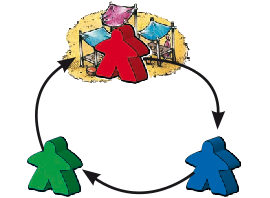
RED draws a tile with a bazaar. She places and deploys a follower to it. Then she uncovers three tiles.
- BLUE is next in the order of play, selects a tile and bids 2 points for it. GREEN passes, while RED bids 3 points. BLUE (the auctioneer) wants to keep the tile, so pays RED (the highest bidder) the 3 points; that is, BLUE reduces her score by 3 and increases that of RED by 3.
- Now GREEN selects a tile and bids 2 points for it. RED bids 3 points, and BLUE cannot bid. GREEN gives him the tile and receives 3 points.RED’s score decreases by 3.
- There is now only one tile left, which GREEN receives for free.
Too few tiles: If a player places a bazaar and there are not enough face-down tiles for all players, no tile auction occurs. The players ignore the bazaar on the tile and the tile is played as normal. [8]
No chain reaction: If, through the placement of a bazaar tile, another bazaar tile is purchased and placed, no further tiles should be uncovered and auctioned. Only when all the uncovered tiles have been allocated and placed can another bazaar take place. [9]
Variation: As many tiles should be uncovered as there are players. Beginning with the next player, in turn each player selects one of the tiles and places it as in a normal turn. This continues until all the uncovered tiles have been allocated, and then the game continues as normal. [10] [11]
![]() Question: What is the order of events if the bazaar tile extends a feature with a builder?
Question: What is the order of events if the bazaar tile extends a feature with a builder?
If you draw a bazaar tile and can perform your builder-turn, first take the appropriate number of face-down tiles and perform the bazaar and the auction. Then a new round with a special property starts – each player has an open and known tile instead of drawing an unknown tile, and you cannot place your abbey as your first tile. If you placed your auctioned tile and you can perform a builder-turn, you can choose to place your abbey or draw a new unknown tile. If any player draws a new bazaar tile [for his or her builder-turn], it will be ignored until the last player who has an auctioned tile finishes his turn (including his builder-turn, if possible). Any pending delayed bazaars will take place now in turn. Once the bazaar rounds are finished, you perform your builder-turn. [12]
In other words:
- Draw bazaar and perform first part of your double turn.
- ** // Start pending bazaars // **
- Draw the tiles (still face-down)
- Turn tiles face-up and perform the auction
- ( Start delaying any new bazaars )
- 1st Player with auctioned tile (if a bazaar tile, no bazaar is triggered)
- 1st player’s builder-turn, if applicable
- Next player with auctioned tile (if a bazaar tile, no bazaar is triggered)
- Next player’s builder-turn, if applicable
- ...
- Last player with auctioned tile (if a bazaar tile, no bazaar is triggered)
- Last player’s builder-turn, if applicable
- ( Stop delaying any new bazaars )
- Player who drew and placed a new bazaar in his/her builder turn (pending delayed bazaar)
- ** Back to // Start pending bazaars // until no pending delayed bazaars **
- Perform your builder-turn (second part of your double turn)
Bridges
During his or her turn, [13] and in addition to placing a tile and deploying a follower, a player may build one bridge. [14] The bridge continues a road; that is, it carries the road over the tiles and counts exactly the same as a road segment on a land tile. [15] [16]
To build a bridge, the following conditions must be met:
- The bridge may be built on the tile which was just placed, or on an adjacent tile which touches it on one side.
- Both ends of the bridge must lie on a field (not on a city, road, river, or so on).
A player may also place the tile so that a road ends at a farm when he or she then continues the road with a bridge. A follower may be deployed to the tile; if the bridge is built on the tile being placed, the follower may be deployed to the bridge. [17] Farms or cities under a bridge are not divided. Also, several bridges may be built next to each other. [18] [19]
Castles
When a player creates a town – which consists of only two semi-circular city segments [20] [21] – the occupier may choose to complete and score it in the usual way (for 4 points), or to convert it into a castle. [22] [23] To convert it, the occupier places one of his or her castle tokens over the city and moves the follower occupying it into the castle. [24] [25] [26] A town which has been converted to a castle is considered to be incomplete.
No points are scored on building a castle. The player receives points only when the first structure (cloister, city, or road) in its vicinity [27] is completed during a subsequent turn. [28] [29] [30] [31] More precisely, a segment of the structure being completed must be one or more of the tiles adjacent to the castle. The adjacent tiles are the two on which the castle lies, the two tiles to its left, and the two to its right - a total of six tiles.
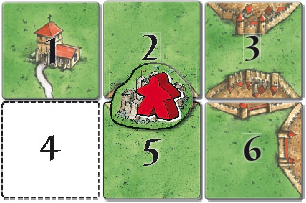
- the CLOISTER on 1
- the ROAD on 1
- the CITY at the top of 3
- the CITY on the right side of 6
The castle is only considered to have been completed when a structure (cloister, city, road, or another castle) which lies on at least one of the six adjacent tiles is completed. The occupier of the structure and the occupier of the castle both receive the full score [32] for the structure. Then the follower from the castle is returned to the player’s supply; the castle token remains where it is.
The following rules are also valid:
- A cloister is only considered to be adjacent when the cloister itself lies on one of the six tiles (such as tile 1 in the examples above); it is not sufficient for one of the eight tiles surrounding the cloister to be adjacent.
- The follower in the castle always receives points for the next structure to be completed. It may not be left in play in order to receive points for a structure which might be completed later.
- It does not matter whether the structure completed actually scores any points. The castle still receives points for a completed structure which is not occupied by a follower. [33]
- Should the placement of a tile simultaneously complete more than one structure adjacent to the castle, the occupier of the castle may decide which of them to receive points for. [34] A castle receives points for only one completed structure.
- As a town which is converted into a castle is not considered to have been completed, it is possible for two occupied castles to be located next to each other. In this case, when one of the castles score points, it counts as a completed structure for the other, and both receive the same points.
- At game end, all uncompleted castles score no points and their followers are removed from the board. A castle gets no points from farms in its vicinity.
- When converting to a castle, it does not matter whether the small city was already occupied by a follower in the first half of the city, or by the active player deploying a follower to the second half during his or her turn.
- Castles separate fields in the same way as a town does.
- A knight on a castle cannot be attacked by the dragon. [35] [36]
- A player can use the wagon to build a castle. [37] If a mayor is on the castle, it does not earn points for the castle, because there is never a pennant there. [38]
When scoring farmers at game end, a castle on a farm scores 4 points (instead of the 3 usual for a city), or 5 points with a pig (![]() Exp. 2 - Traders & Builders) or barn (
Exp. 2 - Traders & Builders) or barn (![]() Exp. 5 - Abbey & Mayor). [39] [40] [41] [42]
Exp. 5 - Abbey & Mayor). [39] [40] [41] [42]
New land tiles
Some new tiles have some special characteristics:
Tile distribution
Footnotes
For Icons explanation and licensing please visit Icons page.
Footnotes
- ↑
 The yellow ground of a bazaar ends a road. This is slightly different from crossings or bushes, as the wagon cannot cross a bazaar to the other side, since it is a feature. (modified 10/2013)
The yellow ground of a bazaar ends a road. This is slightly different from crossings or bushes, as the wagon cannot cross a bazaar to the other side, since it is a feature. (modified 10/2013)
- ↑
 The portion in parentheses is specific to the RGG edition and serves to clarify that the bazaar action occurs at the end of the turn, after scoring, not immediately after tile placement.
The portion in parentheses is specific to the RGG edition and serves to clarify that the bazaar action occurs at the end of the turn, after scoring, not immediately after tile placement.
- ↑
 The bazaar takes place after the tile is drawn and placed. Thus, if the tile cannot be placed and is discarded, the bazaar will not occur. (10/2014)
The bazaar takes place after the tile is drawn and placed. Thus, if the tile cannot be placed and is discarded, the bazaar will not occur. (10/2014)
- ↑
 The HiG edition of
The HiG edition of  Big Box 3 rewords this sentence to state “At the very beginning of the game, it is possible for a player to have fewer than 0 points through an auction.”
Big Box 3 rewords this sentence to state “At the very beginning of the game, it is possible for a player to have fewer than 0 points through an auction.”
- ↑
 The ZMG edition states that “a player may not bid more points than he has,” which is a significant departure from the original rule. (5/2014)
The ZMG edition states that “a player may not bid more points than he has,” which is a significant departure from the original rule. (5/2014)
- ↑
 The RGG edition of
The RGG edition of  Big Box 3 adds, “it could be the same player if he did not buy the tile he chose.”
Big Box 3 adds, “it could be the same player if he did not buy the tile he chose.”
- ↑
 This would allow a player placing a purchased tile onto a city with a builder to draw another tile before others play their auction tiles, as a "double turn" is part of a normal turn.
This would allow a player placing a purchased tile onto a city with a builder to draw another tile before others play their auction tiles, as a "double turn" is part of a normal turn.
- ↑
 This rule is found only in the RGG edition of
This rule is found only in the RGG edition of  Big Box 3.
Big Box 3.
- ↑
 Note that a purchased bazaar tile will not trigger an auction, but any drawn bazaar tile will trigger an auction. Nonetheless, as discussed in the Q&A clarification, the auction may not happen immediately if the drawing of the tile occurred during a builder-turn during a bazaar round.
Note that a purchased bazaar tile will not trigger an auction, but any drawn bazaar tile will trigger an auction. Nonetheless, as discussed in the Q&A clarification, the auction may not happen immediately if the drawing of the tile occurred during a builder-turn during a bazaar round.
- ↑
 The RGG edition of
The RGG edition of  Big Box 3 adds, “Thus, each player places one tile for no cost - thus, no auction!”
Big Box 3 adds, “Thus, each player places one tile for no cost - thus, no auction!”
- ↑
 The ZMG edition states that the variant rule should be used if a bazaar tile is drawn and all players have 0 points (as the ZMG rules do not allow negative scores). (5/2014)
The ZMG edition states that the variant rule should be used if a bazaar tile is drawn and all players have 0 points (as the ZMG rules do not allow negative scores). (5/2014)
- ↑
 There is another version of this rule that states that you perform your builder-turn before the bazaar. This discrepancy (originated from the mistranslation of a clarification from 5/2013) was considered a valid alternative by HiG as it doesn't change the game much. The rationale behind the original rule is that the bazaar is an action derived from the tile placed in the first part of the double turn, so it should be resolved before the builder-turn is carried out. (08/2016)
There is another version of this rule that states that you perform your builder-turn before the bazaar. This discrepancy (originated from the mistranslation of a clarification from 5/2013) was considered a valid alternative by HiG as it doesn't change the game much. The rationale behind the original rule is that the bazaar is an action derived from the tile placed in the first part of the double turn, so it should be resolved before the builder-turn is carried out. (08/2016)
 This variant, described in the CAR and implemented by Digital Versions as of 12/2018, may seem more intuitive to some players. It considers the events in the following order:
This variant, described in the CAR and implemented by Digital Versions as of 12/2018, may seem more intuitive to some players. It considers the events in the following order:
- Draw bazaar and perform first part of your double turn.
- ** // Start pending bazaars // **
- Draw the tiles (still face-down)
- ( Start delaying any new bazaars )
- Perform your builder-turn (second part of your double turn)
- Turn tiles face-up and perform the auction
- 1st Player with auctioned tile (if a bazaar tile, no bazaar is triggered)
- 1st player’s builder-turn, if applicable
- Next player with auctioned tile (if a bazaar tile, no bazaar is triggered)
- Next player’s builder-turn, if applicable
- ...
- Last player with auctioned tile (if a bazaar tile, no bazaar is triggered)
- Last player’s builder-turn, if applicable
- ( Stop delaying any new bazaars )
- Player who drew and placed a new bazaar in his/her builder turn (pending delayed bazaar)
- ** Back to // Start pending bazaars // until no pending delayed bazaars **
- ↑
 Of particular note here is that a specific part of the turn for bridge placement is not specified. Obviously one must be placed immediately after tile placement if the tile placement would otherwise be illegal, and a bridge must be placed before a follower if the follower is to be placed on the bridge. However, one could envision a situation where the bridge is not needed for tile placement (e.g. a straightforward attachment on 1 edge) but for strategic reasons the player later in the turn opts to place a bridge on that tile (or even the adjacent one) such that the bridge ends are on tile edges that do not touch other tiles.
Of particular note here is that a specific part of the turn for bridge placement is not specified. Obviously one must be placed immediately after tile placement if the tile placement would otherwise be illegal, and a bridge must be placed before a follower if the follower is to be placed on the bridge. However, one could envision a situation where the bridge is not needed for tile placement (e.g. a straightforward attachment on 1 edge) but for strategic reasons the player later in the turn opts to place a bridge on that tile (or even the adjacent one) such that the bridge ends are on tile edges that do not touch other tiles.
- ↑
 Note the use of the word “may” in the statement. A player is not required to use a bridge to place a tile, even if that tile would otherwise have to be discarded. The player has the choice to use the bridge to place the tile or just discard the tile. (10/2014)
Note the use of the word “may” in the statement. A player is not required to use a bridge to place a tile, even if that tile would otherwise have to be discarded. The player has the choice to use the bridge to place the tile or just discard the tile. (10/2014)
- ↑
 As with normal roads, each end of the bridge must continue a road segment (or bridge) already in play or must be adjacent to an empty place for a tile. (12/2014)
As with normal roads, each end of the bridge must continue a road segment (or bridge) already in play or must be adjacent to an empty place for a tile. (12/2014)
- ↑
 As the bridge is counted just like a printed road segment, any completed road that includes a bridge and a printed road segment on the same tile still only scores 1 point for the tile. (2/2014)
As the bridge is counted just like a printed road segment, any completed road that includes a bridge and a printed road segment on the same tile still only scores 1 point for the tile. (2/2014)
- ↑
 It is clear from this that the bridge is generally built before deploying a follower.
It is clear from this that the bridge is generally built before deploying a follower.
- ↑
 One tile cannot have 2 bridges running perpendicular to each other. The rules state that the bridge must lie on a field, and if bridges are stacked, one end of the top bridge will not touch the field.
One tile cannot have 2 bridges running perpendicular to each other. The rules state that the bridge must lie on a field, and if bridges are stacked, one end of the top bridge will not touch the field.
- ↑
 A bridge that would potentially span a tower foundation does not prevent the growth of that tower, and that a tower that was already present does not prevent bridge placement. If the two structures would interfere with each other, the tower pieces can be moved so that they are no longer on the tower foundation symbol. Both structures can then be placed without conflict. (11/2013)
A bridge that would potentially span a tower foundation does not prevent the growth of that tower, and that a tower that was already present does not prevent bridge placement. If the two structures would interfere with each other, the tower pieces can be moved so that they are no longer on the tower foundation symbol. Both structures can then be placed without conflict. (11/2013)
- ↑
 This excludes towns which do not consist of two semi-circular segments, such as the CFRF tile with the triangular city segment shown in the Tile Distribution list of this expansion.
This excludes towns which do not consist of two semi-circular segments, such as the CFRF tile with the triangular city segment shown in the Tile Distribution list of this expansion.
This point was confirmed by Christof Tisch (HiG) on BGG:
https://boardgamegeek.com/thread/538079/1-question-about-castles
 This means the following tiles cannot be part of a small city converted into a castle, since the castle token would reveal some city "ruins" from the small city underneath: parts of city walls, city bridges, or even partial city segments:
This means the following tiles cannot be part of a small city converted into a castle, since the castle token would reveal some city "ruins" from the small city underneath: parts of city walls, city bridges, or even partial city segments:
- ↑
 The ZMG rules, however, state that a small city consisting of “two city end segments” would qualify for castle placement, which would allow use of the triangular city segment. (5/2014)
The ZMG rules, however, state that a small city consisting of “two city end segments” would qualify for castle placement, which would allow use of the triangular city segment. (5/2014)
- ↑
 A city under siege (or under attack from Cathars) can be converted to a castle, and it is handled as a normal castle. The siege or Cathar attack is ignored after conversion to a castle.
A city under siege (or under attack from Cathars) can be converted to a castle, and it is handled as a normal castle. The siege or Cathar attack is ignored after conversion to a castle.
- ↑
 Towns are normally occupied by one single follower from one player. However, several followers (from one or more players) may occupy the same town if playing with
Towns are normally occupied by one single follower from one player. However, several followers (from one or more players) may occupy the same town if playing with  Mini #1 - The Flying Machines. In this case, if only one player has the majority in the feature, that player will be the one either scoring it or converting the town into a castle only occupied by the follower(s) of the player with the majority.
Mini #1 - The Flying Machines. In this case, if only one player has the majority in the feature, that player will be the one either scoring it or converting the town into a castle only occupied by the follower(s) of the player with the majority.
Additionally, some special situations may arise when followers from different players share the majority in the same town, since each player may decide differently. So, we may encounter the following scenarios:- All the players with the majority decide to score the town: The city will be scored as usual taking into account the majority in the feature.
- All the players with the majority decide to convert the town into a castle: The resulting castle will have several occupiers (the followers from the players sharing the majority in the town). If the castle is completed eventually, all the players sharing the castle will score points for it.
- Some of the players sharing the majority decide to score the town and the rest choose to convert it into a castle: The players scoring the city will apply the majority without taking into consideration those followers from players who decided to convert the town into a castle. After scoring, the followers involved will be returned to their owners. The castle will be created only with the followers of the players who decided to convert the town. If the castle is completed eventually, all the players sharing the castle will score points for it.
- Deploying followers from the city of Carcassonne: If playing with
 The Count of Carcassonne, players will be allowed to deploy followers from the city of Carcassonne to the town if at least one player is scoring it. All these additional followers will participate in the scoring only. They cannot be deployed to the town to later occupy the resulting castle if any player decided to convert it instead of scoring the town.
The Count of Carcassonne, players will be allowed to deploy followers from the city of Carcassonne to the town if at least one player is scoring it. All these additional followers will participate in the scoring only. They cannot be deployed to the town to later occupy the resulting castle if any player decided to convert it instead of scoring the town. - Castle tokens: Each player who chose to convert the town into a castle will have to place a castle token from their supply on top of the town. No player can keep their castle token for a later use because other player was placing theirs. As an alternative, instead of stacking the castle tokens, you may place only one of them and remove the rest from the game.
This means that a player without any castle tokens in their supply cannot decide to convert a shared town into a castle. In this case, the player can only score the town.
- ↑
 When placing a castle on these tiles from The Tower, you may need to move a tower on them a bit aside.
When placing a castle on these tiles from The Tower, you may need to move a tower on them a bit aside.
- ↑
 Note that this is after the Move Wood phase and does not itself constitute a Move Wood phase (and might not even involve the active player). (5/2013)
Note that this is after the Move Wood phase and does not itself constitute a Move Wood phase (and might not even involve the active player). (5/2013)
- ↑
 The ZMG rules refer to this follower as a "lord". The HiG rules continue to call this follower a knight, as he was in the city. (5/2014)
The ZMG rules refer to this follower as a "lord". The HiG rules continue to call this follower a knight, as he was in the city. (5/2014)
- ↑
 The ZMG rules call the vicinity of the castle its "fief". (5/2014)
The ZMG rules call the vicinity of the castle its "fief". (5/2014)
- ↑
 The RGG version of the rules states that the castle scores only "when the first feature … in the vicinity of the castle is later completed" (emphasis added) – while a subsequent turn is not specifically mentioned, it seems apparent in both rule sets that a feature that is completed on the turn that the castle is built does not allow the castle to score.
The RGG version of the rules states that the castle scores only "when the first feature … in the vicinity of the castle is later completed" (emphasis added) – while a subsequent turn is not specifically mentioned, it seems apparent in both rule sets that a feature that is completed on the turn that the castle is built does not allow the castle to score.
- ↑
 When playing with
When playing with  Monasteries in Germany /
Monasteries in Germany /  Monasteries in the Netherlands & Belgium: Because an abbot scores only at the end of the game, and this monastery is never considered completed, a monastery with an abbot will not score points for a follower in a castle. (5/2014)
Monasteries in the Netherlands & Belgium: Because an abbot scores only at the end of the game, and this monastery is never considered completed, a monastery with an abbot will not score points for a follower in a castle. (5/2014)
 These monasteries can only be completed if unoccupied or if occupied by at least one monk (no matter if other followers are placed as abbots on the same feature). A monastery will not be considered completed when surrounded by tiles if only occupied by followers placed as abbots.
These monasteries can only be completed if unoccupied or if occupied by at least one monk (no matter if other followers are placed as abbots on the same feature). A monastery will not be considered completed when surrounded by tiles if only occupied by followers placed as abbots.
- ↑
 When playing with
When playing with  Little Buildings: A castle will score points for a completed feature in its vicinity as usual, including any points that the feature may receive for Little Buildings placed on the feature tiles. However, the castle will not receive additional points for any Little Buildings placed on the tiles in its fief. In a nutshell, a castle may receive points from Little Buildings through a completed feature, but not directly from the Little Buildings in its fief.
Little Buildings: A castle will score points for a completed feature in its vicinity as usual, including any points that the feature may receive for Little Buildings placed on the feature tiles. However, the castle will not receive additional points for any Little Buildings placed on the tiles in its fief. In a nutshell, a castle may receive points from Little Buildings through a completed feature, but not directly from the Little Buildings in its fief.
- ↑
 This reference to "subsequent turn" should be interpreted as a later round of scoring, that is, you cannot create a castle and score it right away. So at least one tile placement has to happen before the castle can be scored. With this in mind, during a double turn (technically one turn with two parts), you would be able to create a castle in the first part of your turn and score it as soon as the second part of the same turn. There is no provision in the rules for ignoring completed features after the castle is created, only during the same round of scoring the castle is created. Check the following example:
This reference to "subsequent turn" should be interpreted as a later round of scoring, that is, you cannot create a castle and score it right away. So at least one tile placement has to happen before the castle can be scored. With this in mind, during a double turn (technically one turn with two parts), you would be able to create a castle in the first part of your turn and score it as soon as the second part of the same turn. There is no provision in the rules for ignoring completed features after the castle is created, only during the same round of scoring the castle is created. Check the following example:
- You place a tile that extends a city with your builder and completes a town that you turn into a castle (claimed by you, of course). The builder grants you a double turn.
- During the second part of your double turn, you complete another feature in the castle fief and you score the feature and the castle created in the first part of the turn.
 Mini #2 - The Messages:
Mini #2 - The Messages:
- You place a tile that completes a town and another feature. You turn the town into a castle and score the other feature. After scoring your scoring meeple lands on a dark space and you receive Message 7.
- You draw a new tile that completes another feature in the fief of the castle just created on this turn. The Message is dispatched on the very same turn but it creates a new round of scoring. As a result, you score the completed feature and the castle.
- ↑
 This is after any bonuses or penalties (such as the Cathedral or Witch) are accounted for. (4/2014)
This is after any bonuses or penalties (such as the Cathedral or Witch) are accounted for. (4/2014)
- ↑
 Note that this statement essentially indicates that points are tallied for all completed features, even unoccupied ones. However, generally nobody scores (receives those points) for an unoccupied feature. (2/2015)
Note that this statement essentially indicates that points are tallied for all completed features, even unoccupied ones. However, generally nobody scores (receives those points) for an unoccupied feature. (2/2015)
- ↑
 In practical terms, this would probably mean the same as choosing the completed structure worth the most points.
In practical terms, this would probably mean the same as choosing the completed structure worth the most points.
- ↑
 Followers in castles are safe from towers, the dragon, and the plague, as those things affect the tile directly, and castles are not present on a specific tile.
Followers in castles are safe from towers, the dragon, and the plague, as those things affect the tile directly, and castles are not present on a specific tile.
- ↑
 An additional bullet point rule added to
An additional bullet point rule added to  Big Box 3 stated “A player can place the fairy in a castle. If it is there during the castle scoring, it scores 3 points for the player.” However, according to official clarifications, this rule is incorrect. The fairy cannot be placed in a castle, as it should only be placed on features on a discrete tile.
Big Box 3 stated “A player can place the fairy in a castle. If it is there during the castle scoring, it scores 3 points for the player.” However, according to official clarifications, this rule is incorrect. The fairy cannot be placed in a castle, as it should only be placed on features on a discrete tile.
Note: the New Edition has reverted this ruling and allows you to place the fairy next to a follower in a castle. - ↑
 The RGG
The RGG  Big Box 3 stated that the “wagon effect” could be used to build a castle, suggesting that the special wagon move could allow a castle to be built outside of the normal turn order or could violate the requirement that the feature receiving the wagon be incomplete, but this is not the case. (01/2015)
Big Box 3 stated that the “wagon effect” could be used to build a castle, suggesting that the special wagon move could allow a castle to be built outside of the normal turn order or could violate the requirement that the feature receiving the wagon be incomplete, but this is not the case. (01/2015)
- ↑
 The last 3 bullet points were first included in the
The last 3 bullet points were first included in the  Big Box 3 edition of the rules.
Big Box 3 edition of the rules.
- ↑
 The pig-herd tile may also grant an extra point to farms for each castle in the field (see
The pig-herd tile may also grant an extra point to farms for each castle in the field (see  River II and
River II and  Games Quarterly #11). This was confirmed in the
Games Quarterly #11). This was confirmed in the  Big Box 3 edition of the rules.
Big Box 3 edition of the rules.
- ↑
 The RGG
The RGG  Big Box 3 scoring guide at the end of the rules claims that farms only score points for completed castles, but this is presumably a misprint, as there is no indication in the rules that this is actually true (especially as followers from incomplete castles are removed, so there would be no way to tell which castles were incomplete and which were complete when scoring farms).
Big Box 3 scoring guide at the end of the rules claims that farms only score points for completed castles, but this is presumably a misprint, as there is no indication in the rules that this is actually true (especially as followers from incomplete castles are removed, so there would be no way to tell which castles were incomplete and which were complete when scoring farms).
- ↑
 Castles do not count as cities for the purposes of scoring for the King. Castles do count for scoring of the Famine sector of
Castles do not count as cities for the purposes of scoring for the King. Castles do count for scoring of the Famine sector of  The Wheel of Fortune, as this is effectively a scoring of farms. Followers from the City of Carcassonne cannot move to a castle.
The Wheel of Fortune, as this is effectively a scoring of farms. Followers from the City of Carcassonne cannot move to a castle.
- ↑
 A city under siege (or under attack from Cathars) can be converted to a castle, and it is handled as a normal castle. The siege or Cathar attack is ignored after conversion to a castle.
A city under siege (or under attack from Cathars) can be converted to a castle, and it is handled as a normal castle. The siege or Cathar attack is ignored after conversion to a castle.
- ↑
 Any follower in a city is a knight. This includes normal followers, big followers, mayors, wagons, ringmasters, and phantoms. (01/2015, updated 1/2019)
Any follower in a city is a knight. This includes normal followers, big followers, mayors, wagons, ringmasters, and phantoms. (01/2015, updated 1/2019)
- ↑
 Inns on a tile will not affect a bridge placed on the same tile. The inn only affects the printed road segment(s) next to it. However, the bridge will profit from an inn, the same as any other printed road segment, if they are part of the same road network.
Inns on a tile will not affect a bridge placed on the same tile. The inn only affects the printed road segment(s) next to it. However, the bridge will profit from an inn, the same as any other printed road segment, if they are part of the same road network.
 Question: Inns affect those road segments they are on, that is, directly adjacent to. So a bridge placed on a tile with an inn would not be affected by the bridge, since the inn would not be accessible from the bridge. Is this correct? See tile examples from Exp. 8 below.
Question: Inns affect those road segments they are on, that is, directly adjacent to. So a bridge placed on a tile with an inn would not be affected by the bridge, since the inn would not be accessible from the bridge. Is this correct? See tile examples from Exp. 8 below.
Hills & Sheep
{{:Hills_%26_Sheep_(1st_edition)/en}}
Footnotes
The Wheel of Fortune
Warning: Default sort key "The Wheel of Fortune (1st edition)" overrides earlier default sort key "Bridges, Castles and Bazaars (1st edition)".
 |
You are reading the rules for this tile design. |  |
| This standalone playable expansion was not published in other editions. |
| If your tiles have a different design, then choose a game from Spin-offs. |  |
General info and comments
The precise status of this set is difficult to define, as it is both a stand-alone game and an expansion. That is, it contains enough pieces and figures to be used instead of the basic game, but it could also be used along with it. For example, it contains a scoreboard and 40 followers in 5 colors. Those who consider it to be ‘too much of a stand-alone' game might consider just using the 19 tiles with Wheel of Fortune icons. The rules are identical to the basic game, except for those noted below.

The Wheel of Fortune was originally released by Hans im Glück in 2009.
It was later included in ![]() Big Box 5 in a slightly revised format, the details of which can be read about in this forum thread.
Big Box 5 in a slightly revised format, the details of which can be read about in this forum thread.
Contents
- 72 land tiles, 19 of which have Wheel of Fortune icons
- 1 Wheel of Fortune (4x4 tiles) [1] [2] [3]
- 1 big pink pig
Rules
Preparation
The Wheel of Fortune tile is placed in the middle of the table. The big pig should be placed on the ‘fortune' section of the wheel, its nose pointed to the right. This tile is also the starting tile, which land tiles must be connected to at the beginning of the game (and may be later as well). All land segments on this tile count towards scoring as usual.
Placing a tile
a) The player must draw a new land tile. If a tile with a Wheel of Fortune icon is drawn, the appropriate actions are performed (see below). [4]
b) The player must place the land tile.
Deploying a follower
If a player has not placed a follower on a land tile, he or she may place one follower on any free crown space on the Wheel of Fortune. No more than one follower may be placed on a crown space.
Wheel of Fortune tiles
When a player draws a land tile with a colored Wheel of Fortune icon, it should be placed in front of him- or herself. Then the following actions occur:
- 1. The big pig is moved around the wheel sectors the same number of times as shown on the icon.
- 2. The events of the Wheel of Fortune are performed
- 3. Followers on crown spaces are scored and returned
- 4. The land tile is placed and a follower may be deployed (in other words, the turn continues as normal)
1. Move the pig
The player moves the big pig forward as many wheel segments as the number on the tile which was drawn. The pig is always moved clockwise around the wheel.
2. Perform events
The Wheel of Fortune has six sectors. Each represents a distinct event. Only the sector on which the big pig ended its movement is activated. The fortune event affects only the player whose turn it is, while the others affect all players.
Every player receives points for his or her knights. [5] For each knight, the player earns 1 point for each pennant in the city, plus 1 point for each of his/her knights in the city.
Every player receives 1 point for every follower currently in his or her supply. [9]
Every player must return 1 follower from a land tile to his or her supply. Followers may not be removed from a crown space. The player whose turn it is removes a follower first, and the other players follow in a clockwise order.
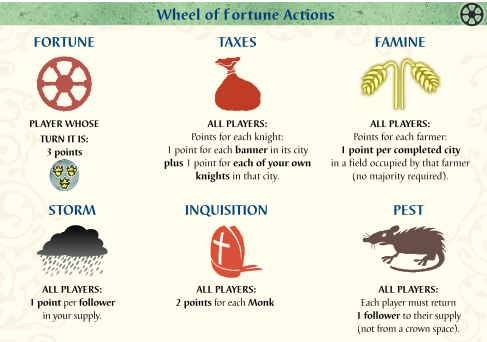
3. Score followers on crown spaces
Now the crown spaces in the active sector are scored. Followers on segments which the pig passed are not scored and remain where they are.
4. Complete the turn
Now the player whose turn it is may place the land tile and deploy a follower to it as he or she wishes. The follower may also be deployed (again) to a crown plinth on the Wheel of Fortune.
Starting tiles [12]
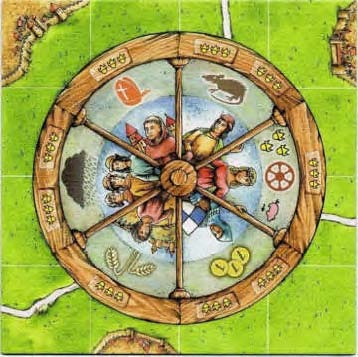
The original version of Wheel of Fortune included a Wheel that included text and a brief description of what each sector did. In ![]() Big Box 5, that version of the Wheel was replaced with one that didn’t have to be translated, but required players to look at the instruction manual to figure out what each icon meant. Interestingly, the
Big Box 5, that version of the Wheel was replaced with one that didn’t have to be translated, but required players to look at the instruction manual to figure out what each icon meant. Interestingly, the ![]() Big Box 5 rule book included a slightly different version of the Wheel than was ultimately produced, as the ambiguous sack was converted into 3 coins.
Big Box 5 rule book included a slightly different version of the Wheel than was ultimately produced, as the ambiguous sack was converted into 3 coins.
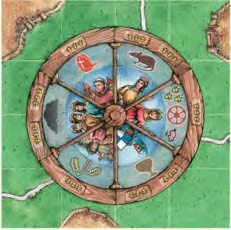
House rules
![]() Do not use the Wheel of Fortune as the starting tile, placing it instead to one side (for example, next to the scoreboard). The principle benefit of this is to preserve the integrity of the playing area, since every other visible feature is at least semi-realistic. You might also consider turning the tile over and using the more abstract design on the reverse.
Do not use the Wheel of Fortune as the starting tile, placing it instead to one side (for example, next to the scoreboard). The principle benefit of this is to preserve the integrity of the playing area, since every other visible feature is at least semi-realistic. You might also consider turning the tile over and using the more abstract design on the reverse.
Tile distribution
Notes:
- Tiles with underlined values exist in several forms that vary only by the number in the Wheel of Fortune icon
- Tiles with italicised values are those which originate in other expansions
From the original product description:
"Carcassonne: Das Schicksalsrad (Wheel of Fortune) is both a full replacement for the base game of Carcassonne and an expansion to the original base game. It includes 72 tiles, consisting of 63 tiles released in the original base game, 6 from
Inns & Cathedrals, 1 from
Traders & Builders and 2 from
King and Robber."
![]() Big Box 5 tiles:
Big Box 5 tiles:
In ![]() Big Box 5, not all Wheel of Fortune tiles have the wheel symbol on them. Because Big Box 5 also includes the (full) base game, any tiles that were identical between the 2 sets (ignoring numbered wheel symbols) do not have the wheel symbol even if they have a numbered wheel symbol. If playing the base game, the players are instructed to ignore the numbered wheel symbols. The only tiles with the wheel symbol are those which are entirely different from the ones in the base game, although some of these do not have a numbered wheel symbol.
Big Box 5, not all Wheel of Fortune tiles have the wheel symbol on them. Because Big Box 5 also includes the (full) base game, any tiles that were identical between the 2 sets (ignoring numbered wheel symbols) do not have the wheel symbol even if they have a numbered wheel symbol. If playing the base game, the players are instructed to ignore the numbered wheel symbols. The only tiles with the wheel symbol are those which are entirely different from the ones in the base game, although some of these do not have a numbered wheel symbol.
The overall distribution in Big Box 5 is:
- No Wheel Symbol: 9x, all with expansion symbol – (none of these belong to the standard Carcassonne base game.)
Footnotes
For Icons explanation and licensing please visit Icons page.
Footnotes
- ↑
 The dragon can fly around the outside of the Wheel of Fortune, treating the landscape areas as normal tiles and eating any followers on those tiles. Followers on the Wheel of Fortune itself are unaffected. This represents a notable change from previous FAQs. (10/2012)
The dragon can fly around the outside of the Wheel of Fortune, treating the landscape areas as normal tiles and eating any followers on those tiles. Followers on the Wheel of Fortune itself are unaffected. This represents a notable change from previous FAQs. (10/2012)
- ↑
 Followers can be deployed to Wheel of Fortune tiles on features outside the Wheel of Fortune, for example through use of a magic portal or as a flier. (1/2013)
Followers can be deployed to Wheel of Fortune tiles on features outside the Wheel of Fortune, for example through use of a magic portal or as a flier. (1/2013)
- ↑
 Given new interpretations regarding placement of the dragon and followers on features outside the Wheel of Fortune, it seems that the plague should also be allowed on the outside portion of these tiles. However, this is unofficial. (1/2013)
Given new interpretations regarding placement of the dragon and followers on features outside the Wheel of Fortune, it seems that the plague should also be allowed on the outside portion of these tiles. However, this is unofficial. (1/2013)
- ↑
 Note that the Wheel of Fortune icon interrupts the first phase of the turn (drawing and placing the landscape tile). The Wheel of Fortune event thus occurs before there is consideration for tile placement. Hence, even if the landscape tile cannot be played and is ultimately discarded, the Wheel of Fortune event will have already occurred anyway. (10/2014)
Note that the Wheel of Fortune icon interrupts the first phase of the turn (drawing and placing the landscape tile). The Wheel of Fortune event thus occurs before there is consideration for tile placement. Hence, even if the landscape tile cannot be played and is ultimately discarded, the Wheel of Fortune event will have already occurred anyway. (10/2014)
- ↑
 Any follower that is placed in a city, including the Mayor or a Wagon, is considered to be a knight.
Any follower that is placed in a city, including the Mayor or a Wagon, is considered to be a knight.
- ↑
 Barns do not receive a score for Famine. Barns are not followers, so they are not farmers. (5/2013)
Barns do not receive a score for Famine. Barns are not followers, so they are not farmers. (5/2013)
- ↑
 Additional bonus points for pig, pig herd, and castles are also given. (confirmed 5/2013)
Additional bonus points for pig, pig herd, and castles are also given. (confirmed 5/2013)
- ↑
 This sentence, first found in
This sentence, first found in  Big Box 5, represents a change from previous versions. Previously, only a player with a majority on the farm was allowed to score the points. (12/2014)
Big Box 5, represents a change from previous versions. Previously, only a player with a majority on the farm was allowed to score the points. (12/2014)
- ↑
 Opponent's followers captured by towers are not part of a player's supply (they are just placed in front of the player). Therefore, captured followers should not be considered for the Storm action.
Opponent's followers captured by towers are not part of a player's supply (they are just placed in front of the player). Therefore, captured followers should not be considered for the Storm action.
- ↑
 Heretics receive no points. Shrines and all other monastic buildings (cloisters, abbeys...) are treated equally, but points are awarded for the role of the follower. Monks only exist in cloisters, abbeys, German monasteries, Dutch and Belgian monasteries, Japanese buildings and Darmstadt churches.
Heretics receive no points. Shrines and all other monastic buildings (cloisters, abbeys...) are treated equally, but points are awarded for the role of the follower. Monks only exist in cloisters, abbeys, German monasteries, Dutch and Belgian monasteries, Japanese buildings and Darmstadt churches.
- ↑
 There is no official clarification stating whether special monasteries (German monasteries, Dutch & Belgian monasteries and Japanese buildings) with a follower placed as an abbot/claustral prior would receive points. The original rules were created before the special monasteries where released, so this case is not considered. However, the rules contain no limitations that would prevent players from considering special monasteries with a follower placed as an abbot/claustral prior. In this case, we will apply the general rule provided by Georg Wild:
There is no official clarification stating whether special monasteries (German monasteries, Dutch & Belgian monasteries and Japanese buildings) with a follower placed as an abbot/claustral prior would receive points. The original rules were created before the special monasteries where released, so this case is not considered. However, the rules contain no limitations that would prevent players from considering special monasteries with a follower placed as an abbot/claustral prior. In this case, we will apply the general rule provided by Georg Wild:
"If an older expansion only mentions the word monk, this does not exclude followers placed as an abbot/claustral prior on a German monastery. (7/2014)"
This will also apply to Japanese Buildings and Dutch & Belgian monasteries. Please see:
http://www.carcassonnecentral.com/community/index.php?topic=781.msg9971#msg9971
- ↑
 Question: Does the rim of the Wheel of Fortune end a road? Answer: Yes, the road ends / starts at the rim of the Wheel of Fortune. (10/2015)
Question: Does the rim of the Wheel of Fortune end a road? Answer: Yes, the road ends / starts at the rim of the Wheel of Fortune. (10/2015)
